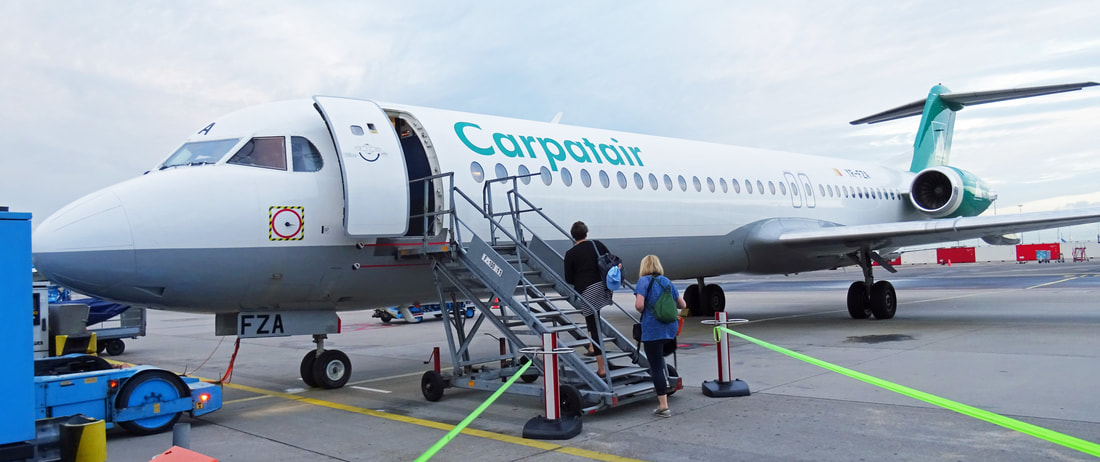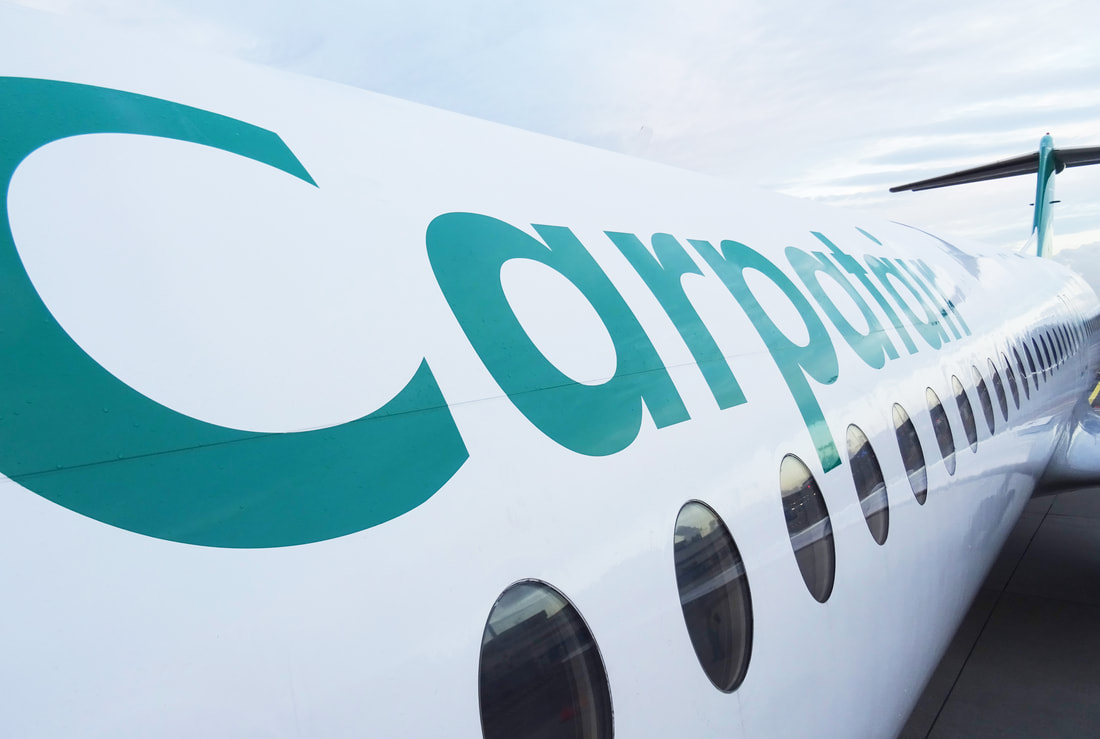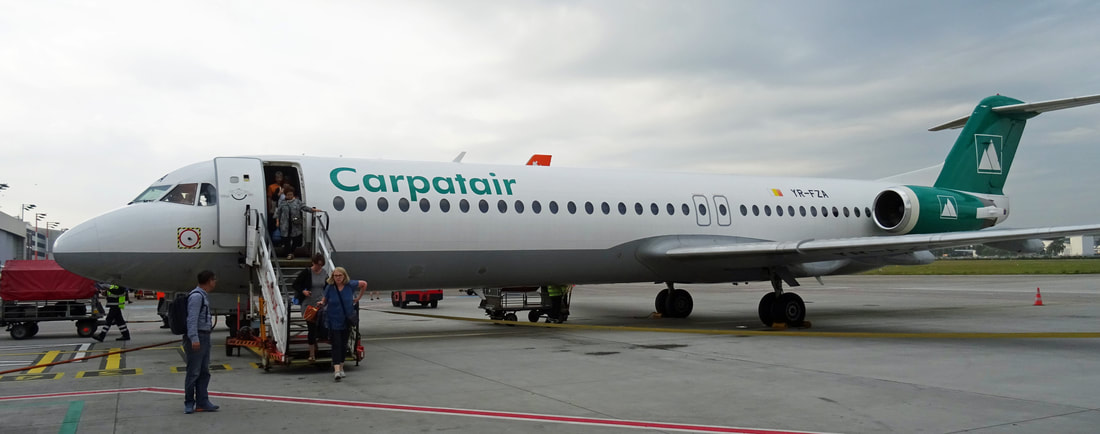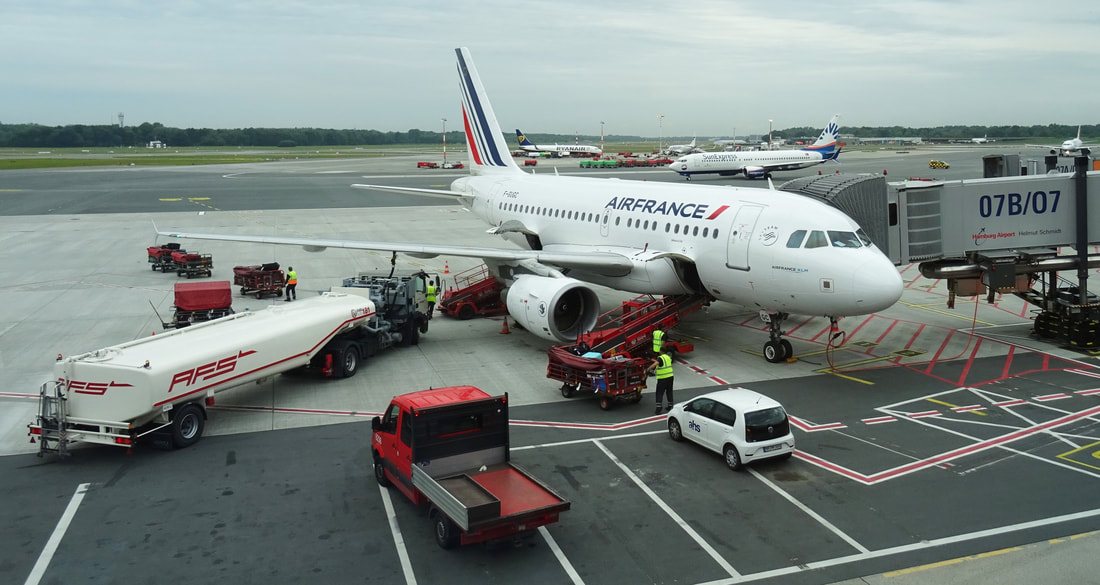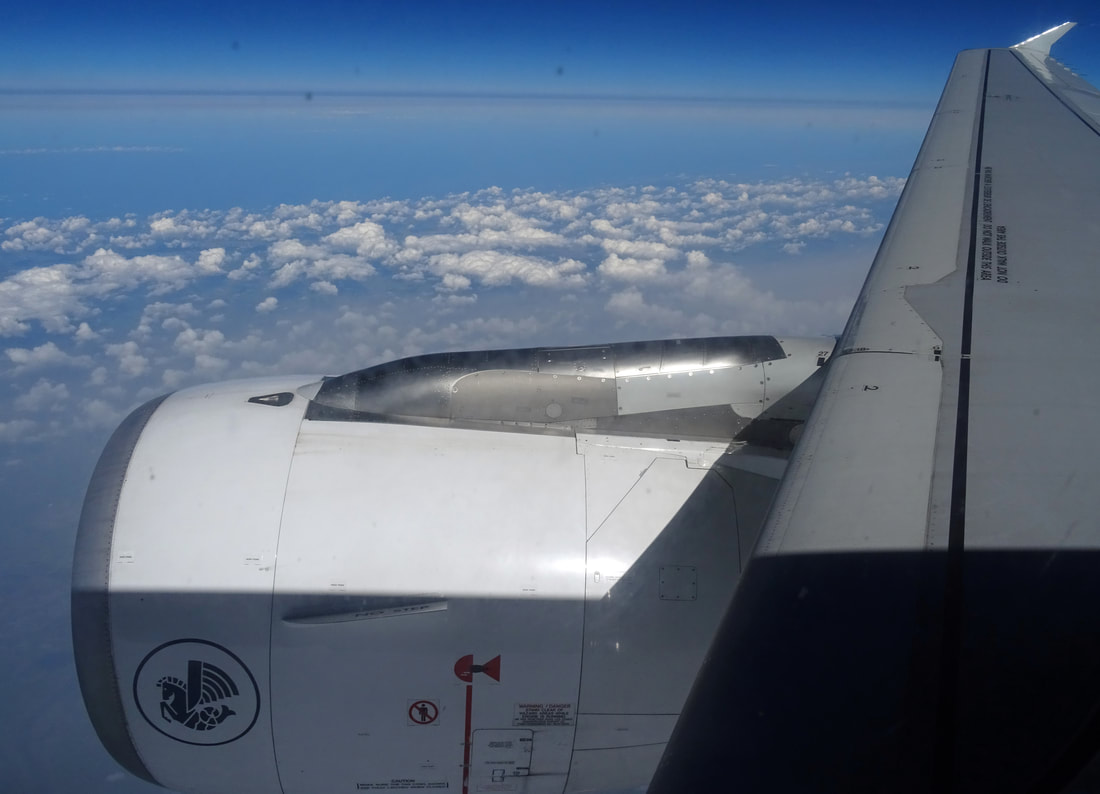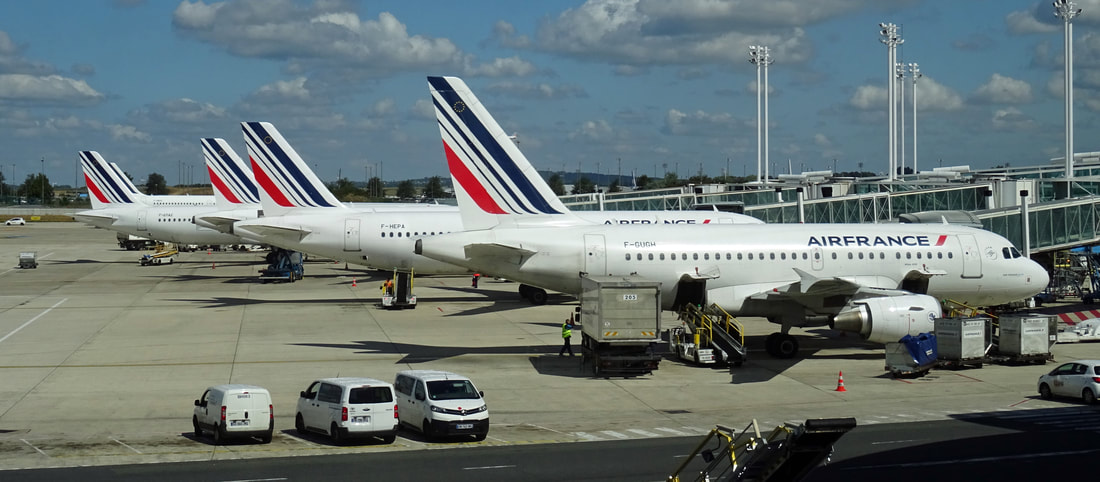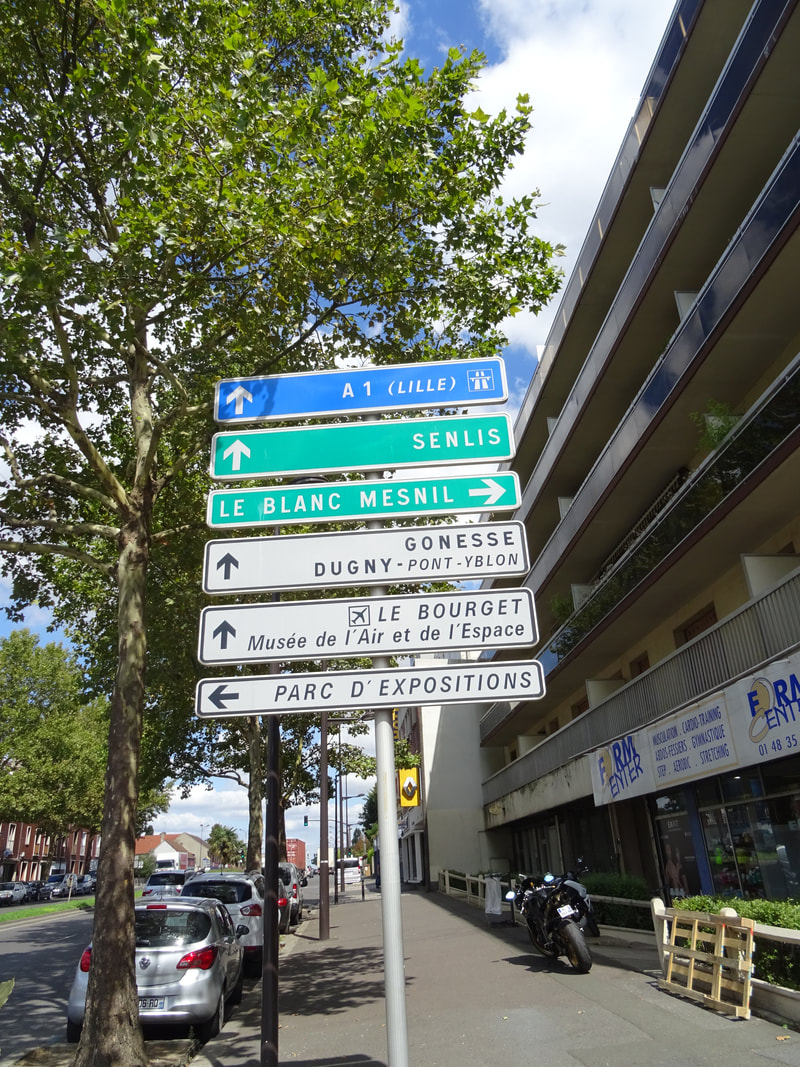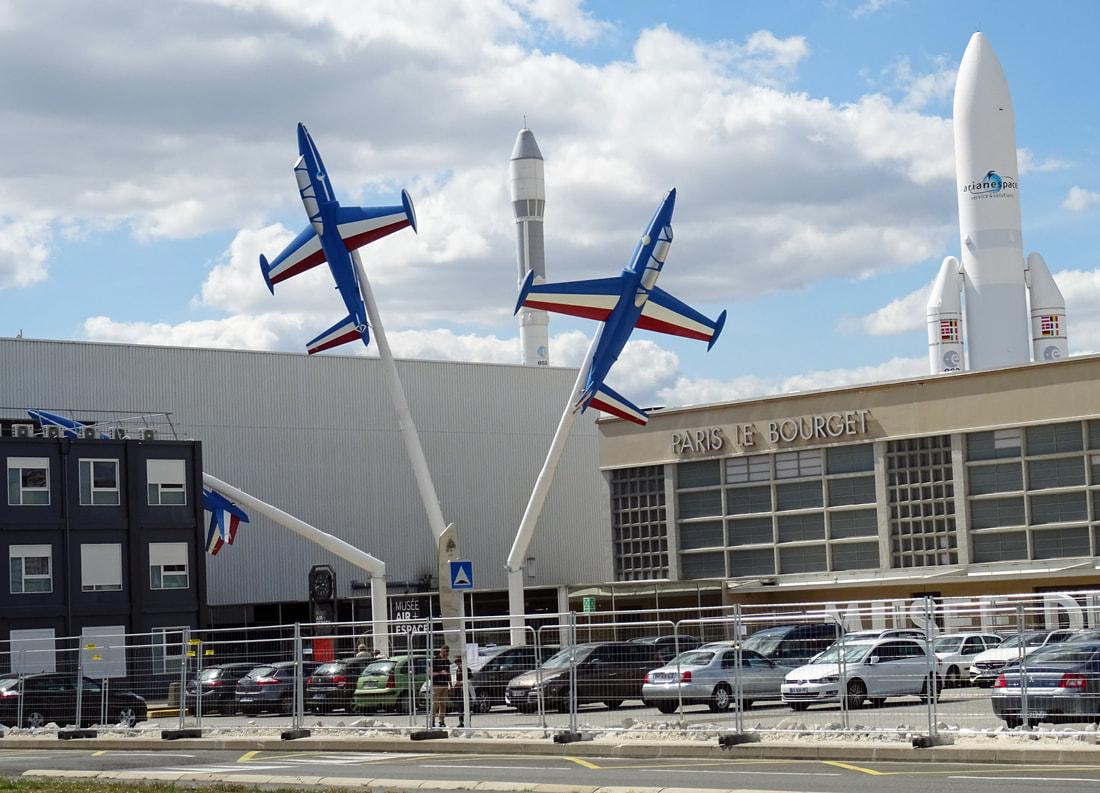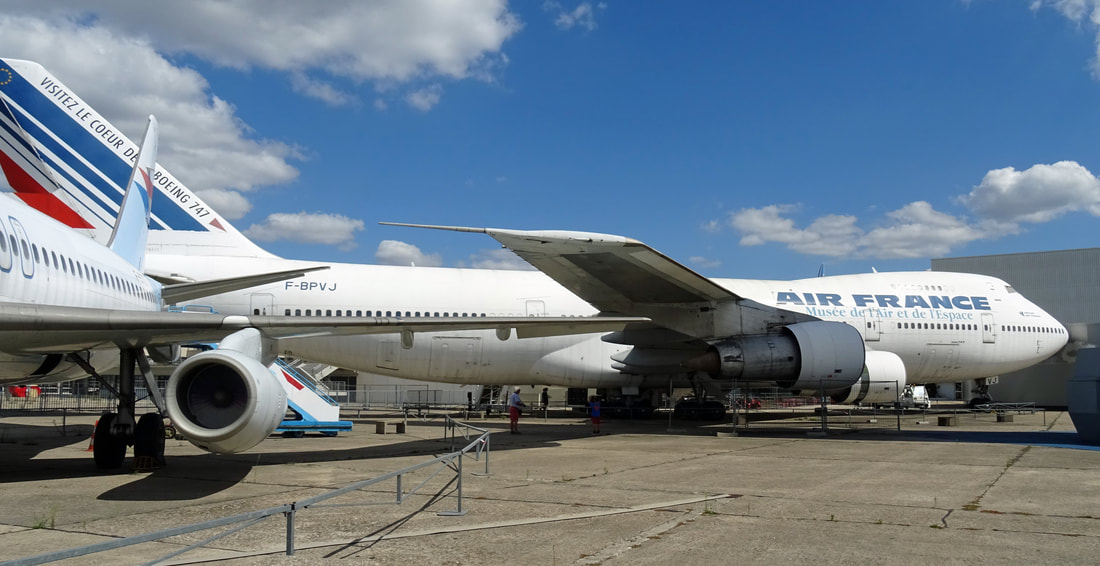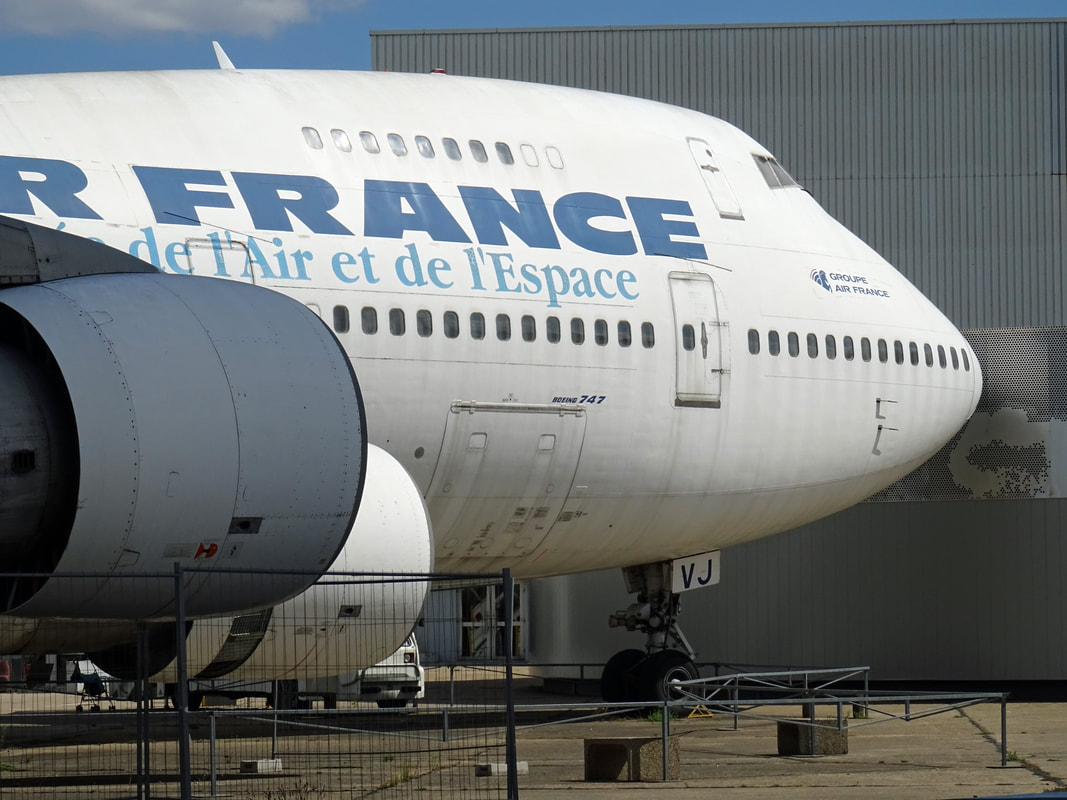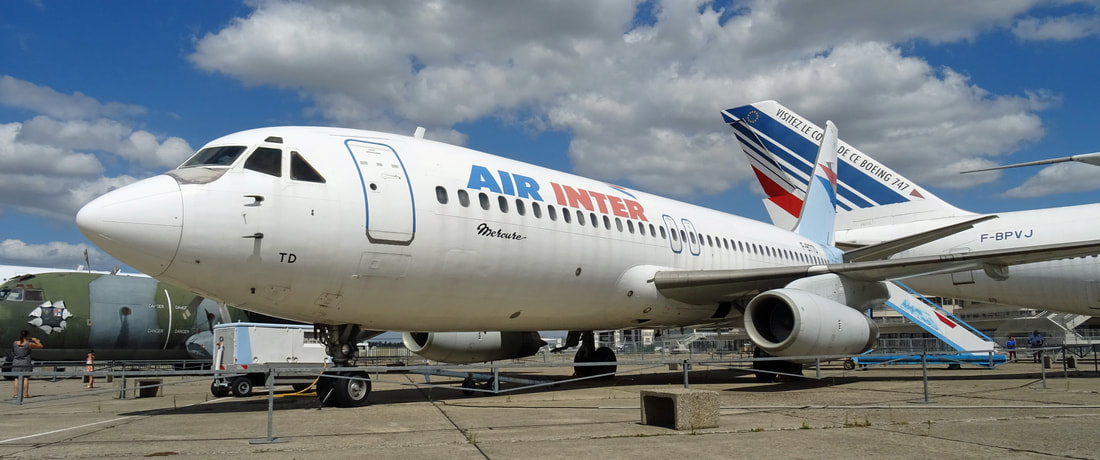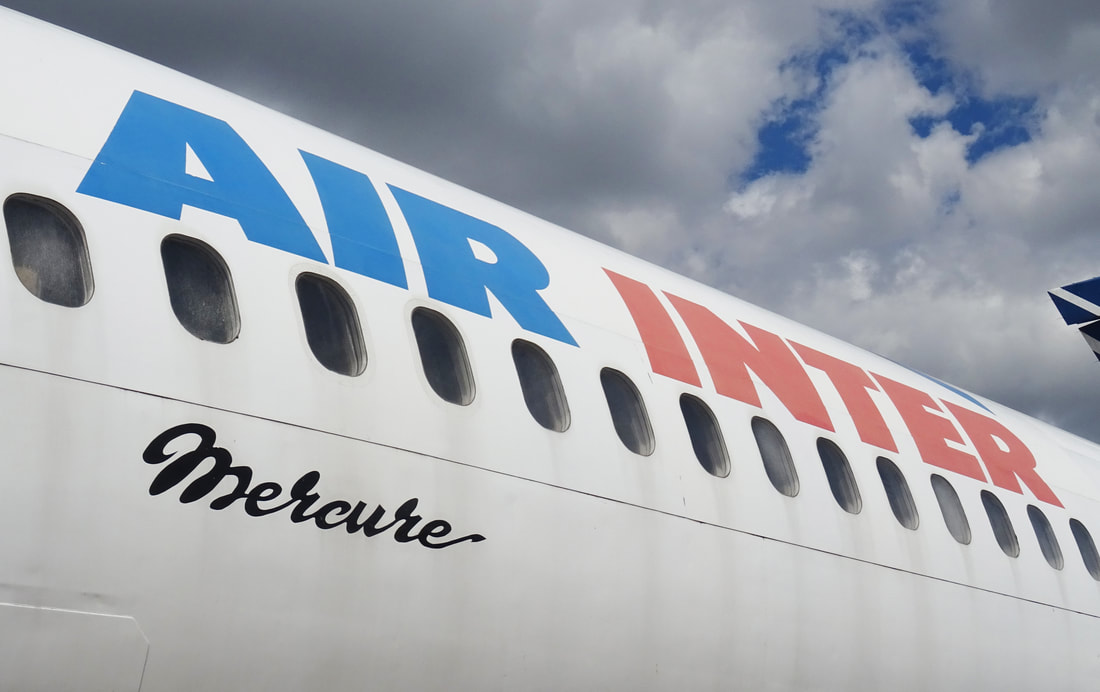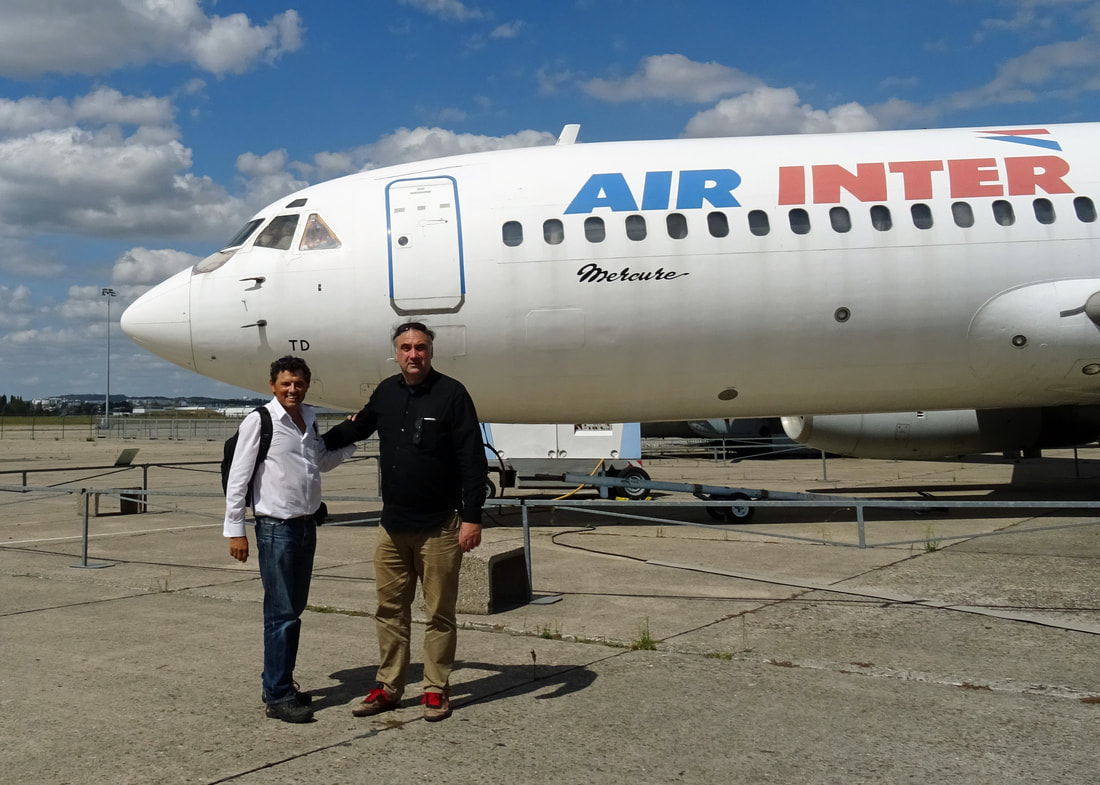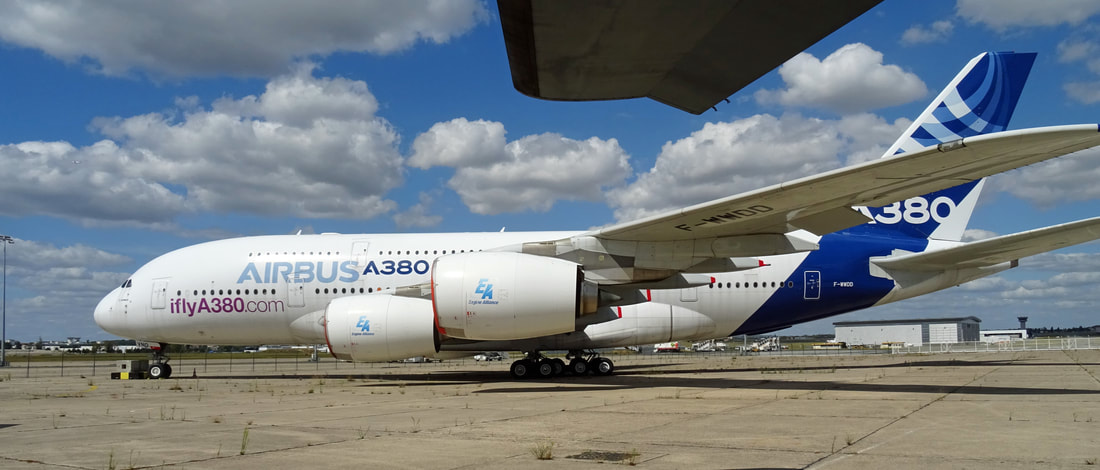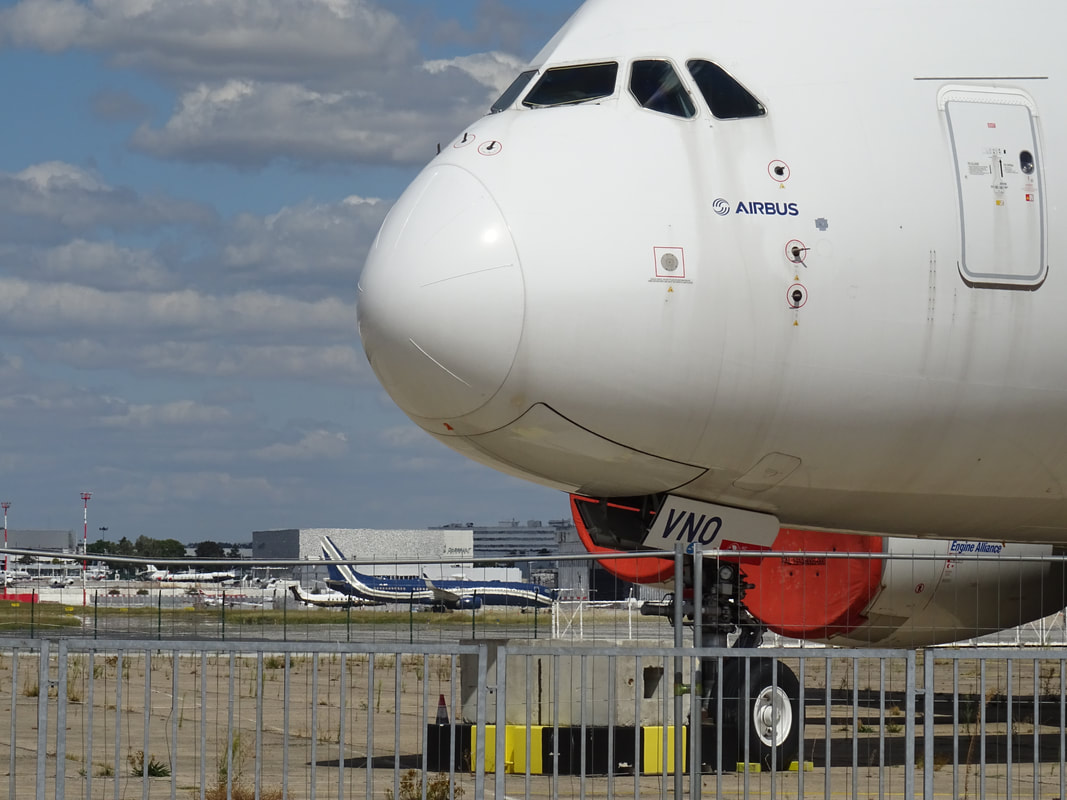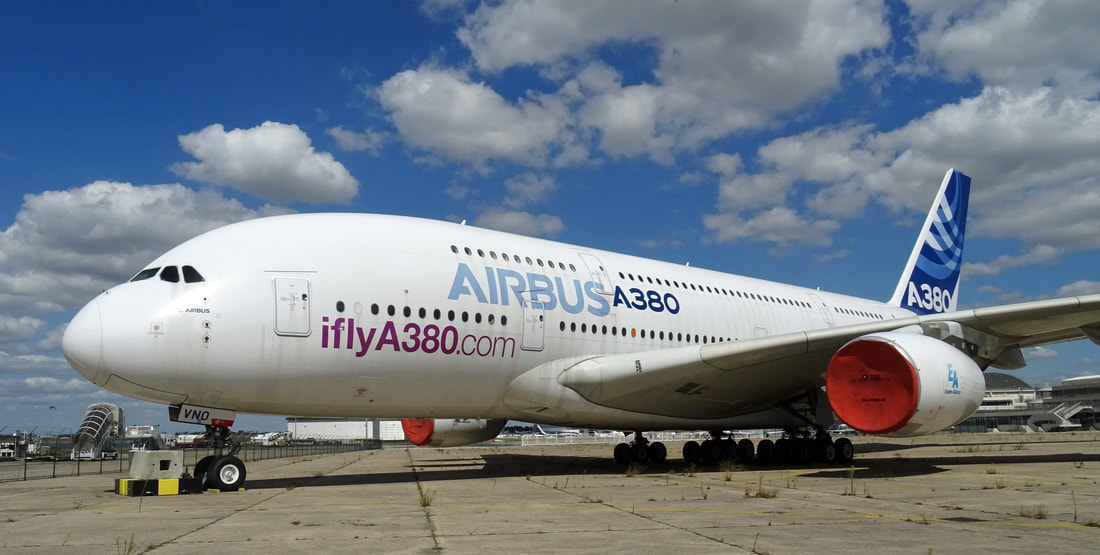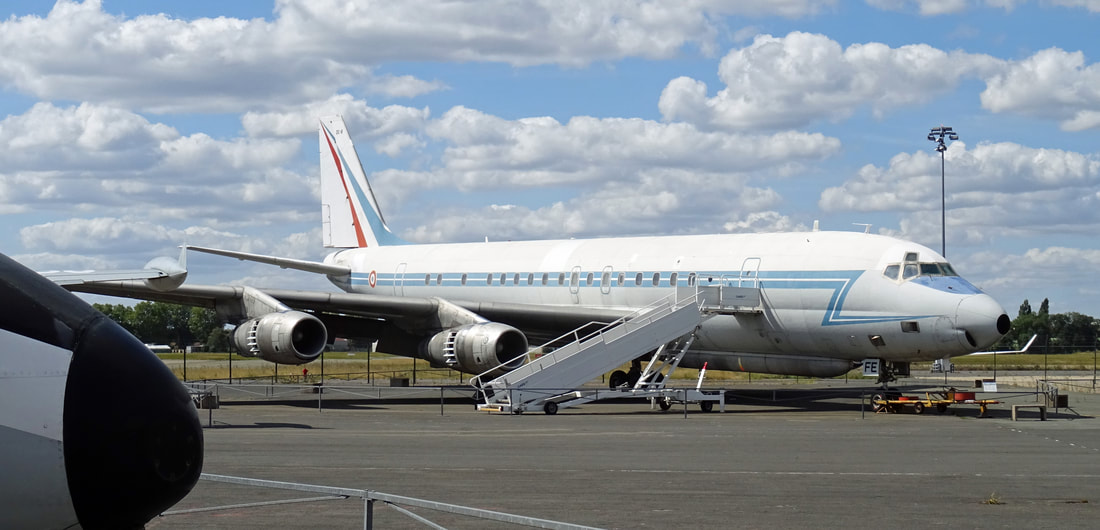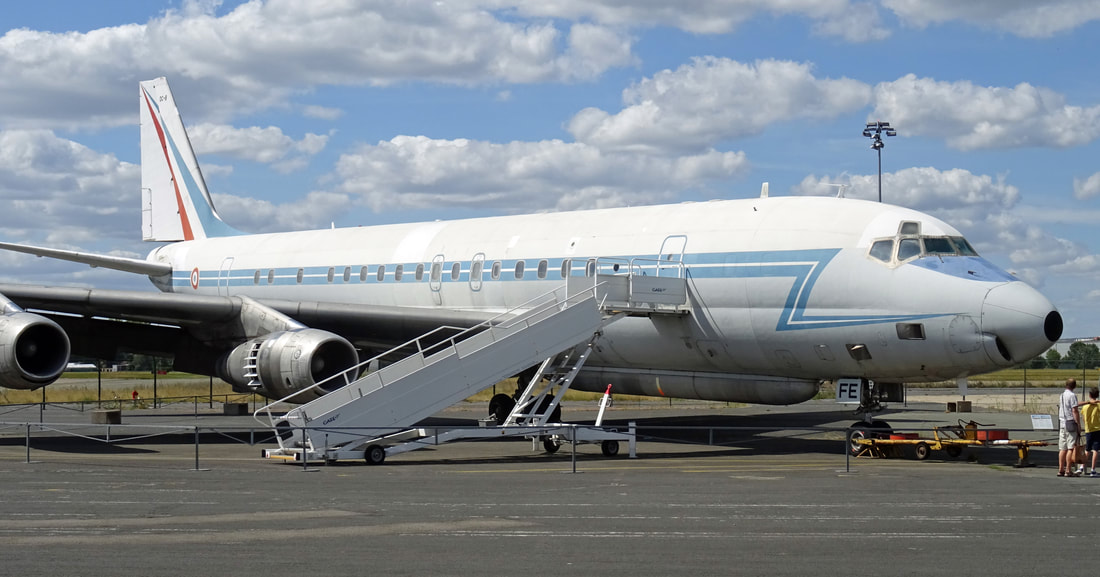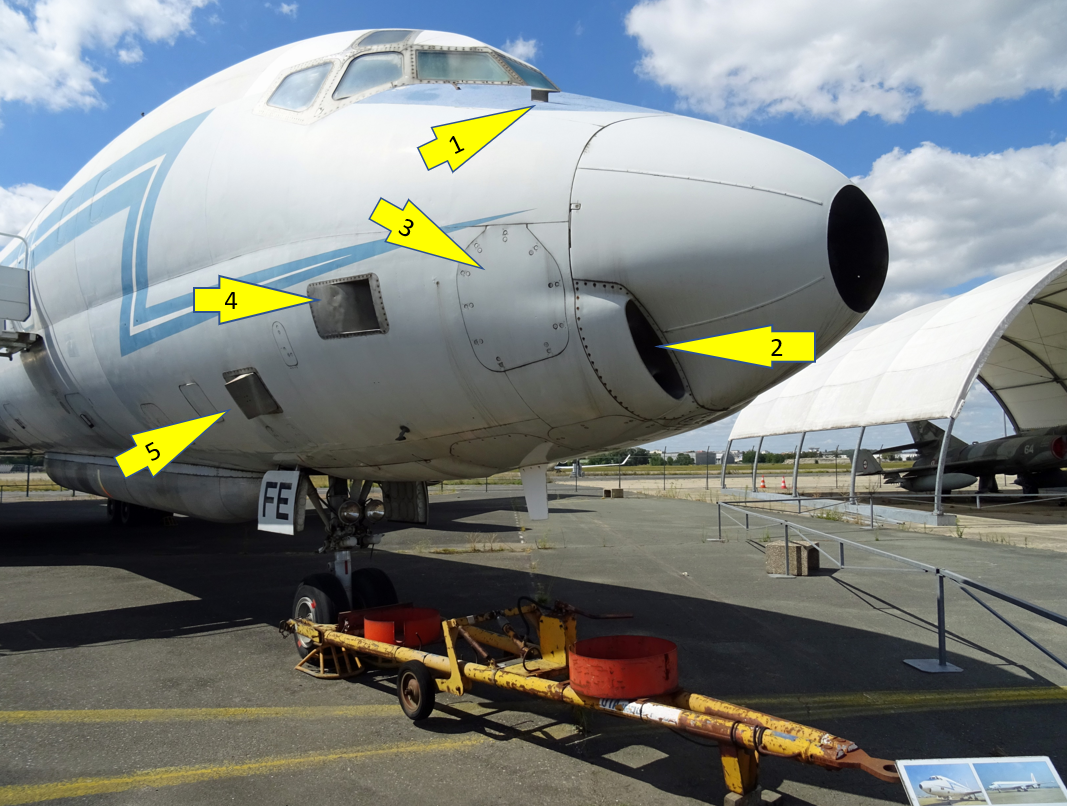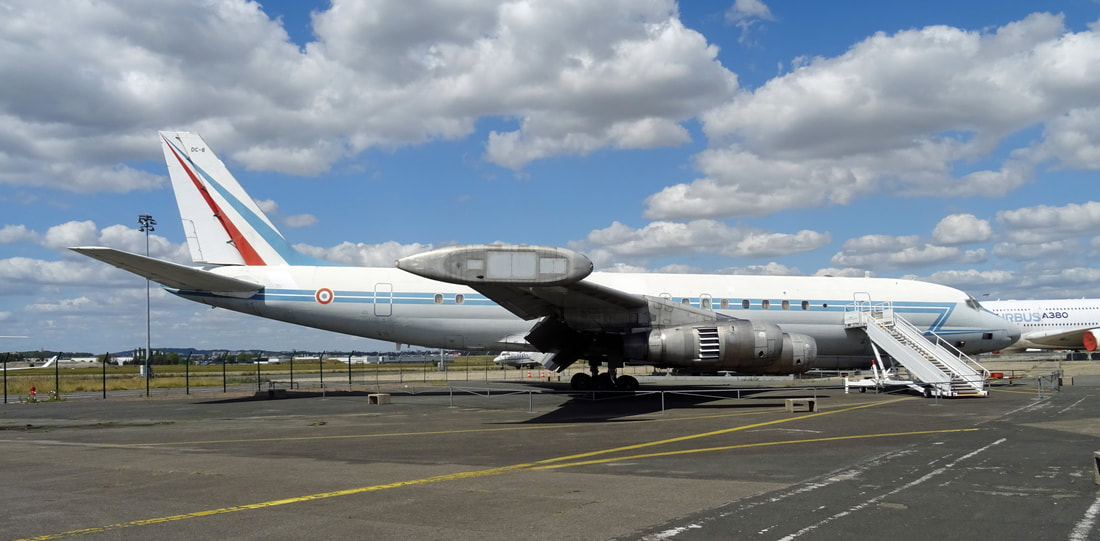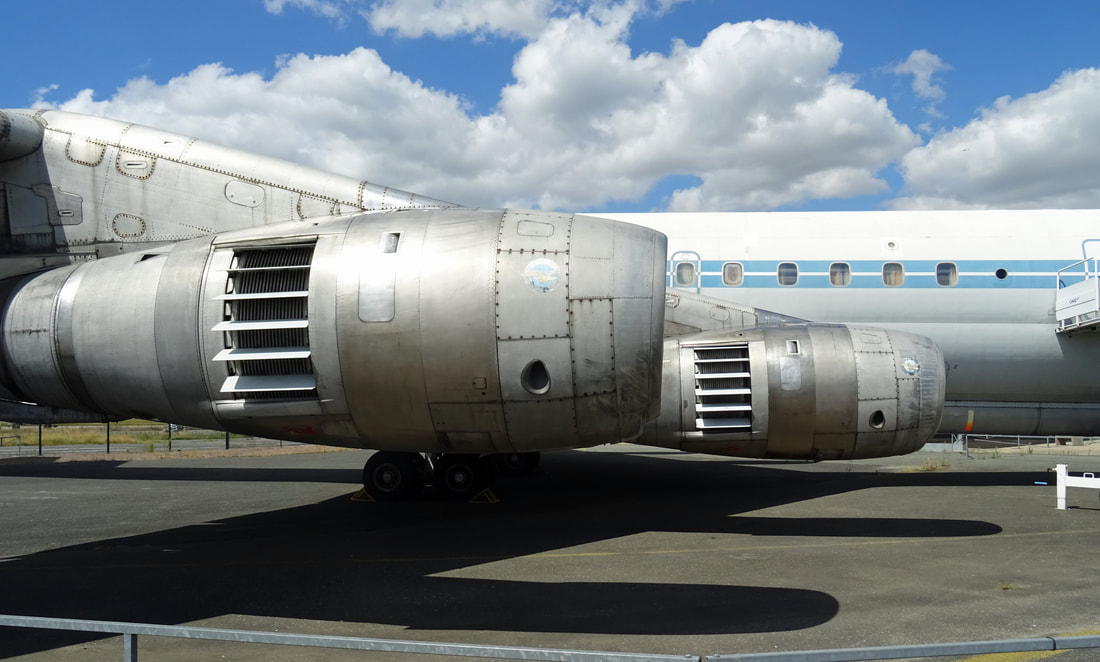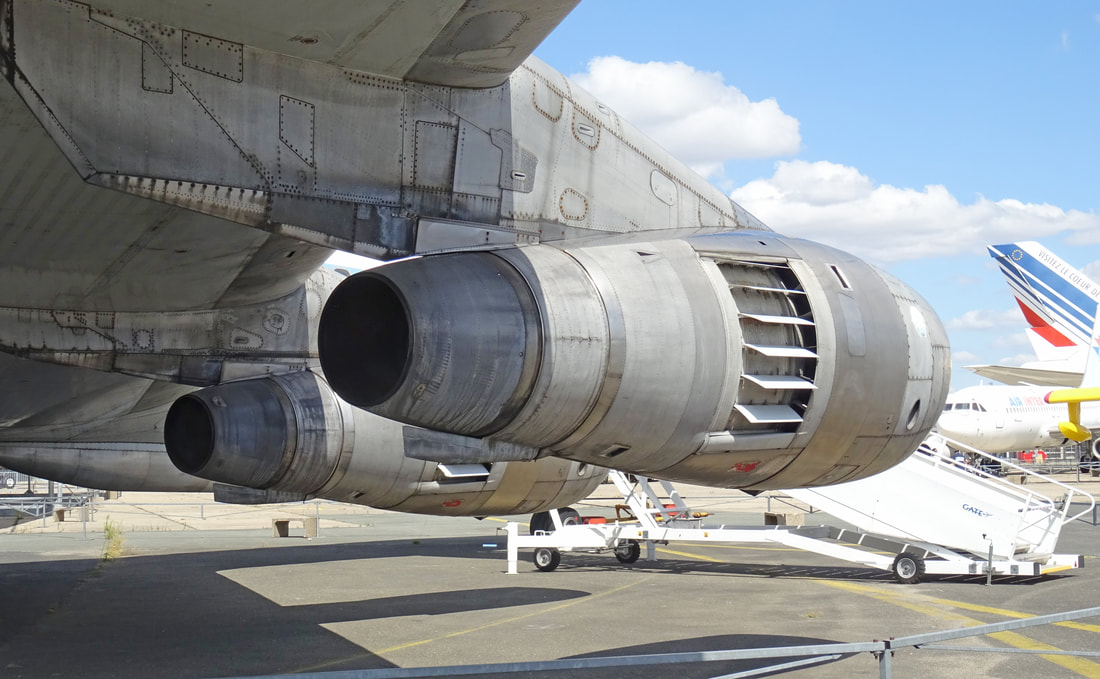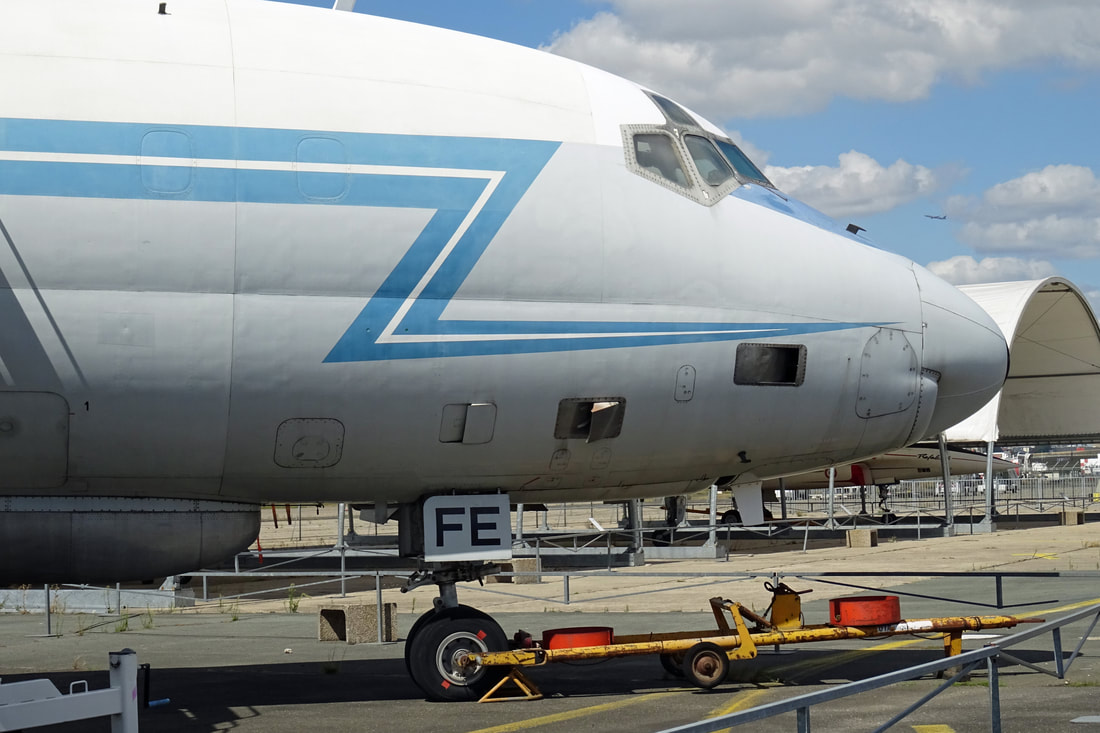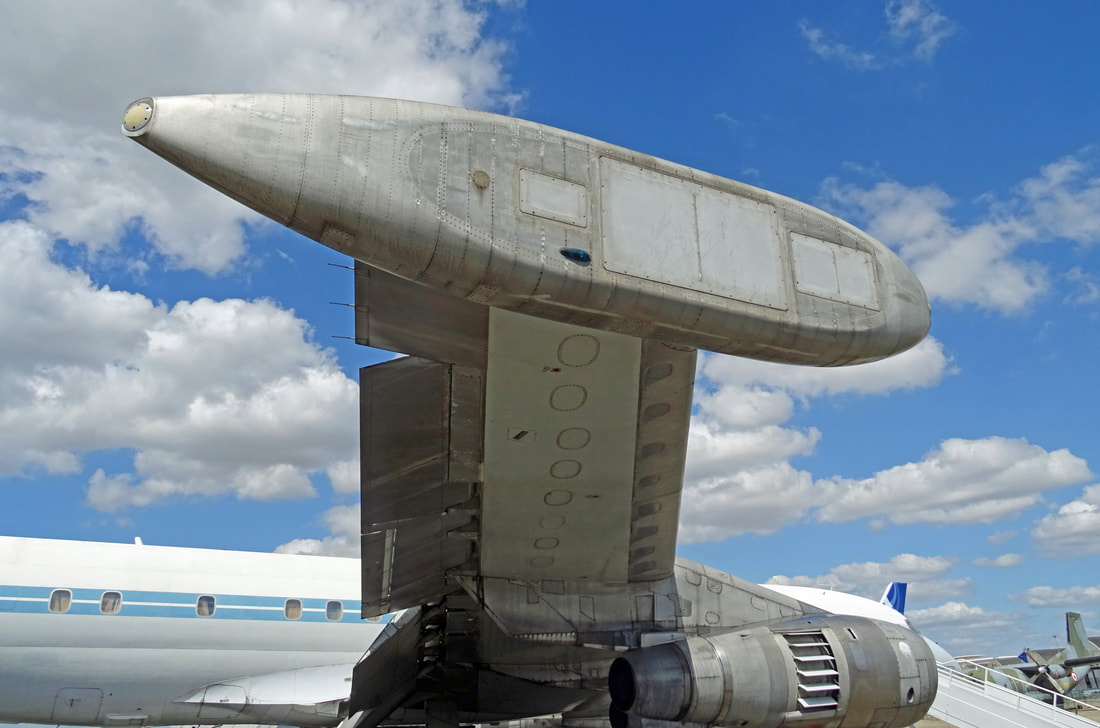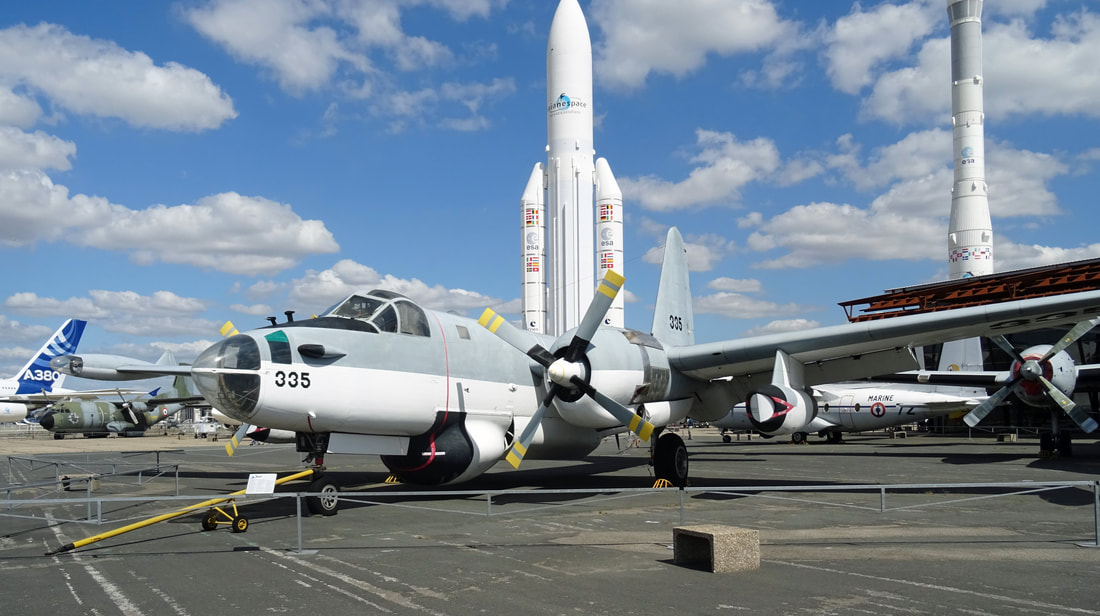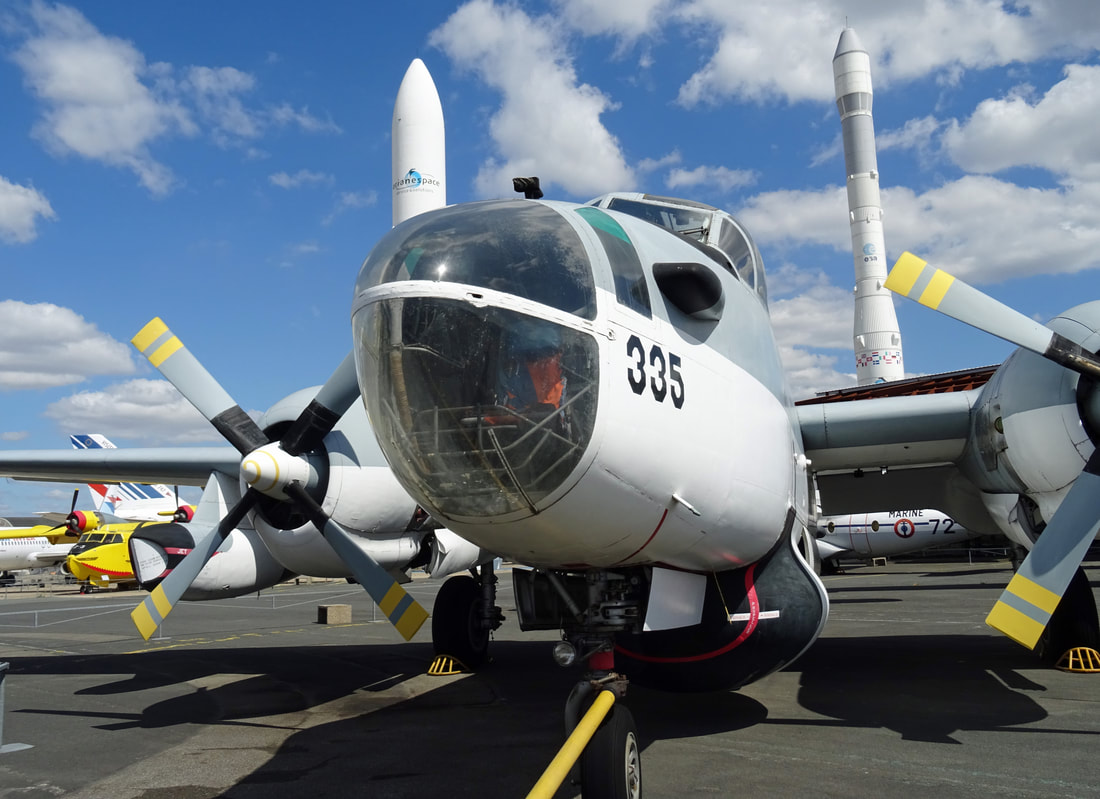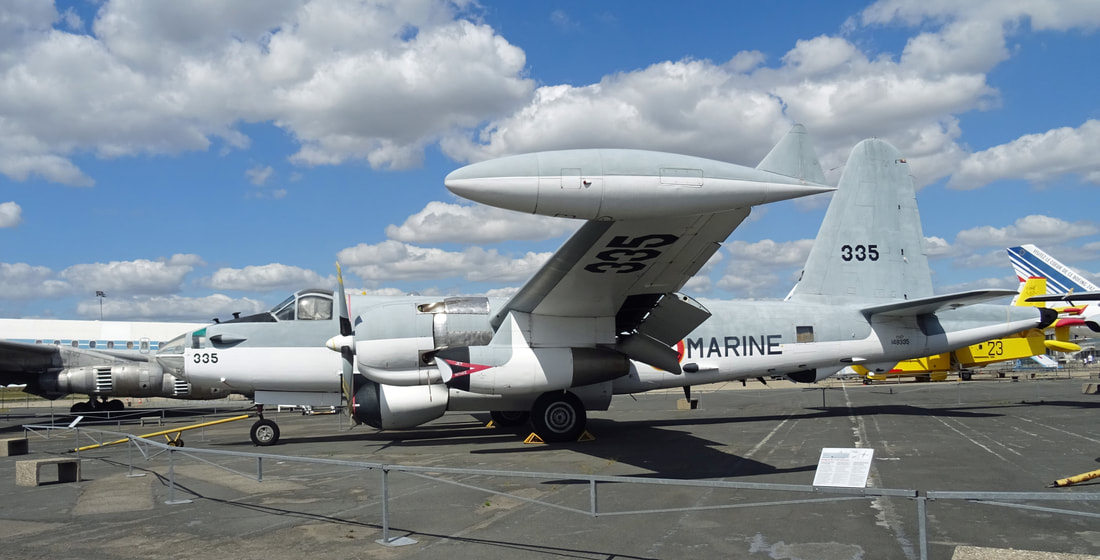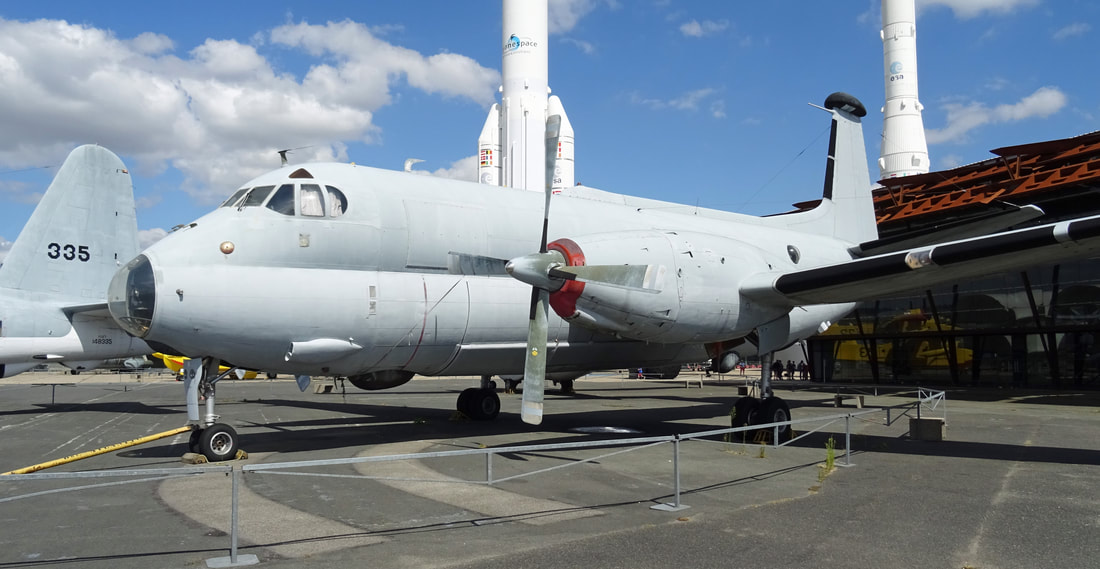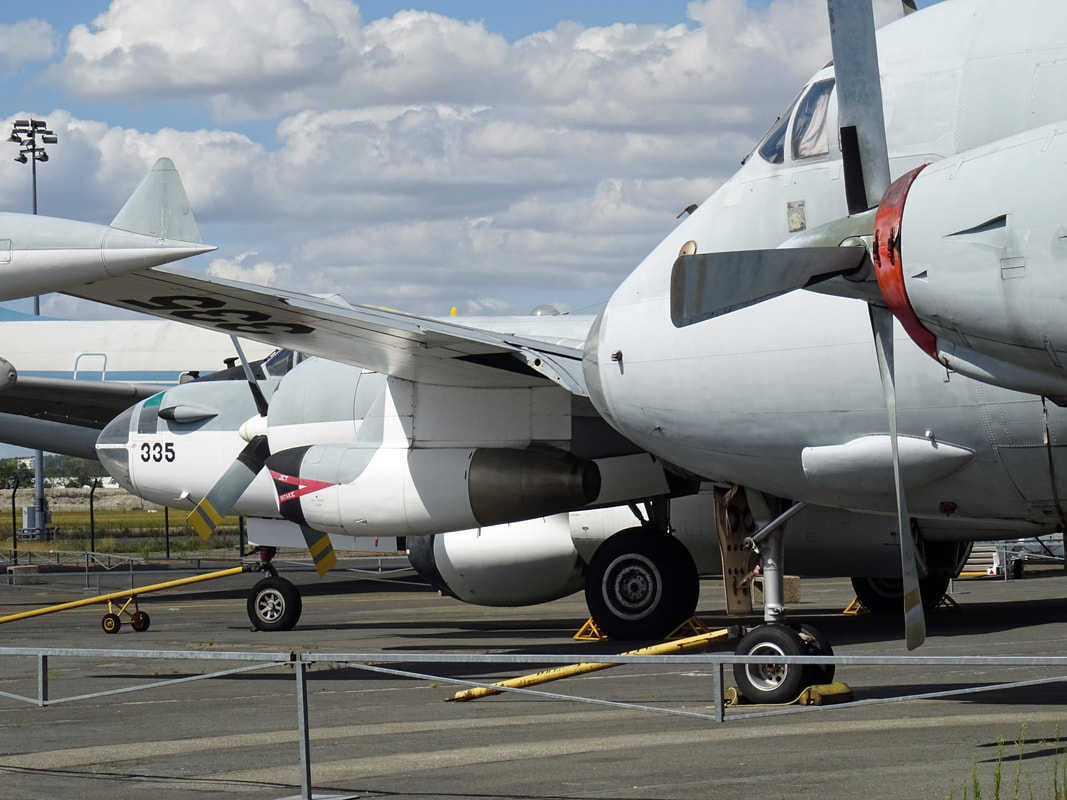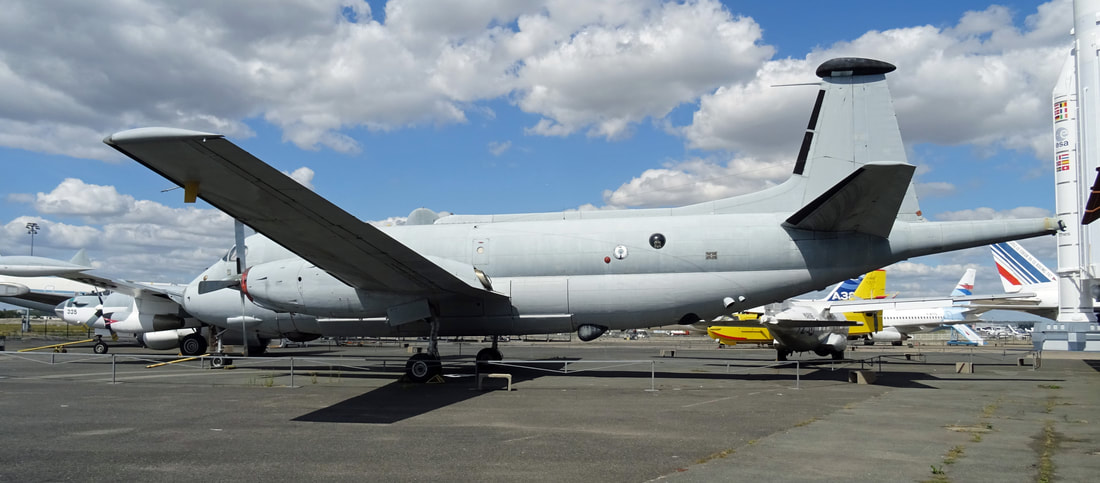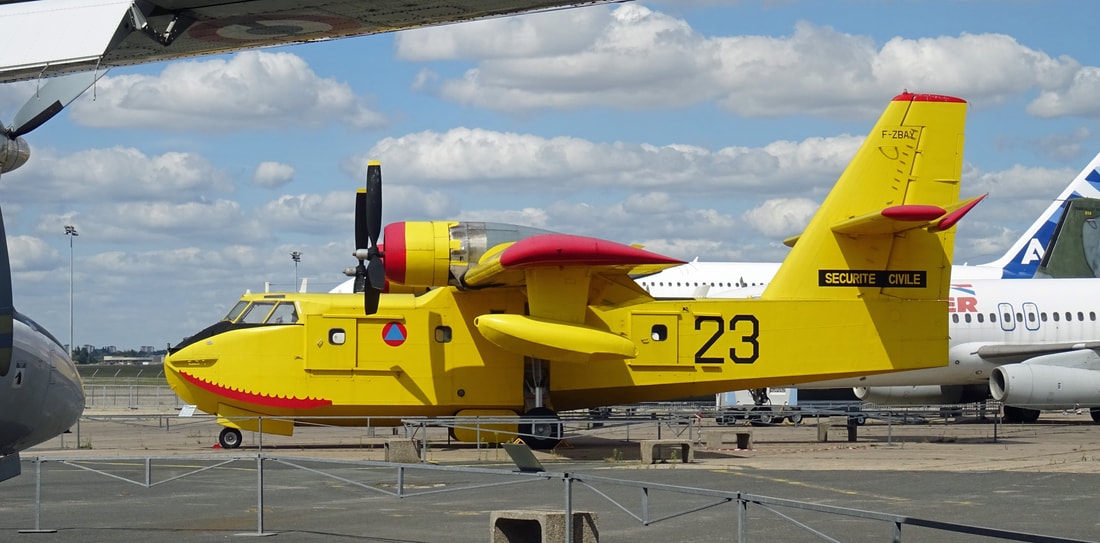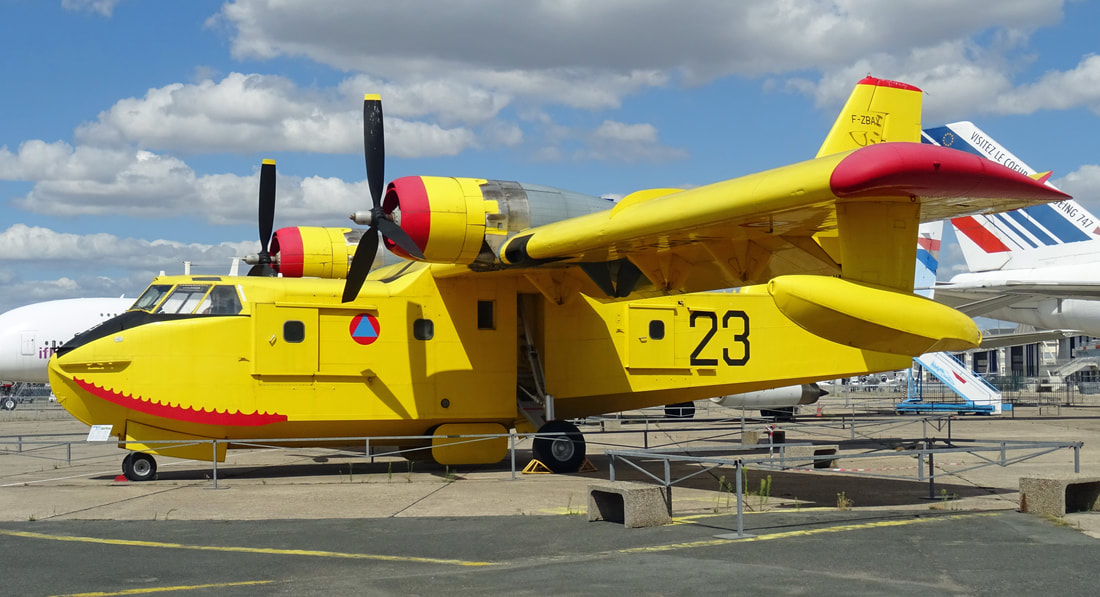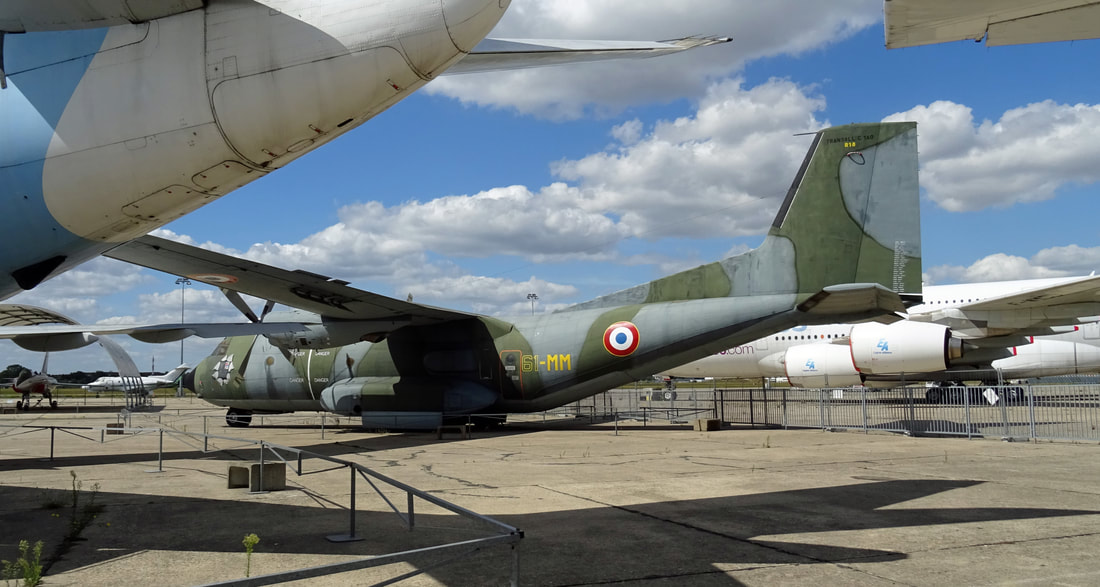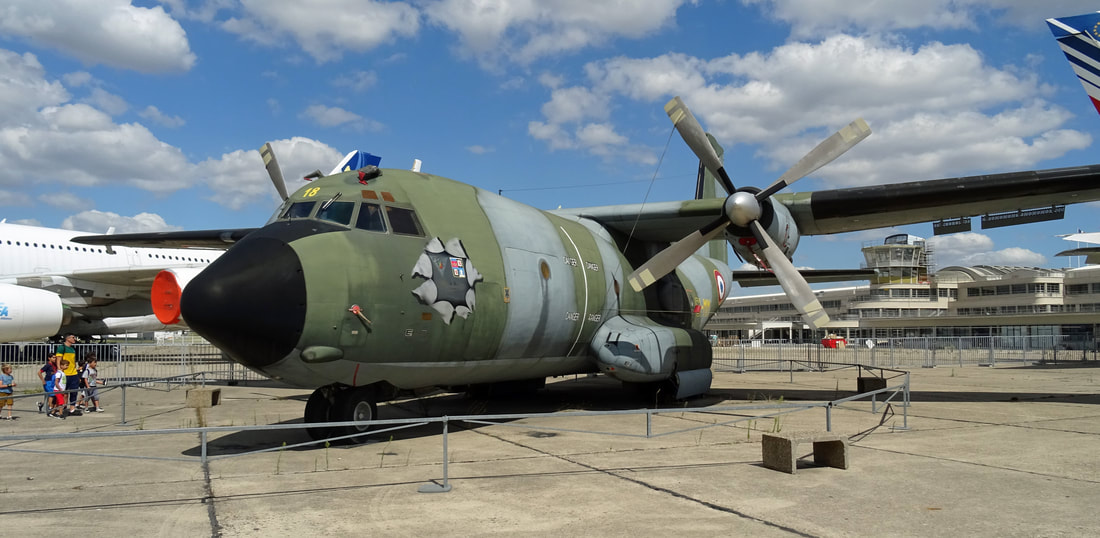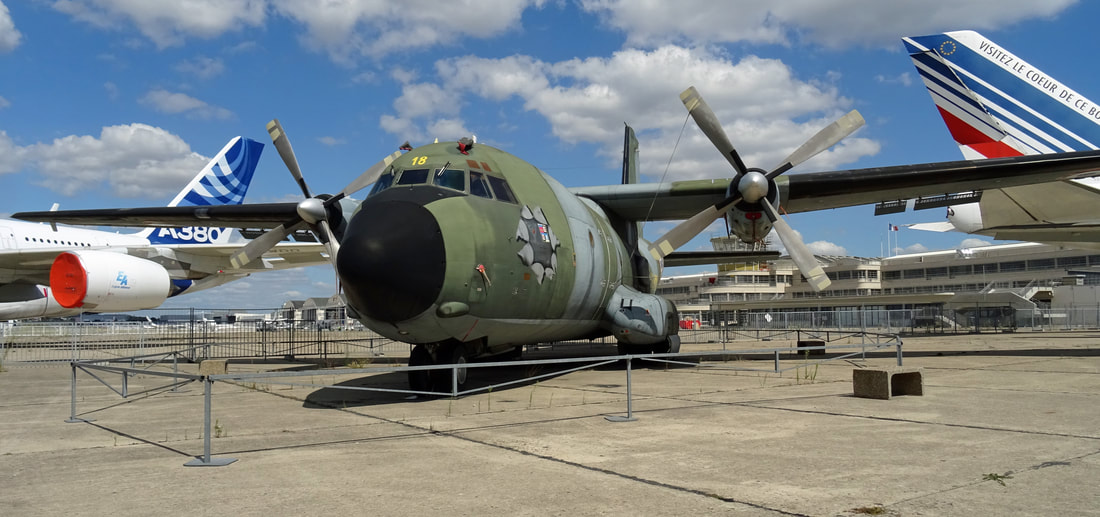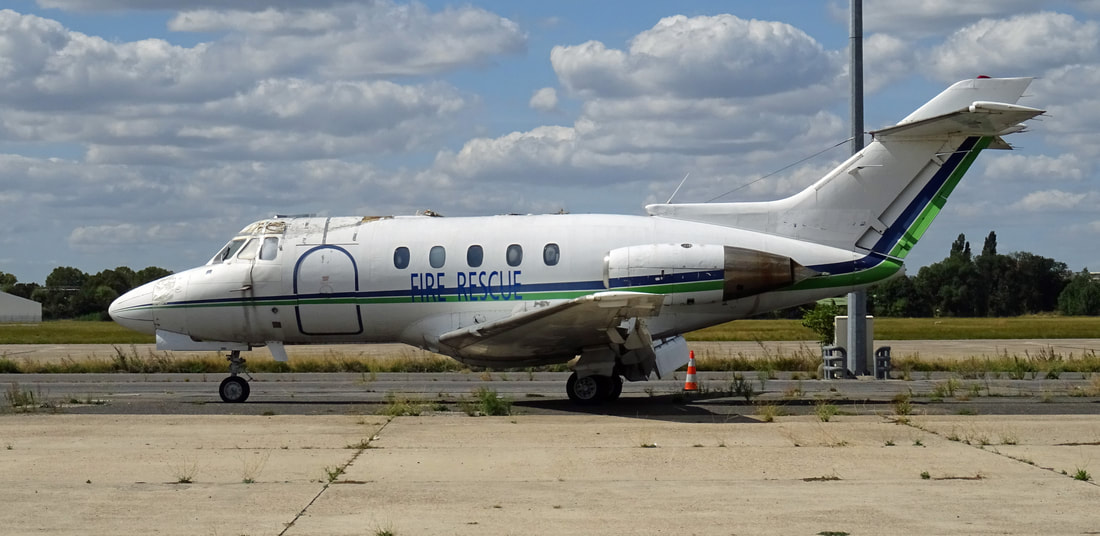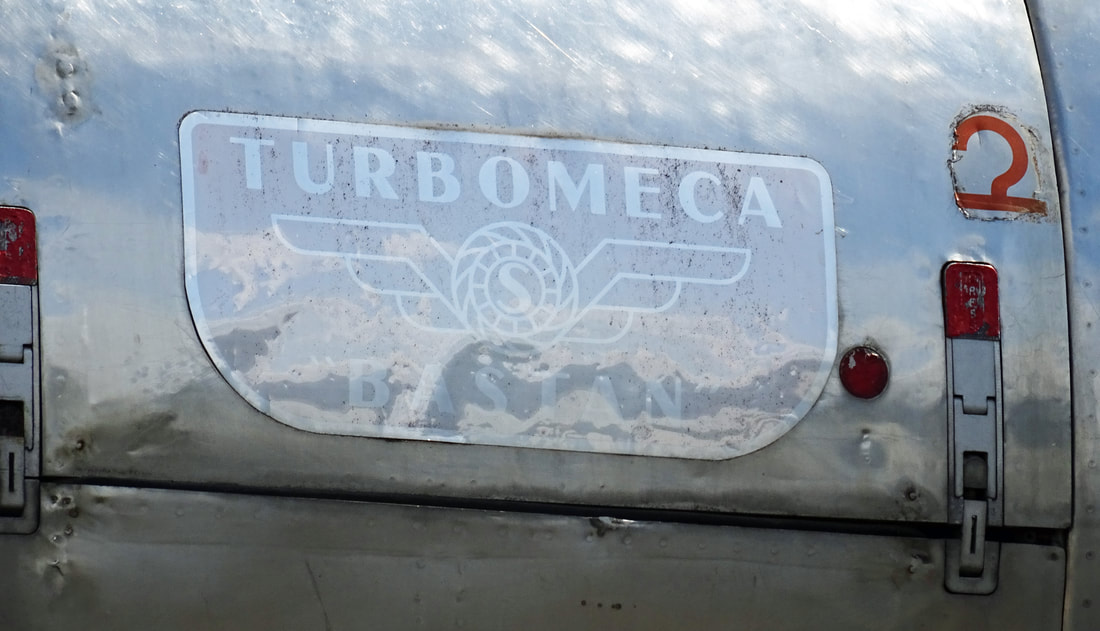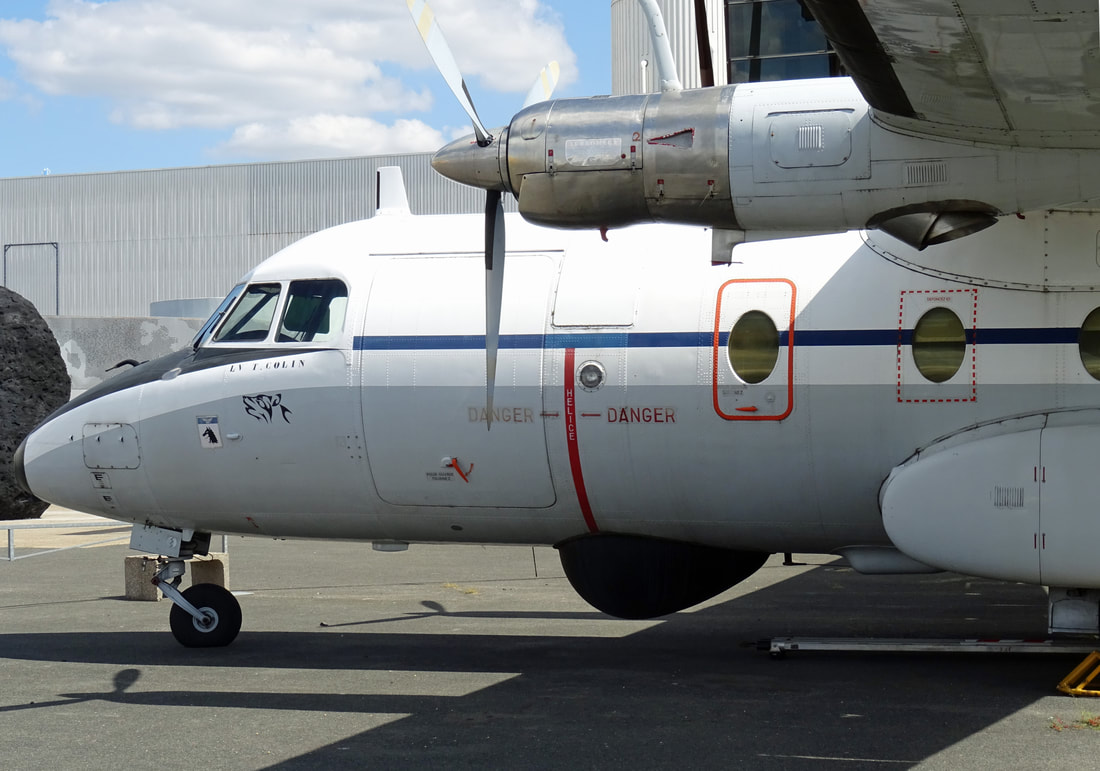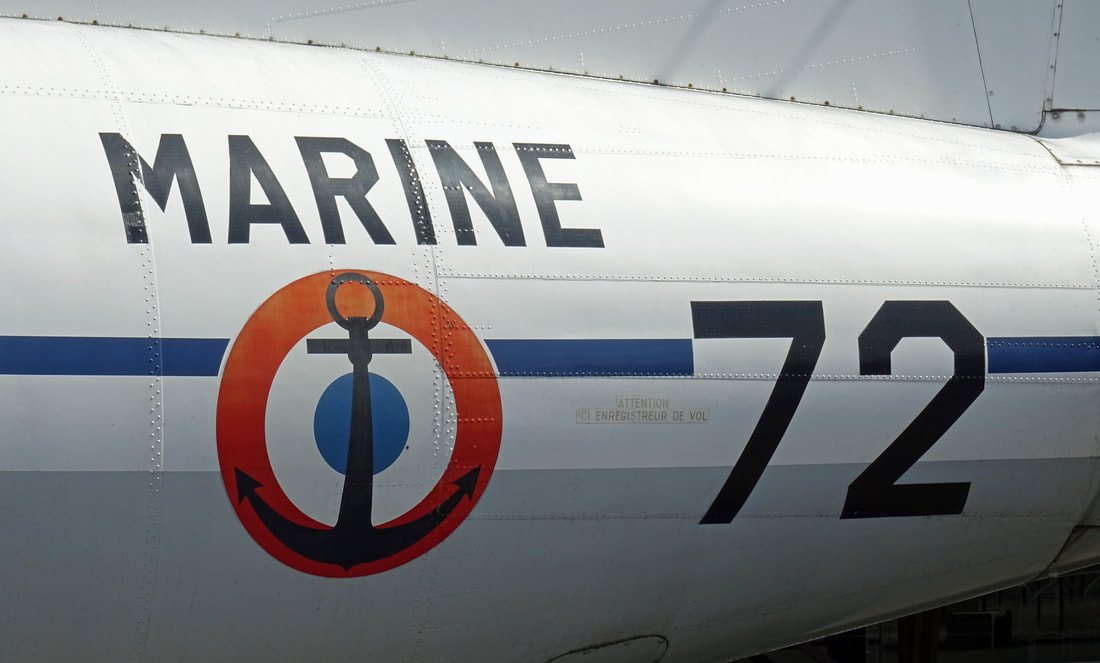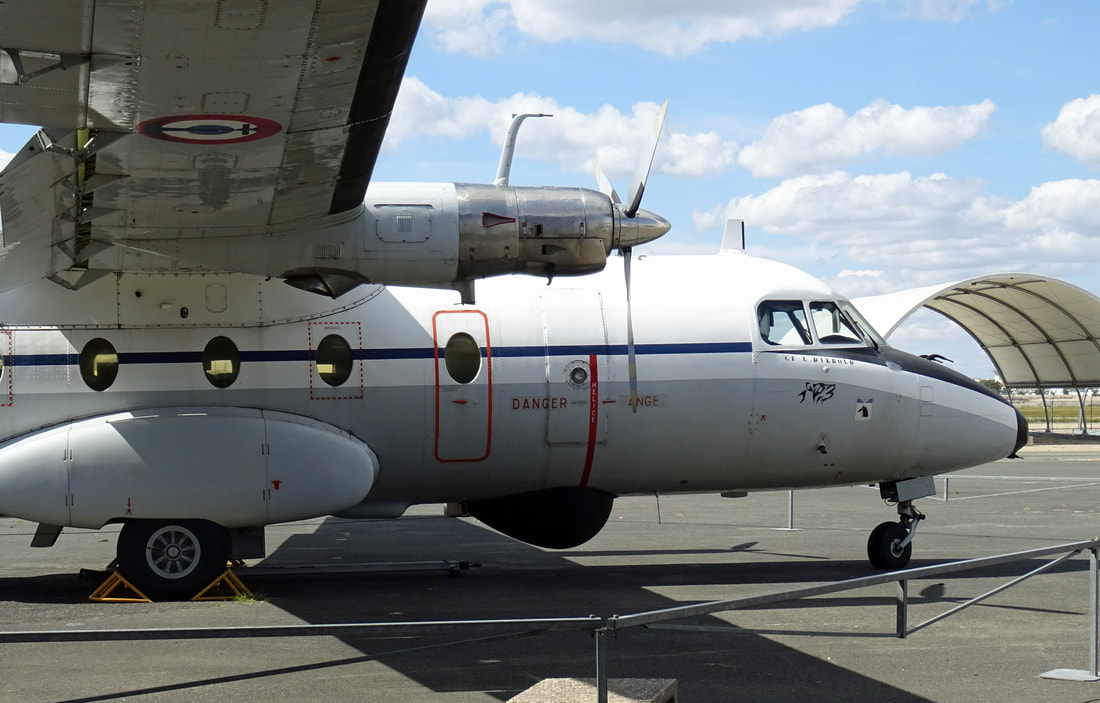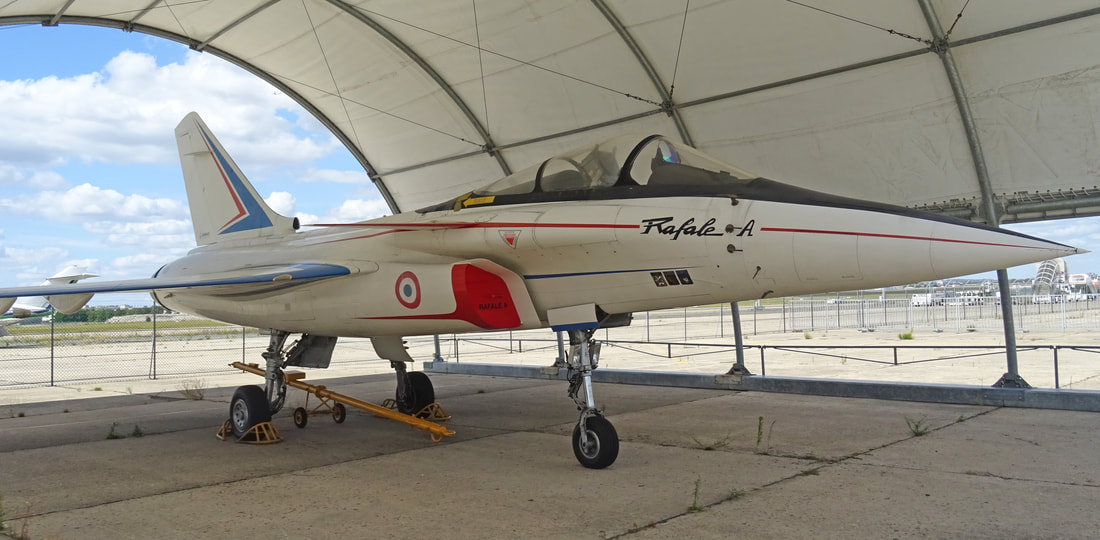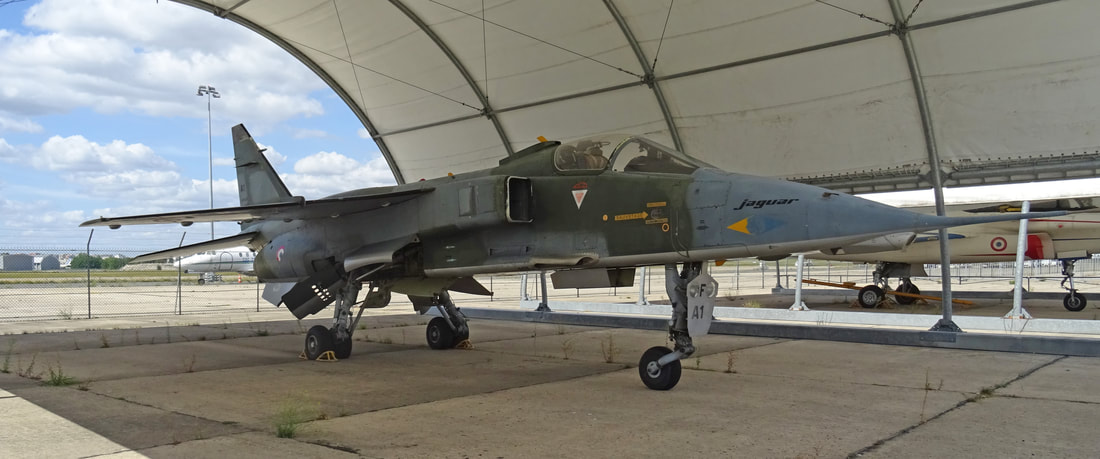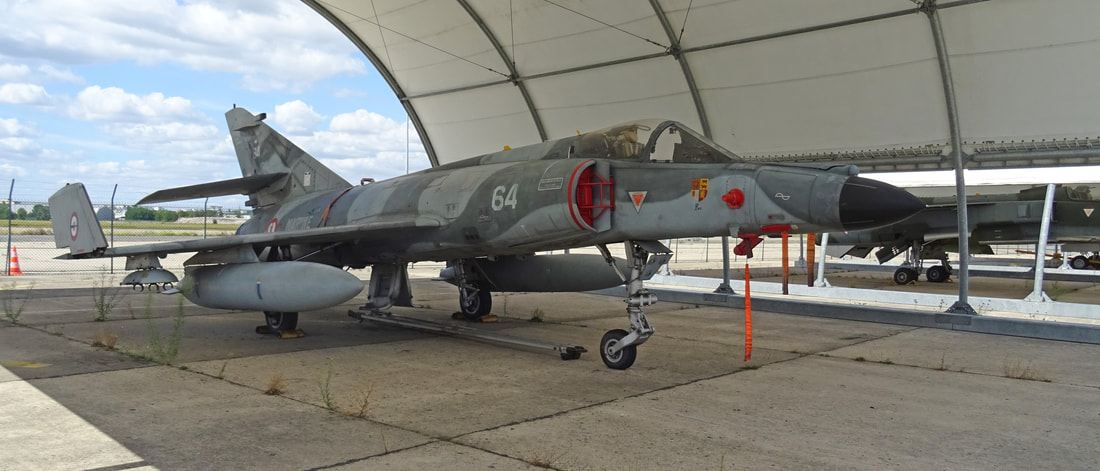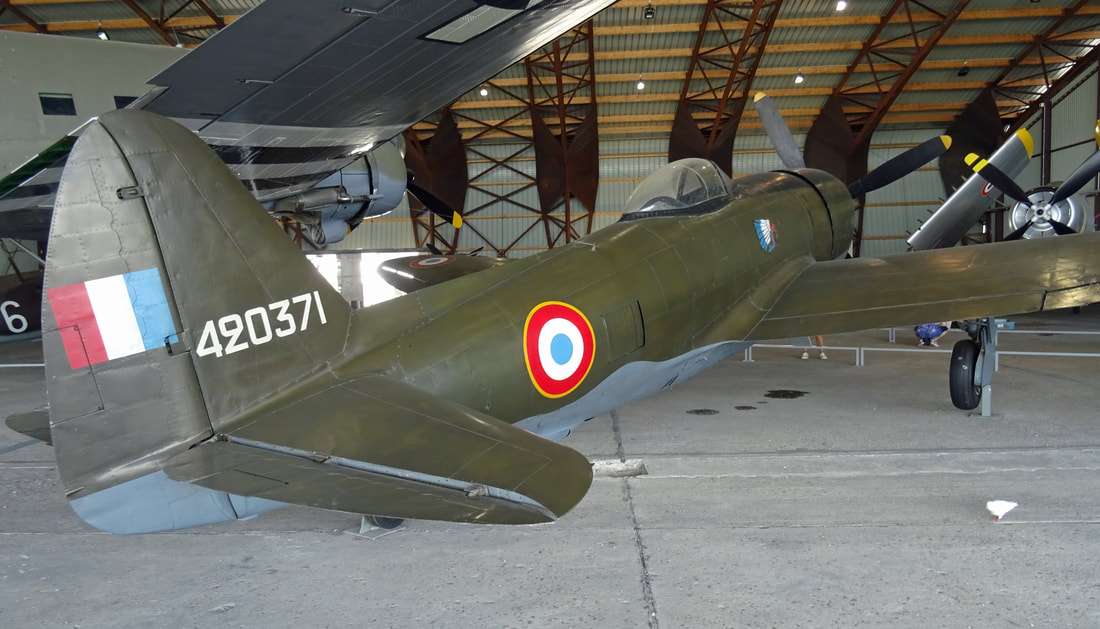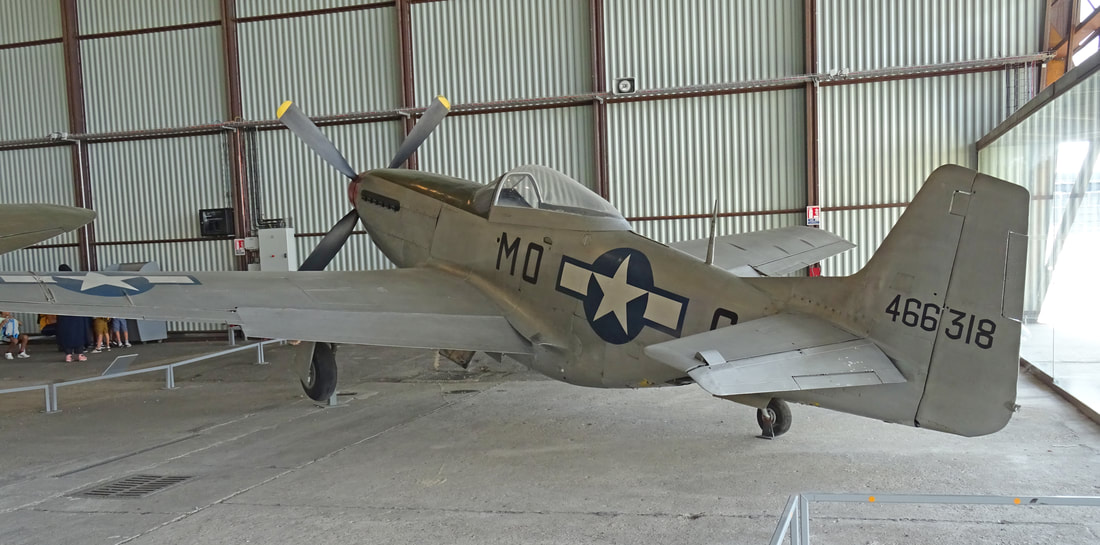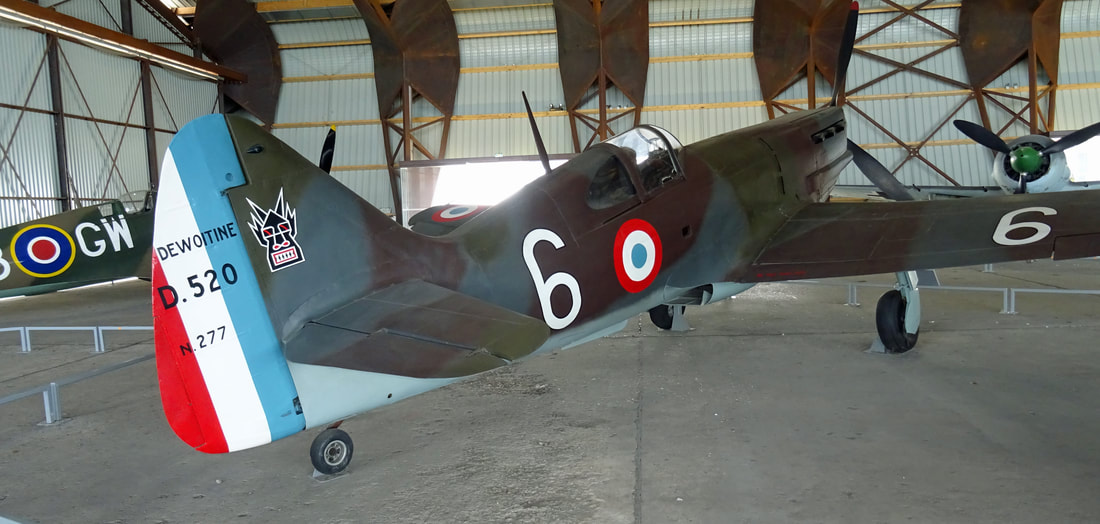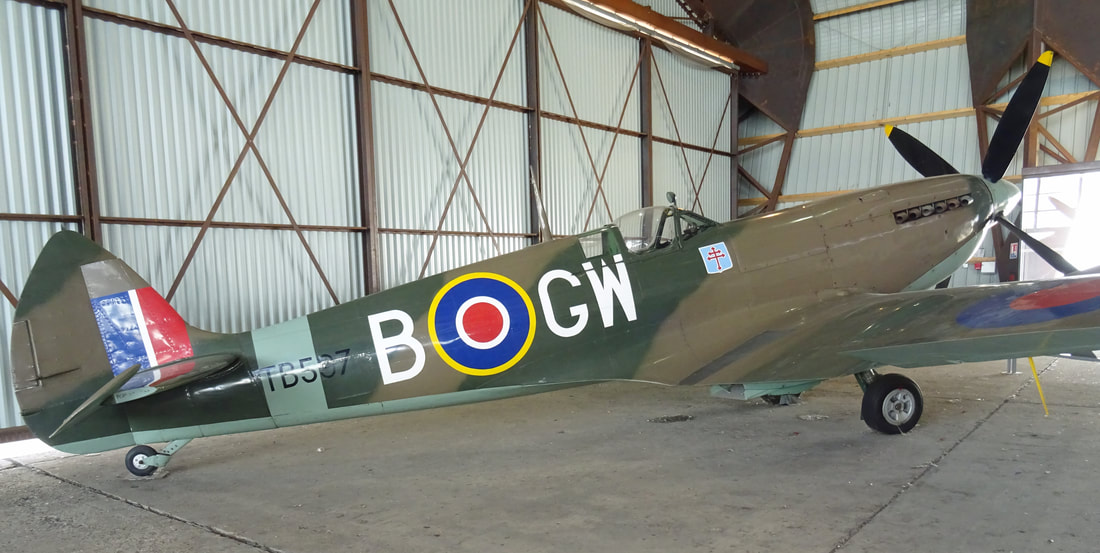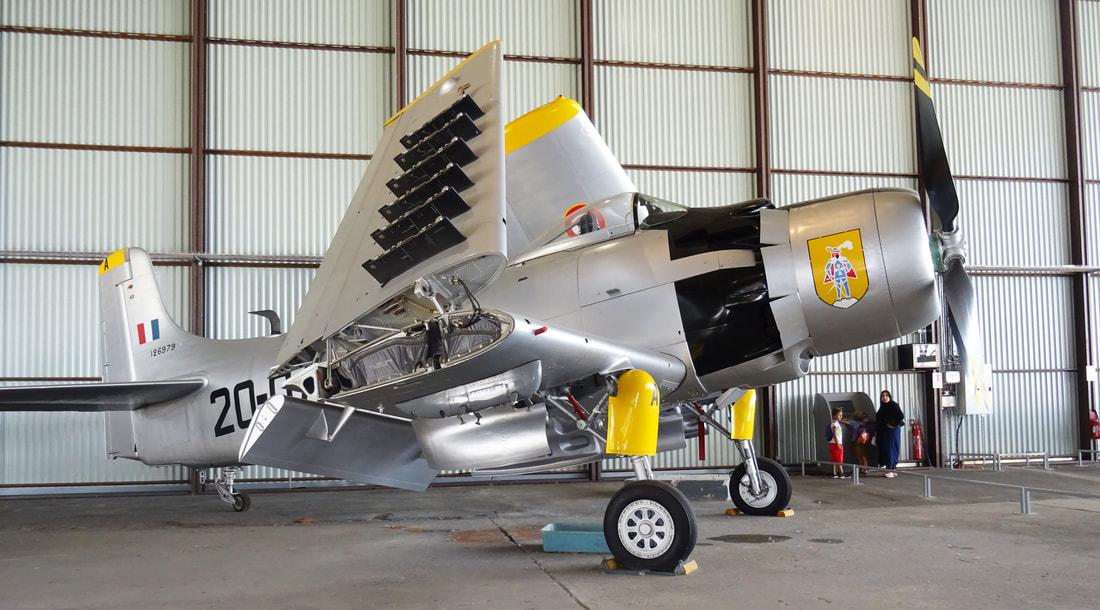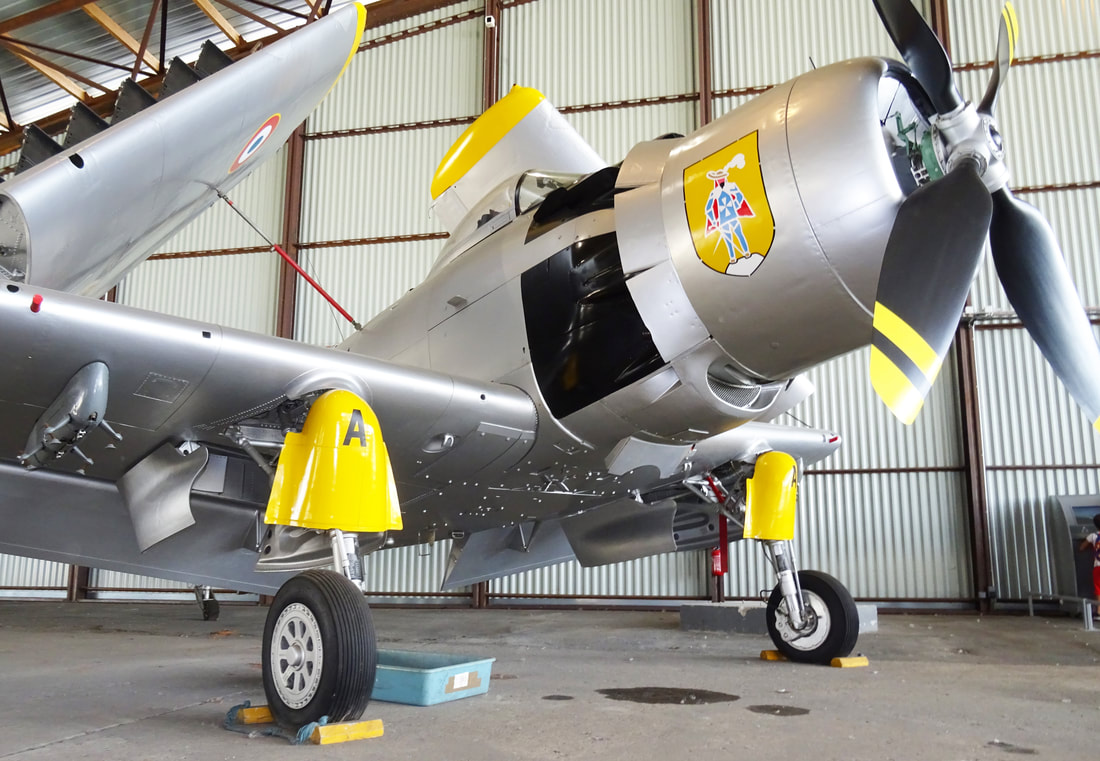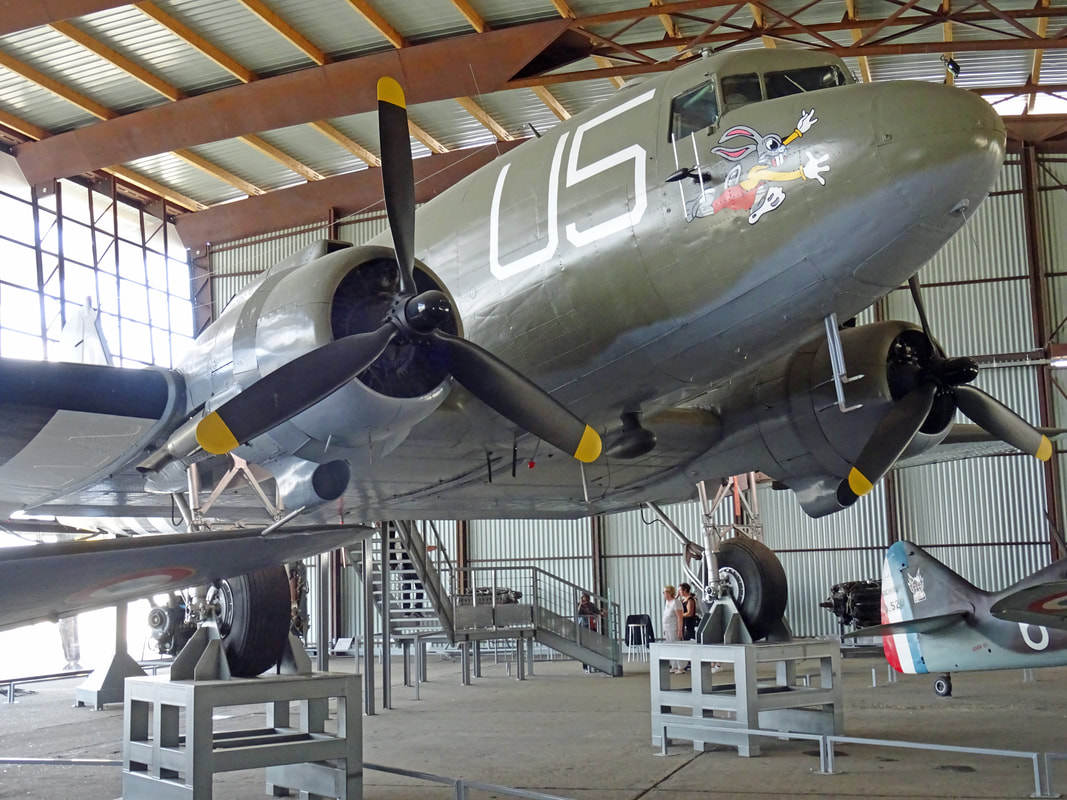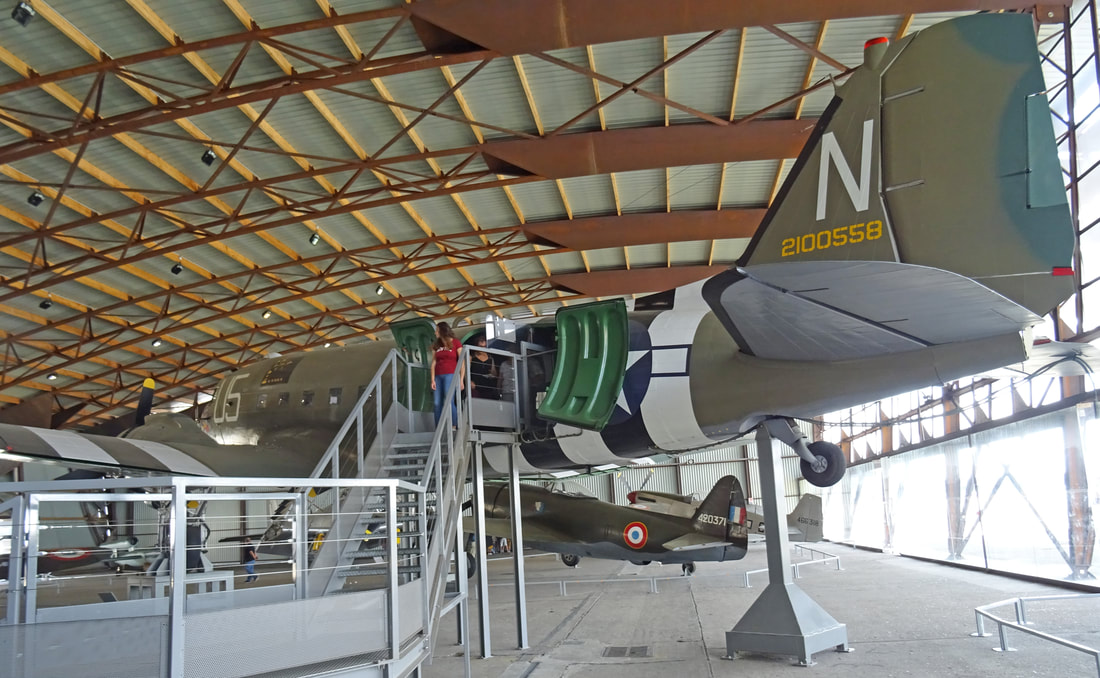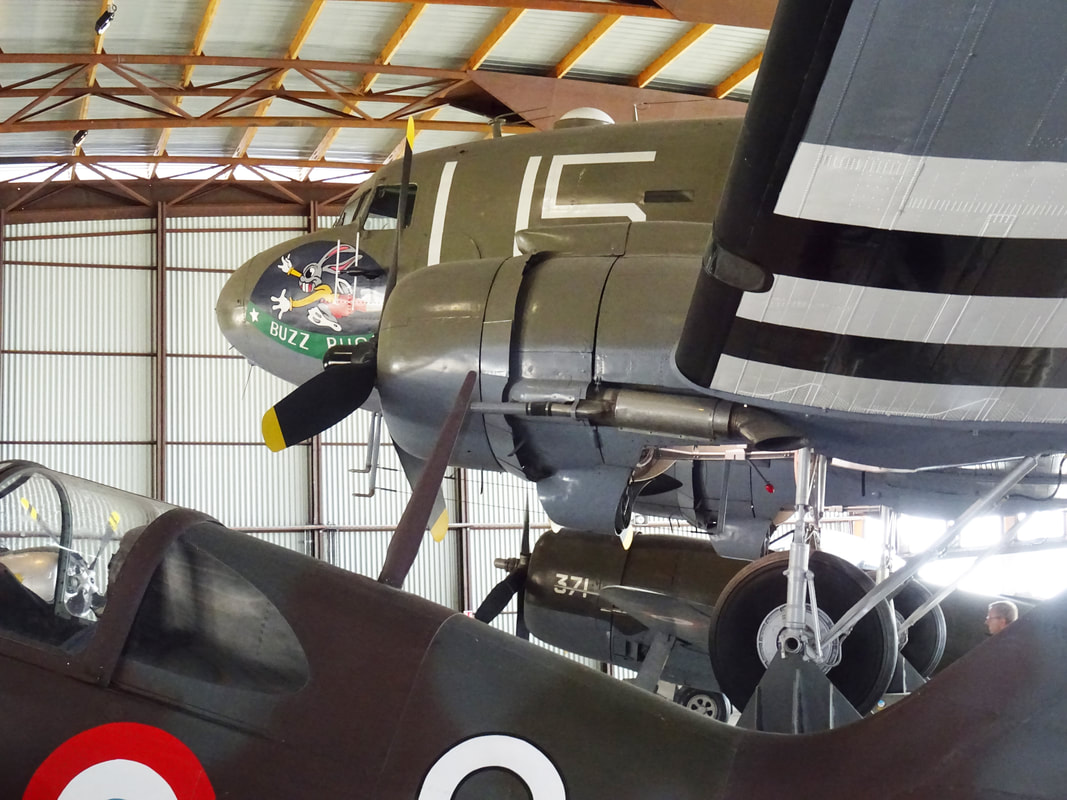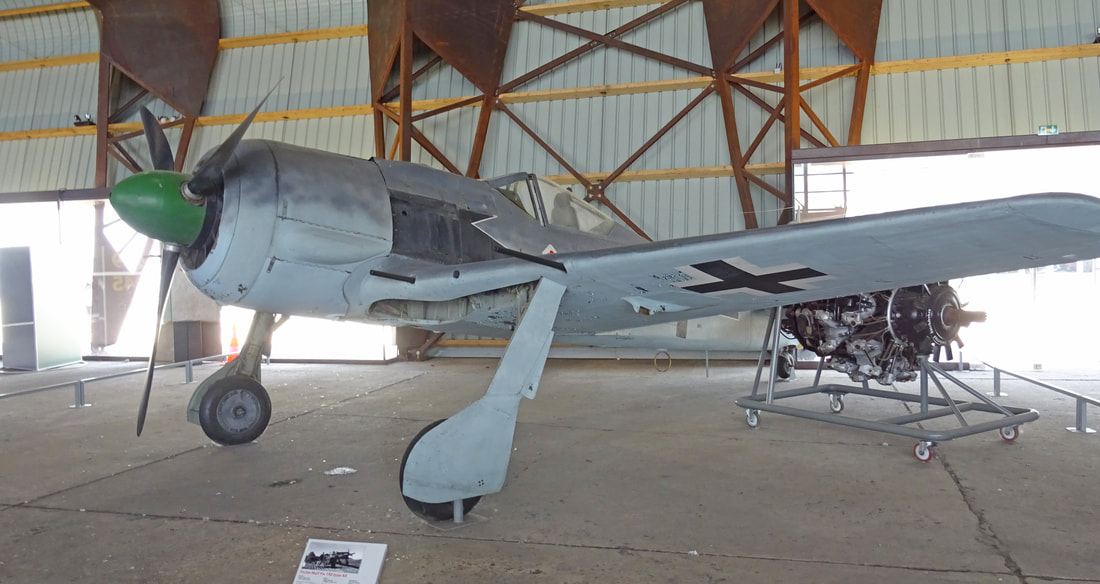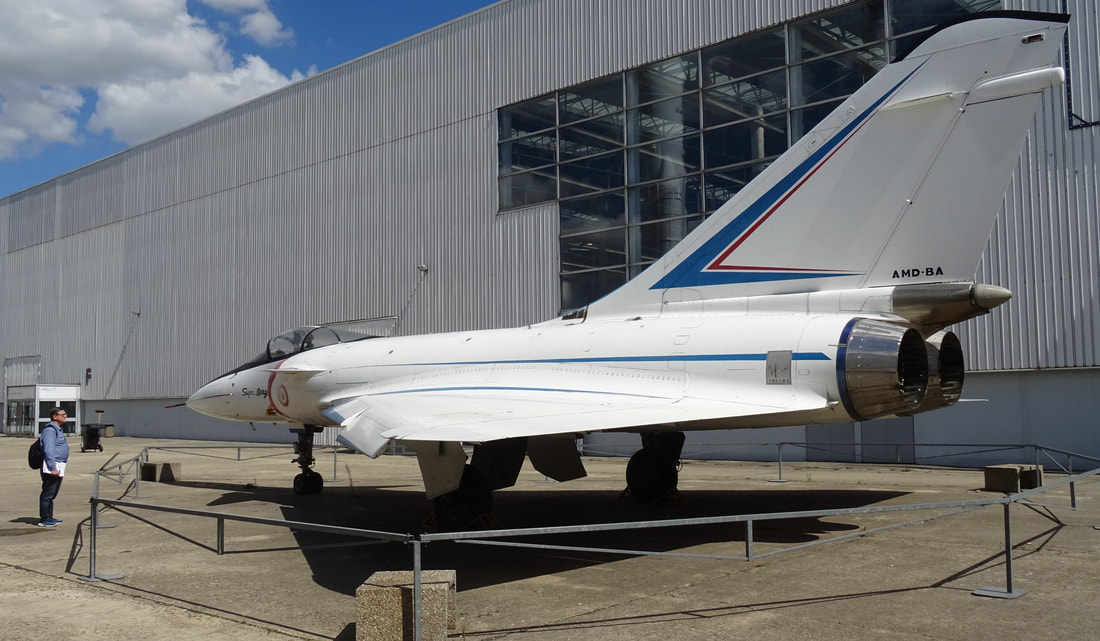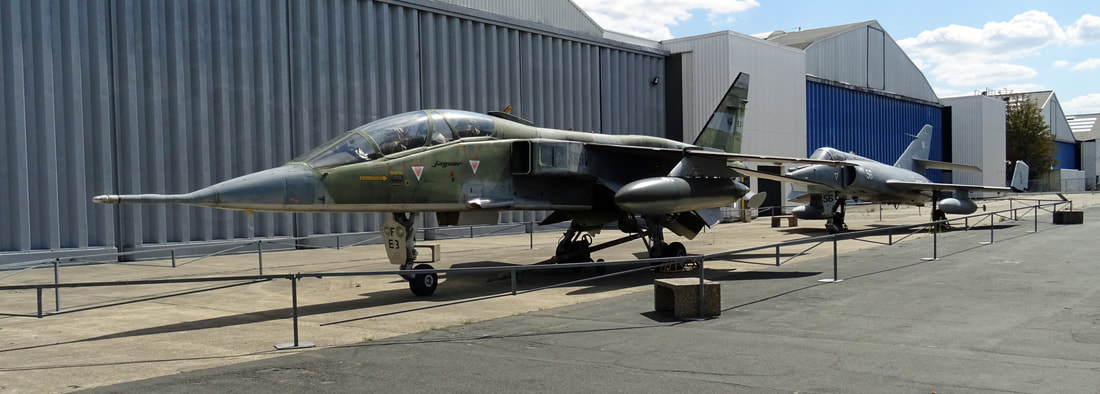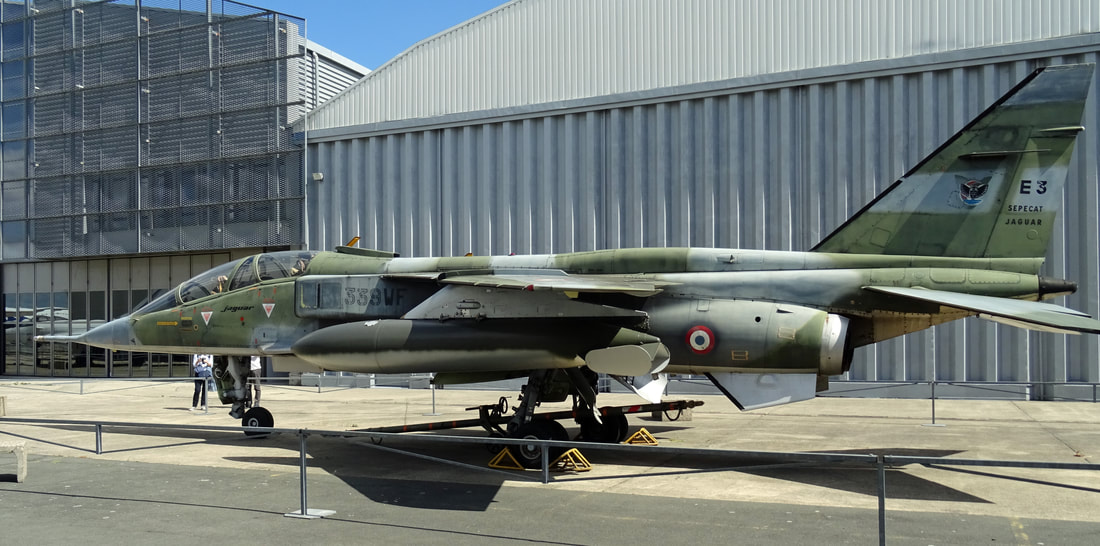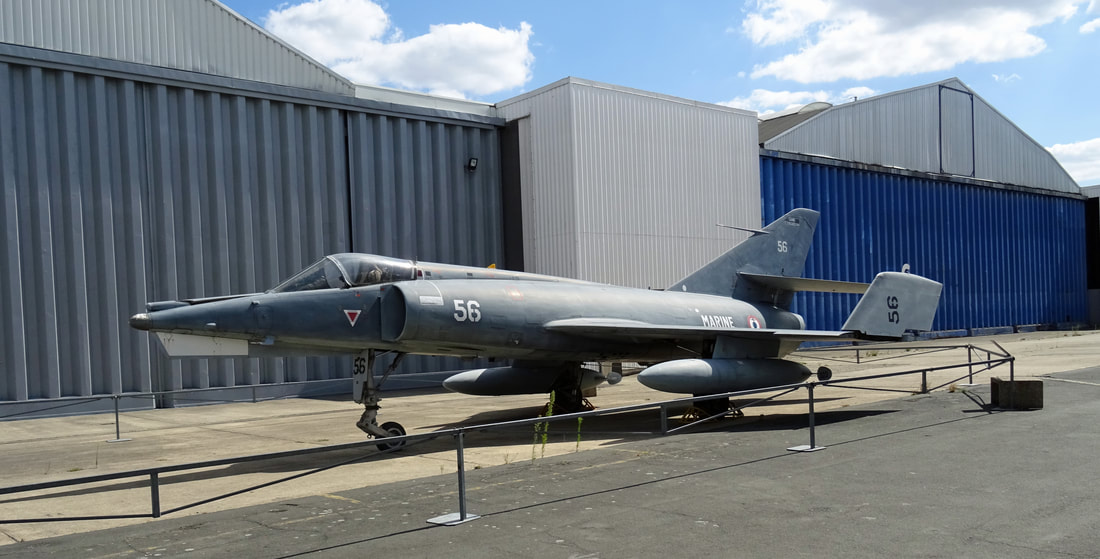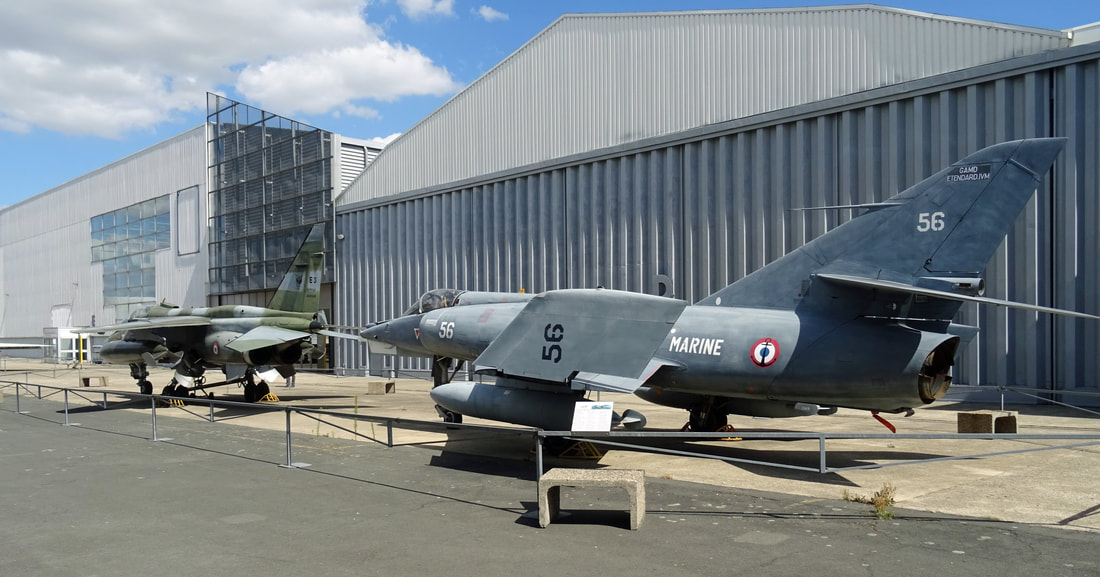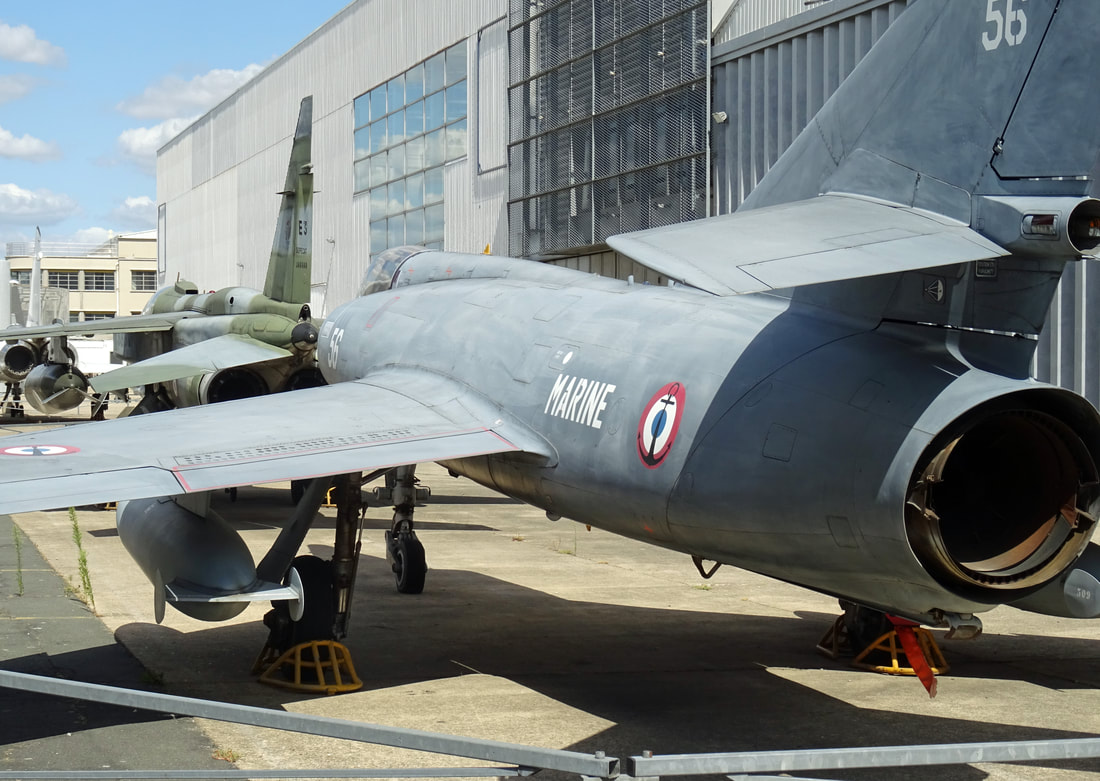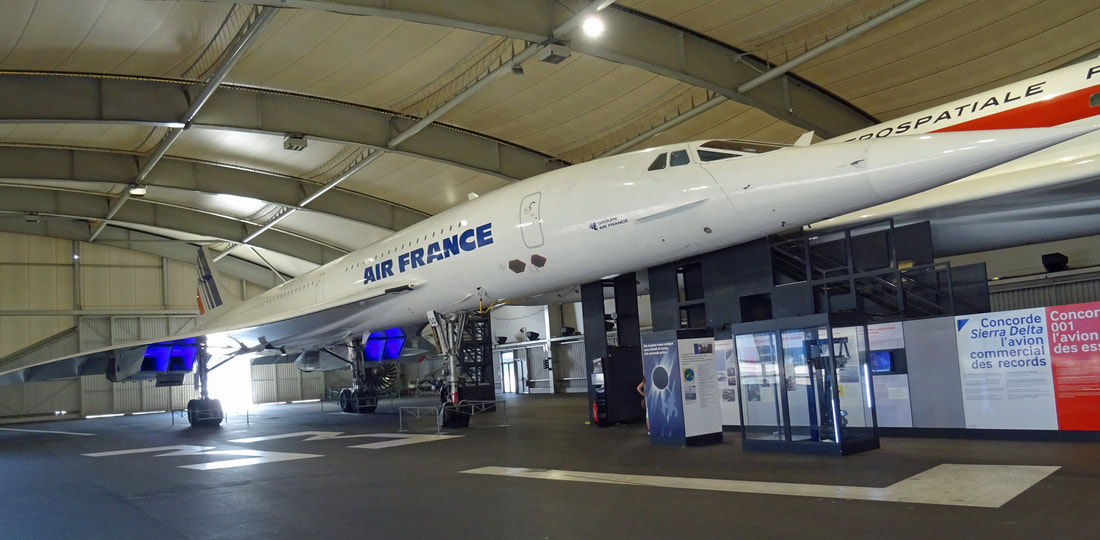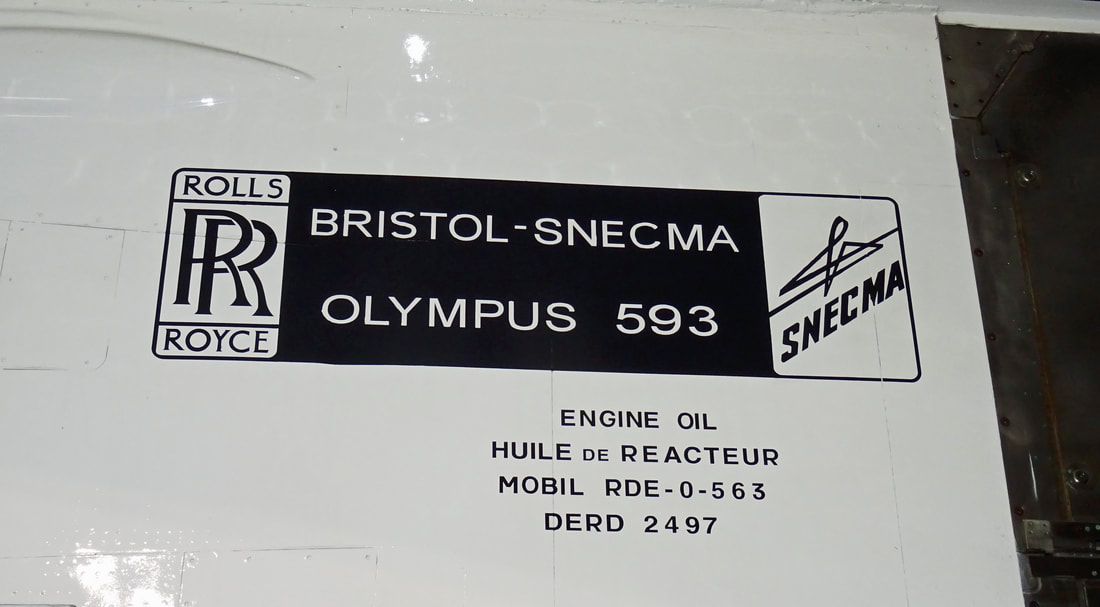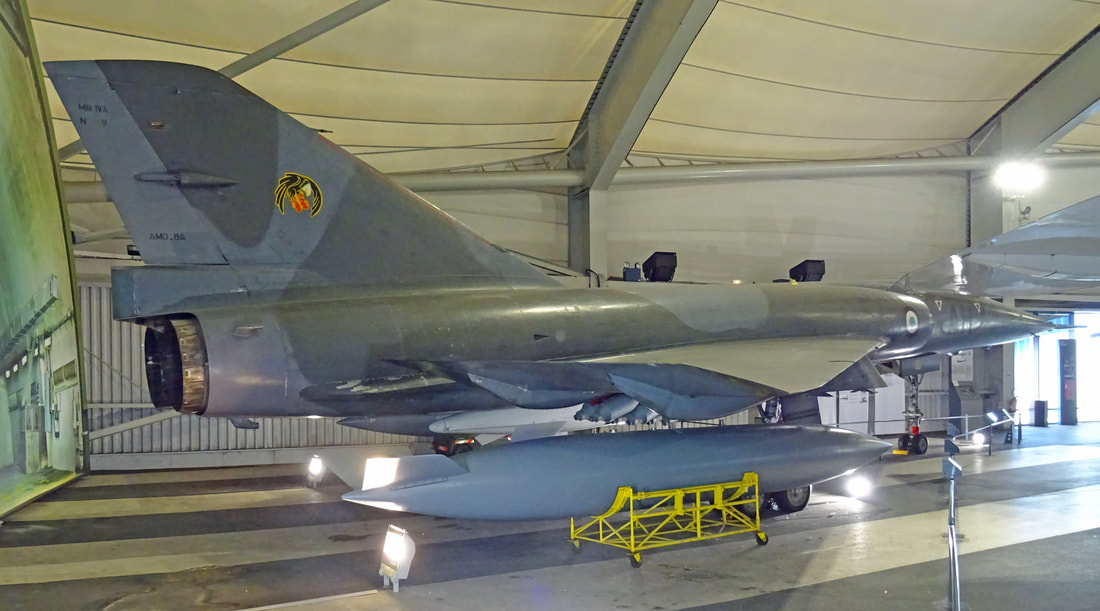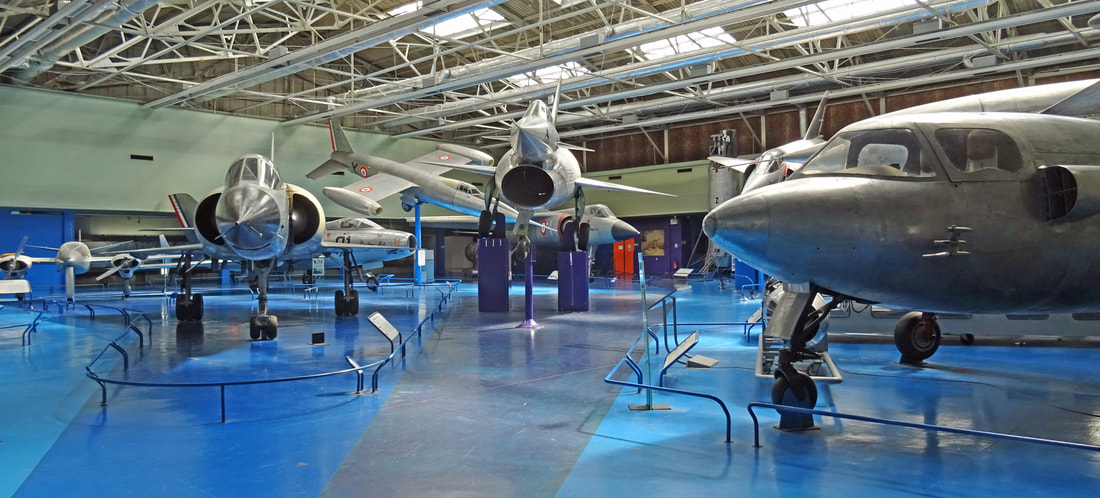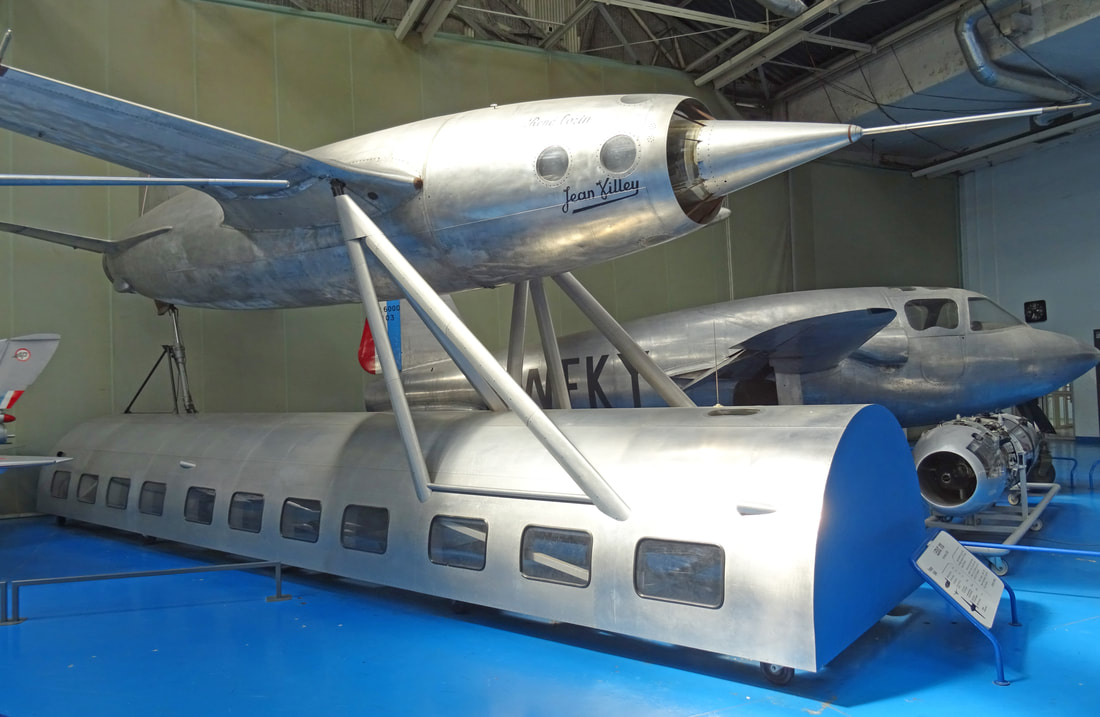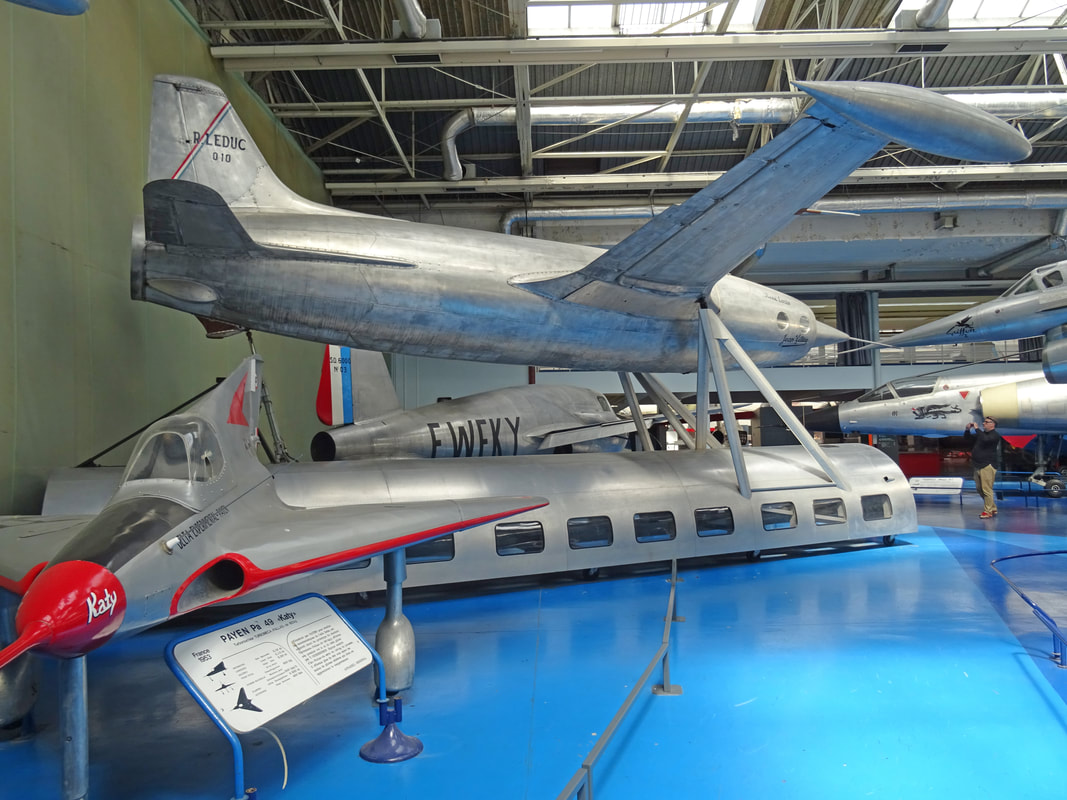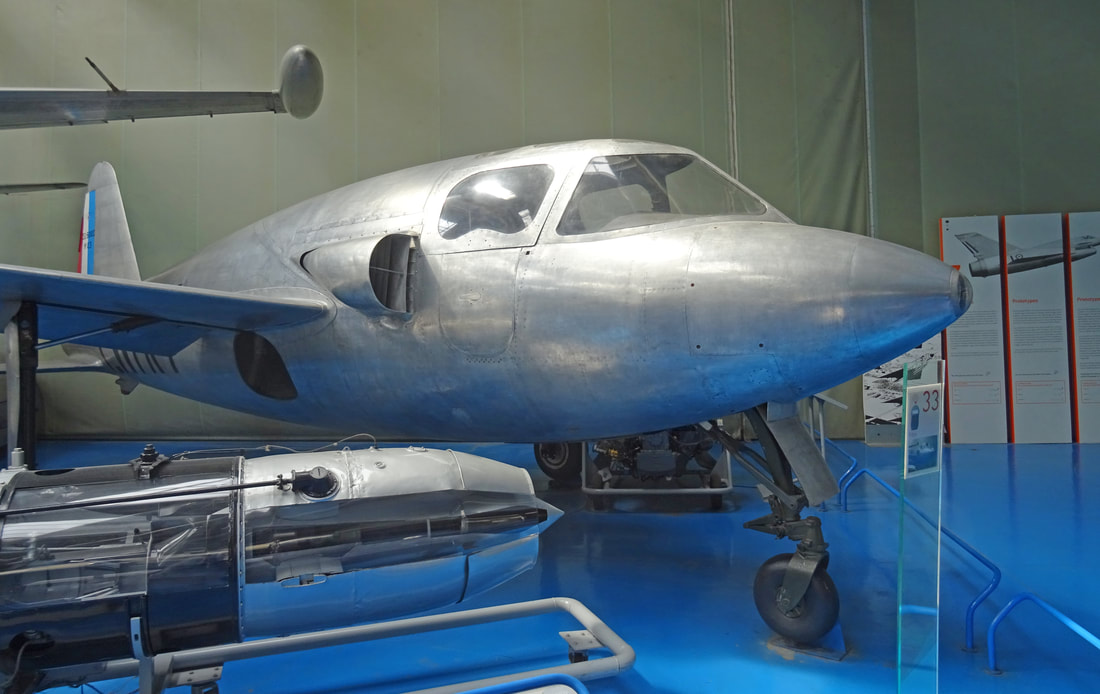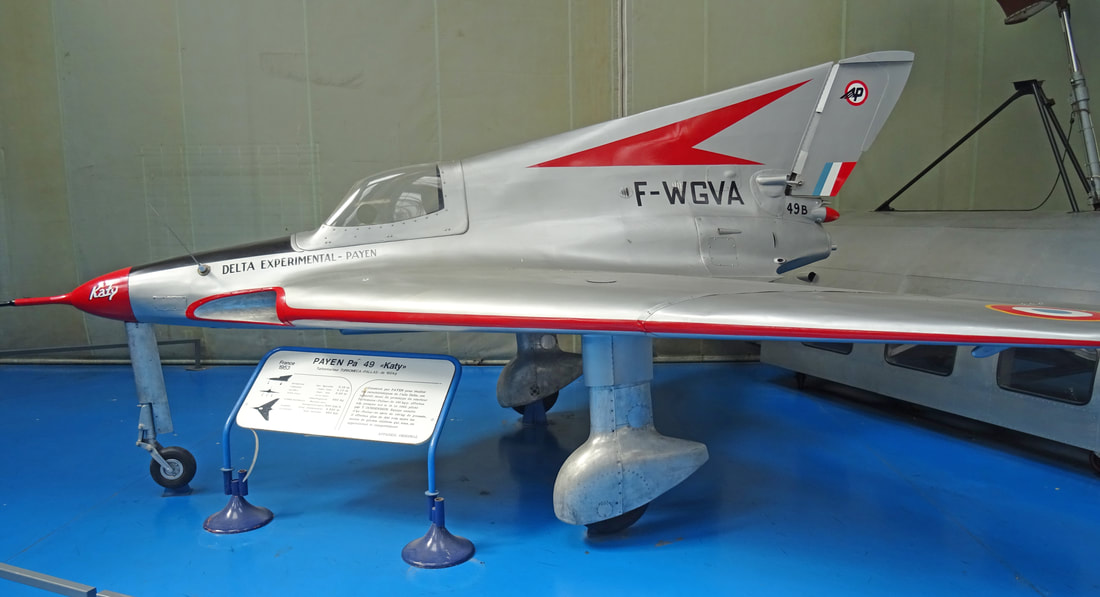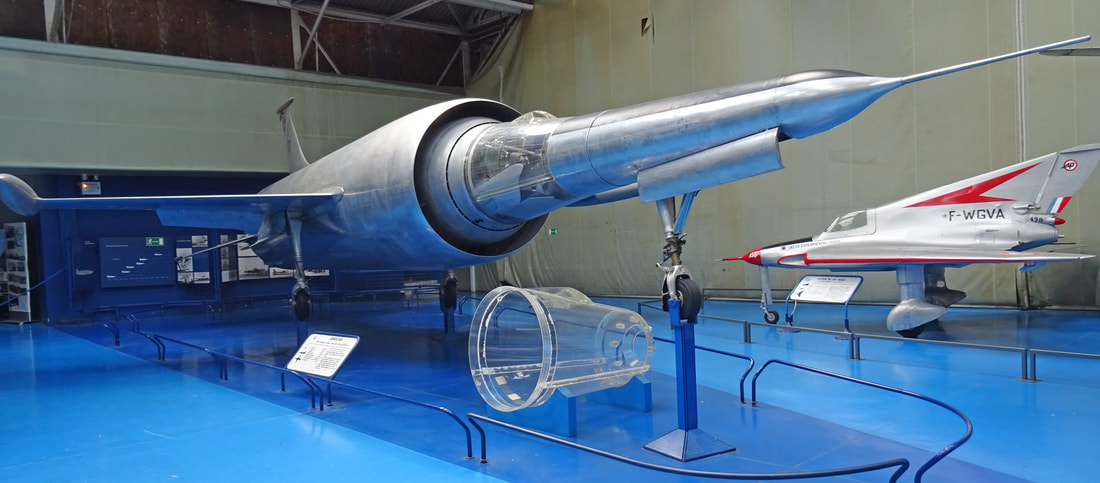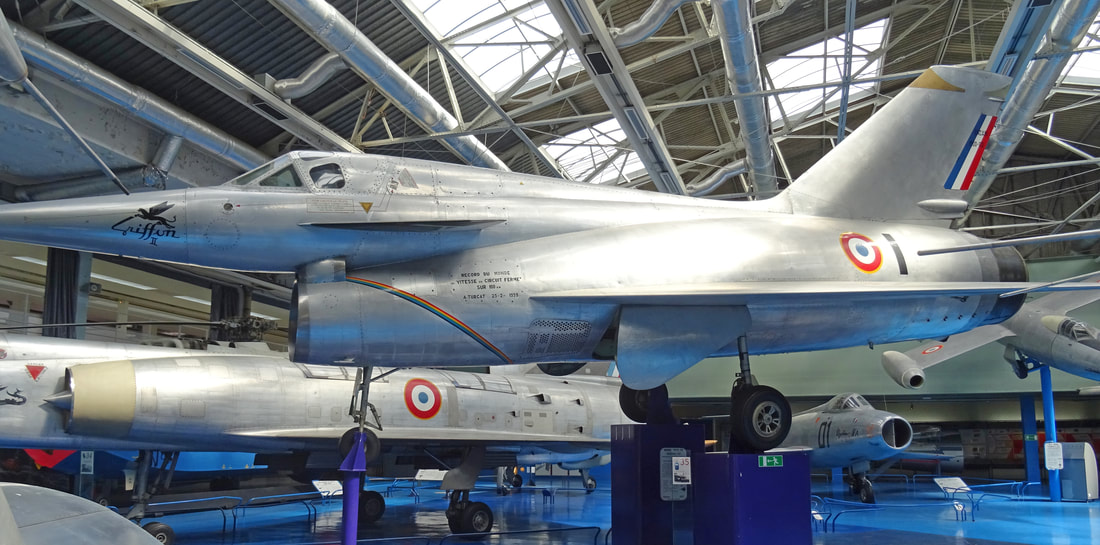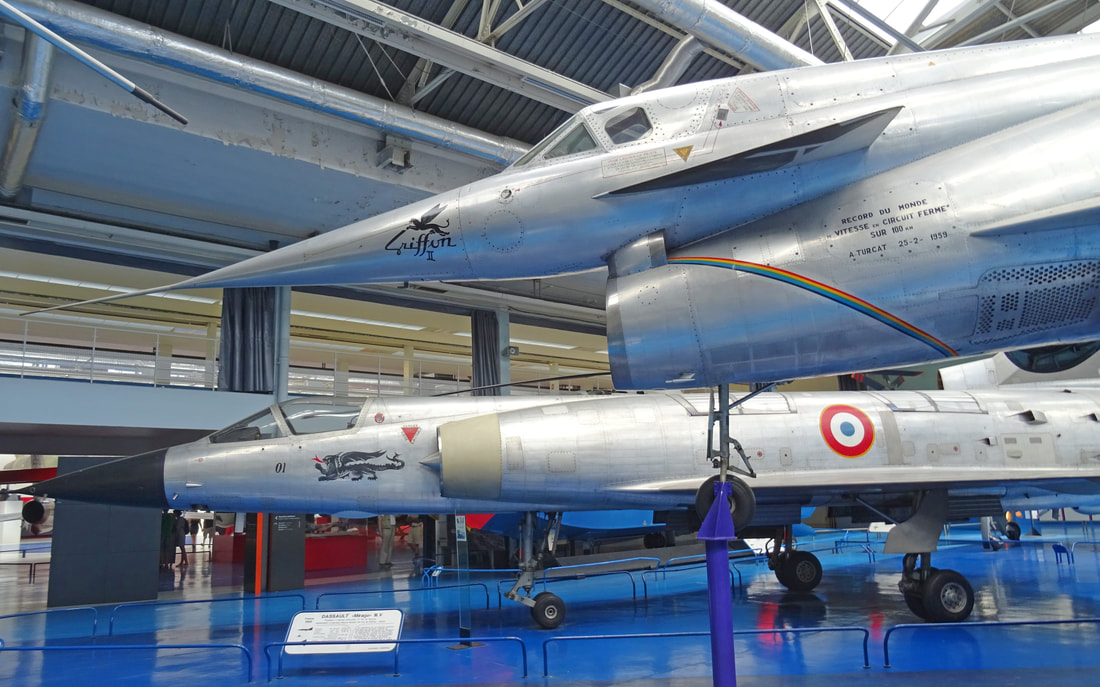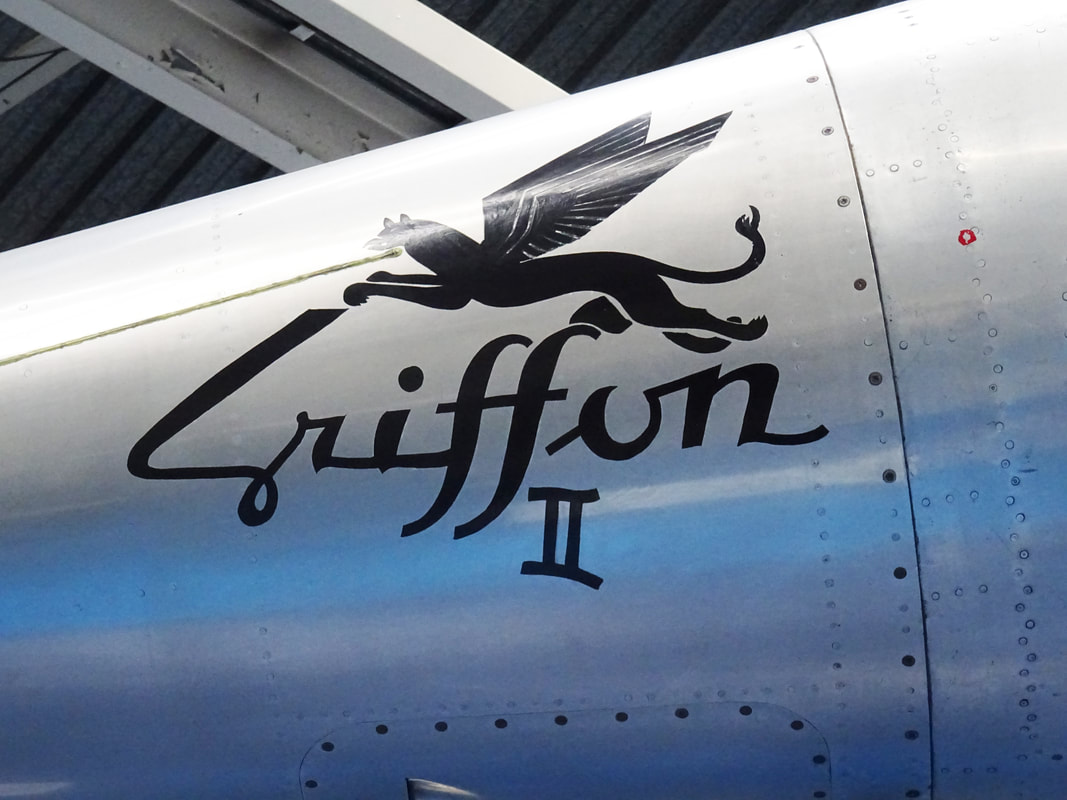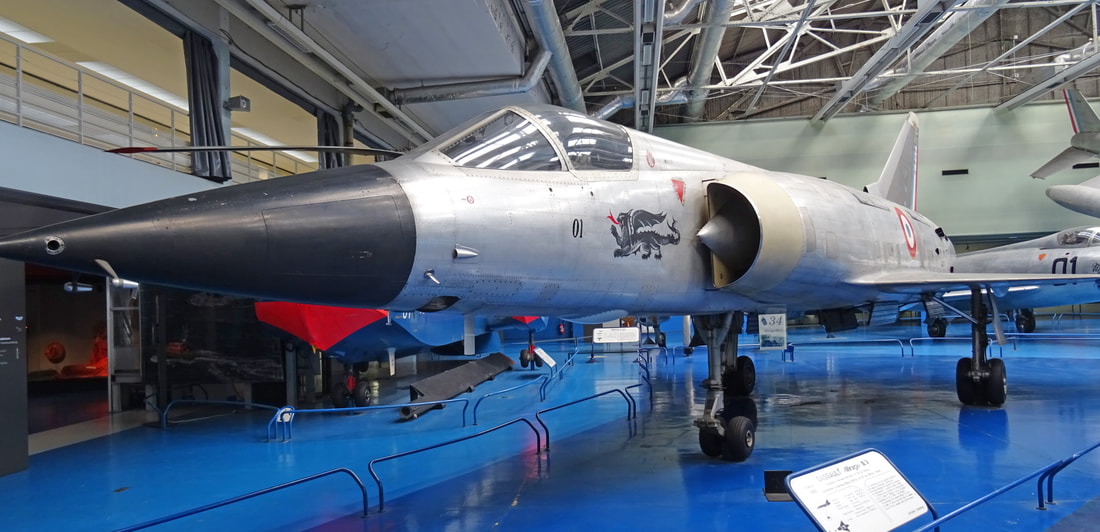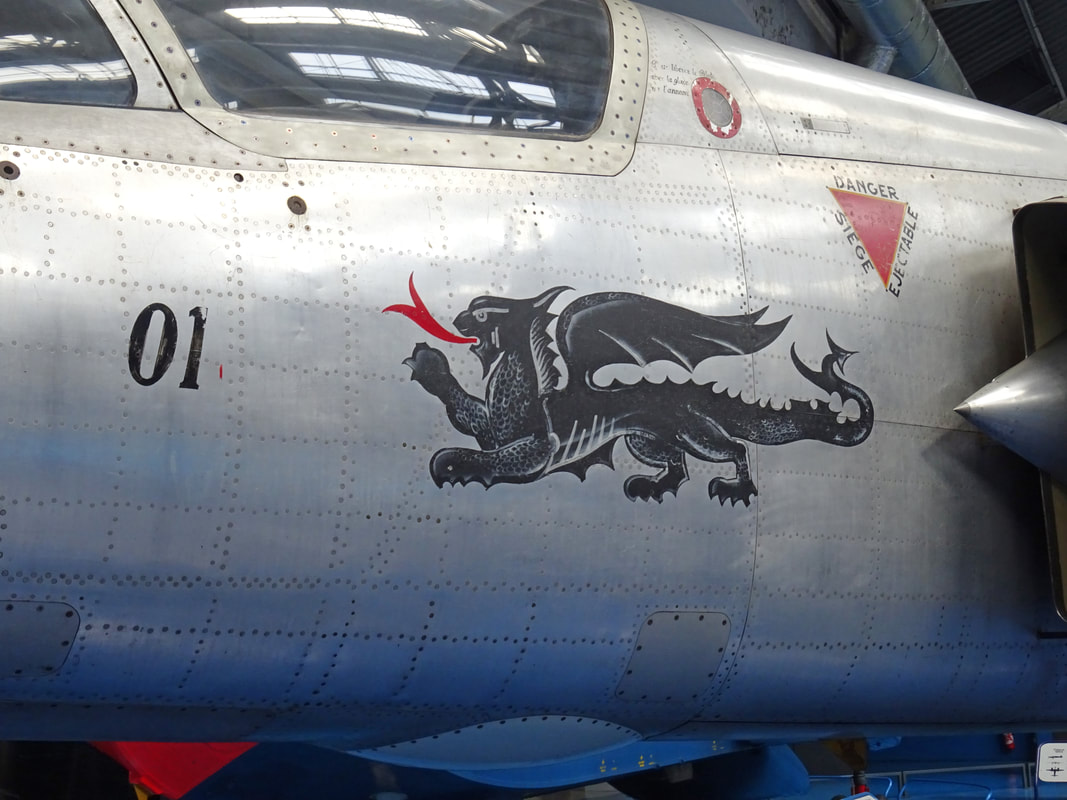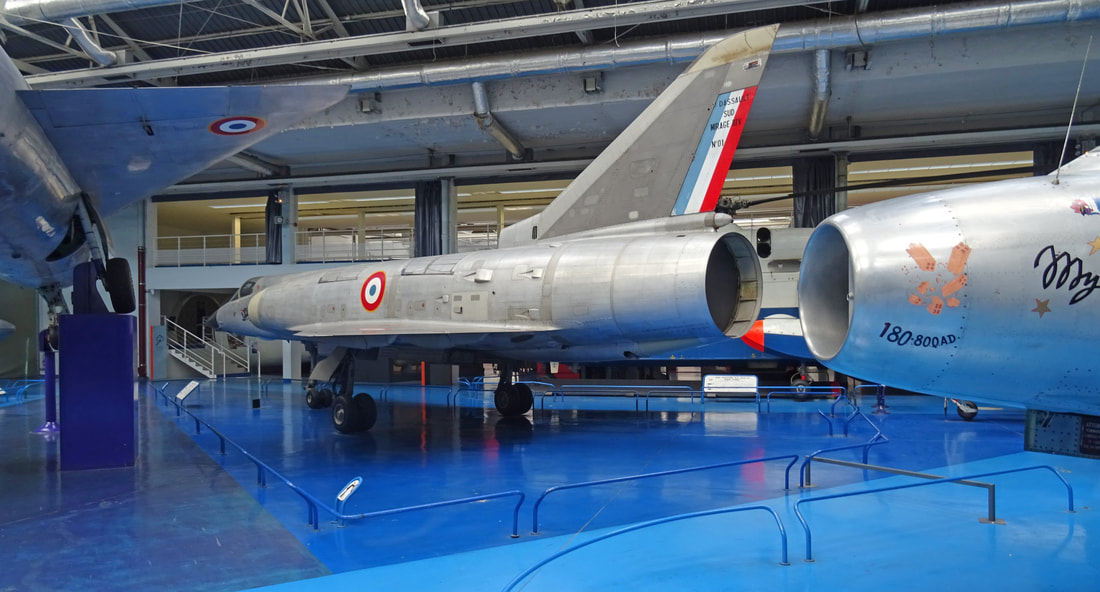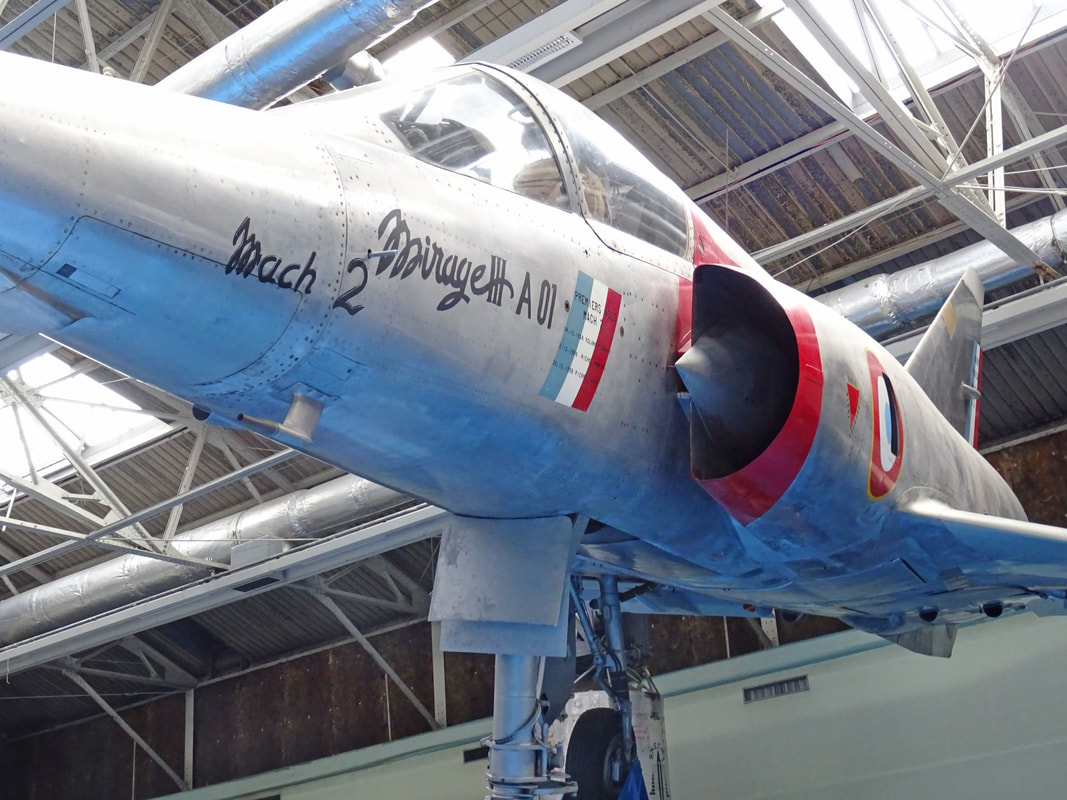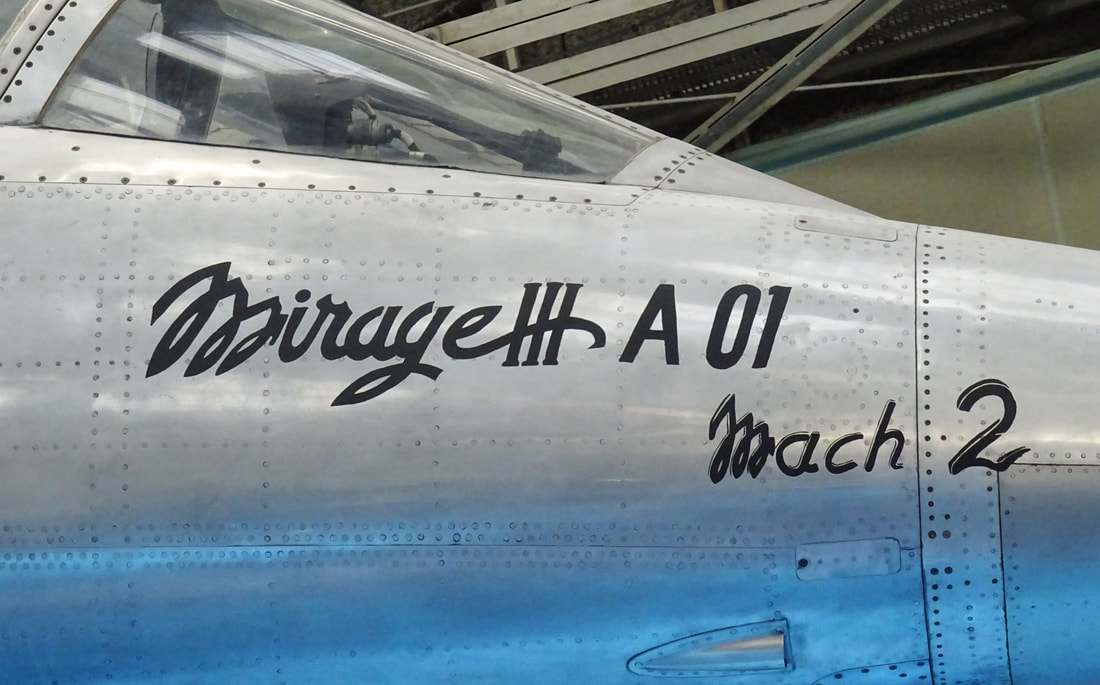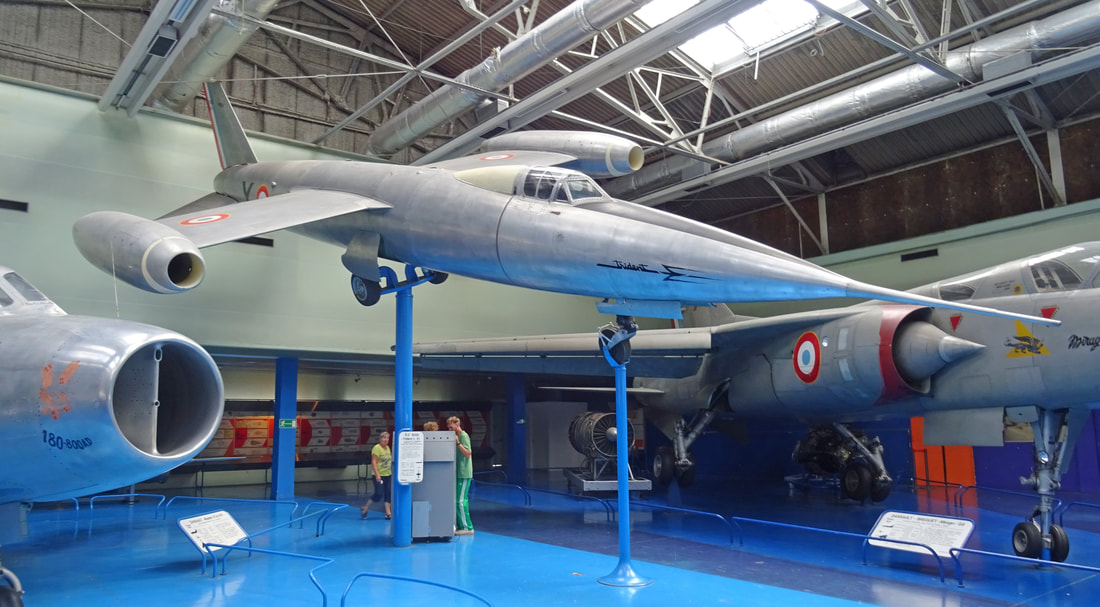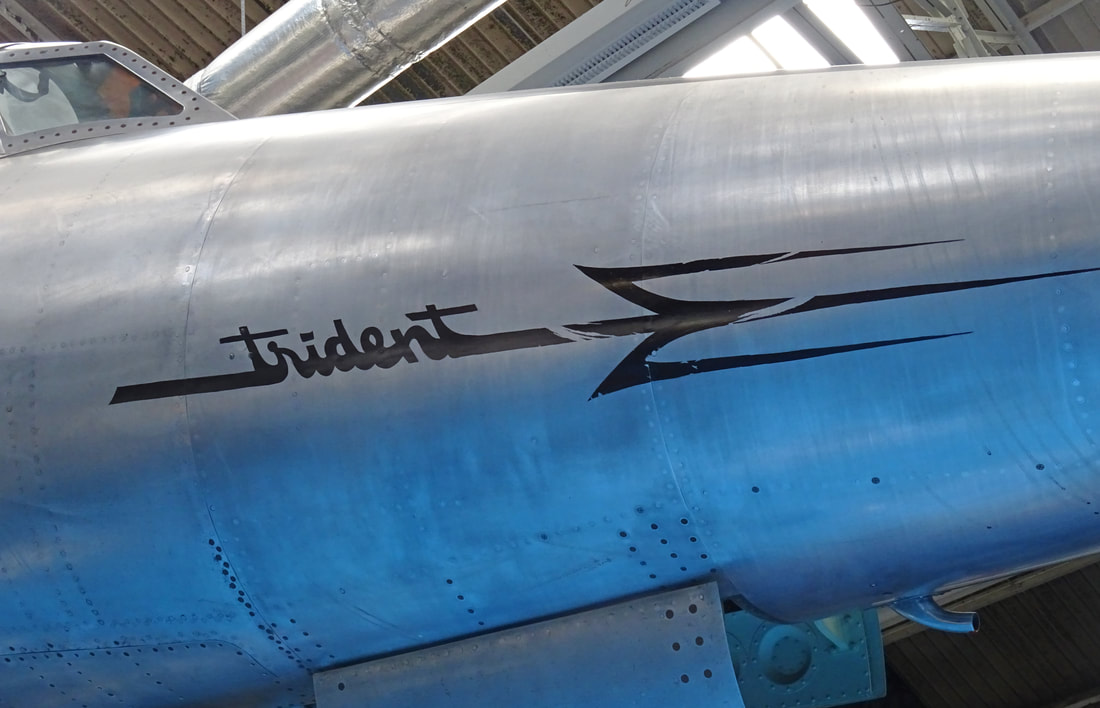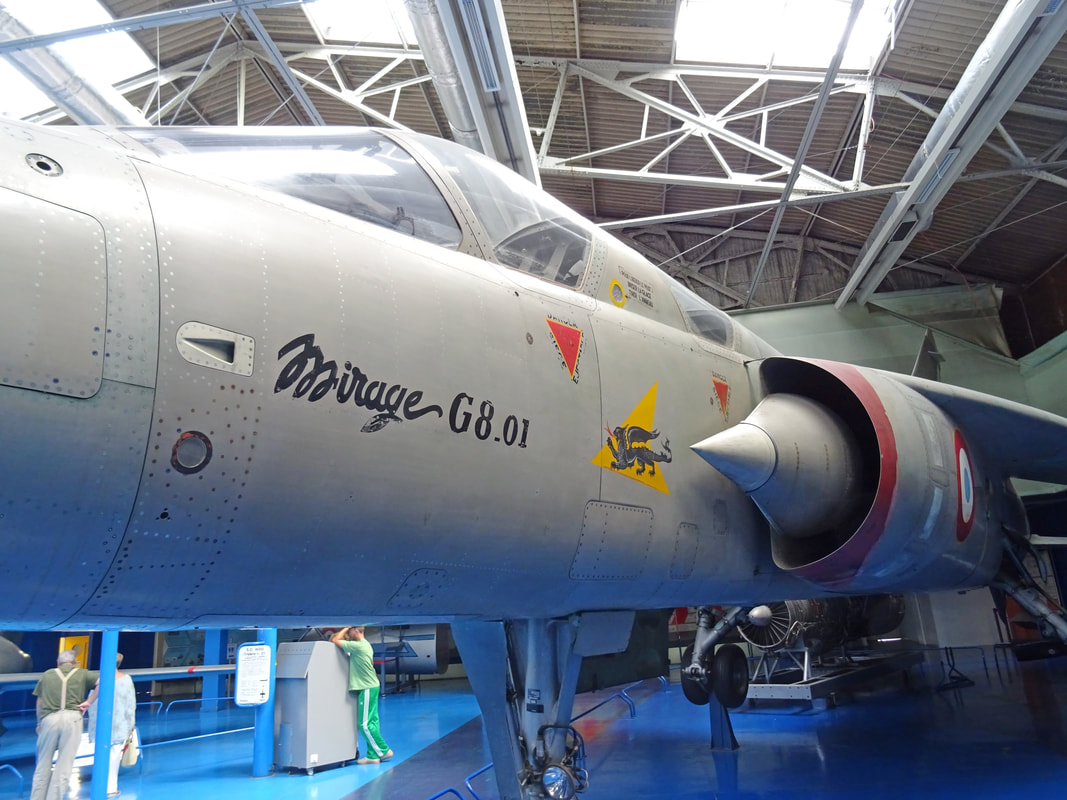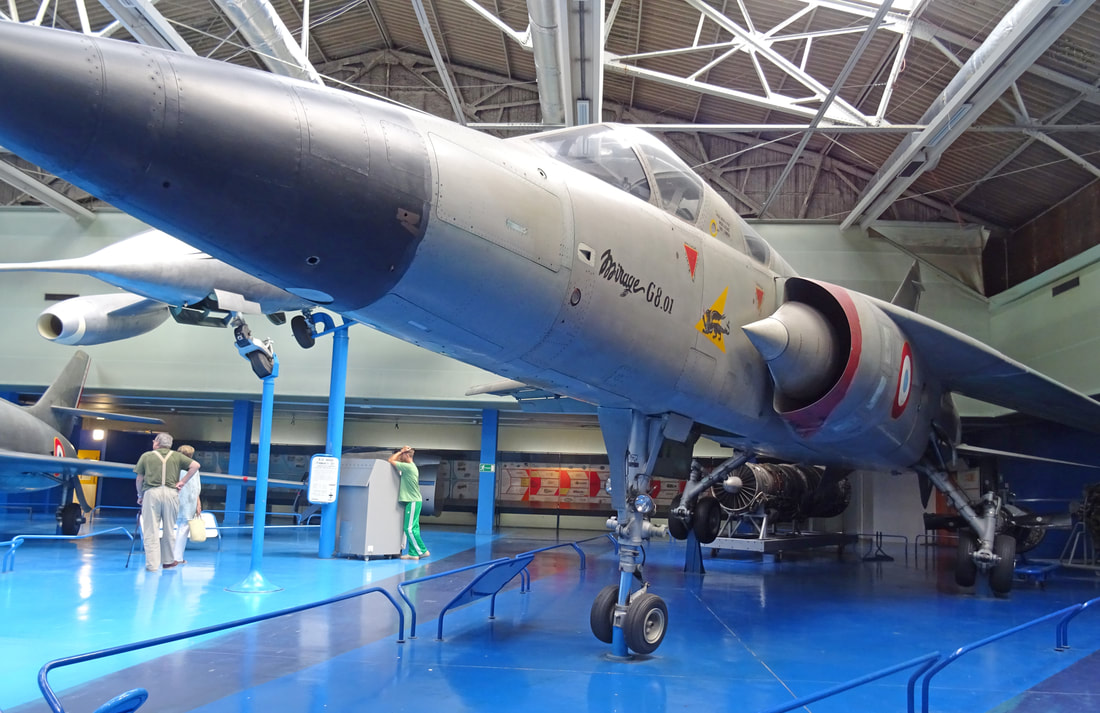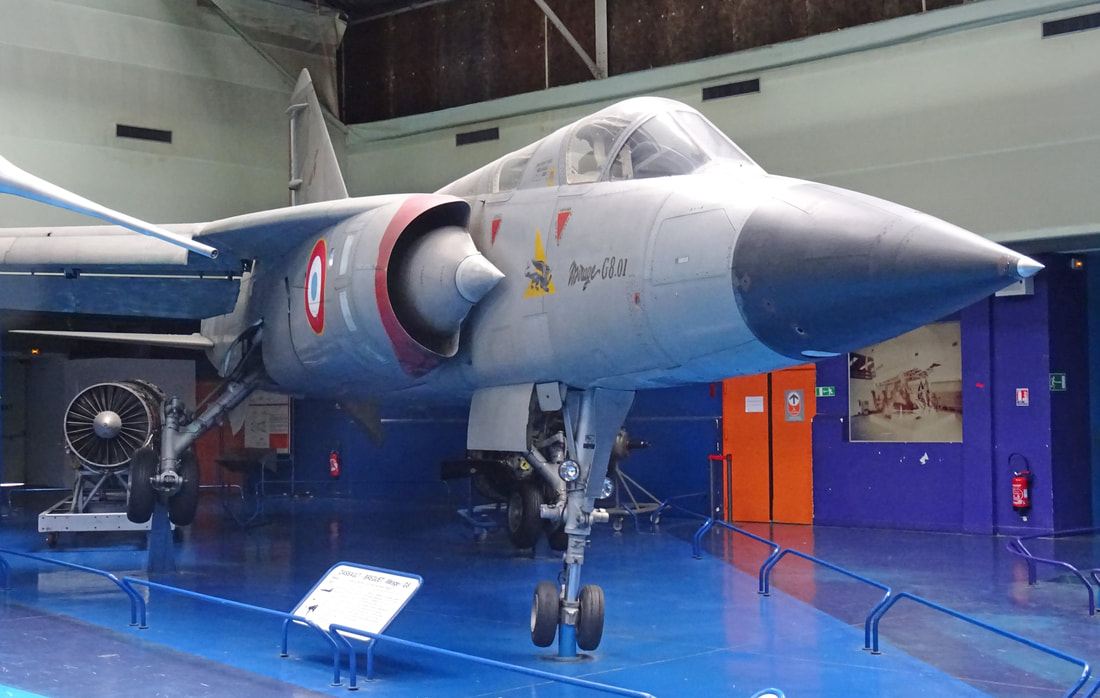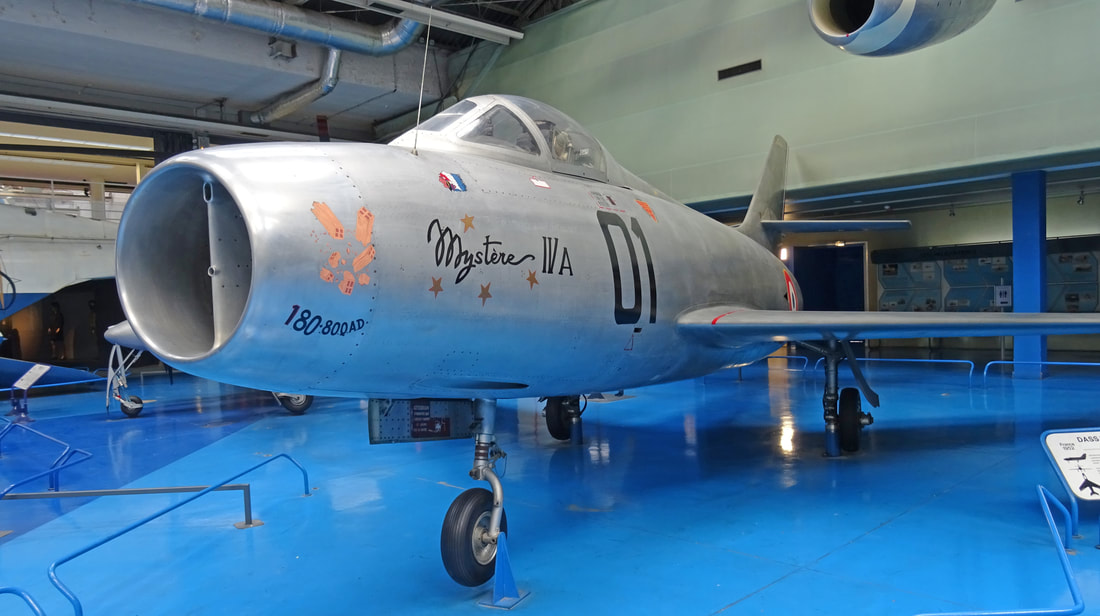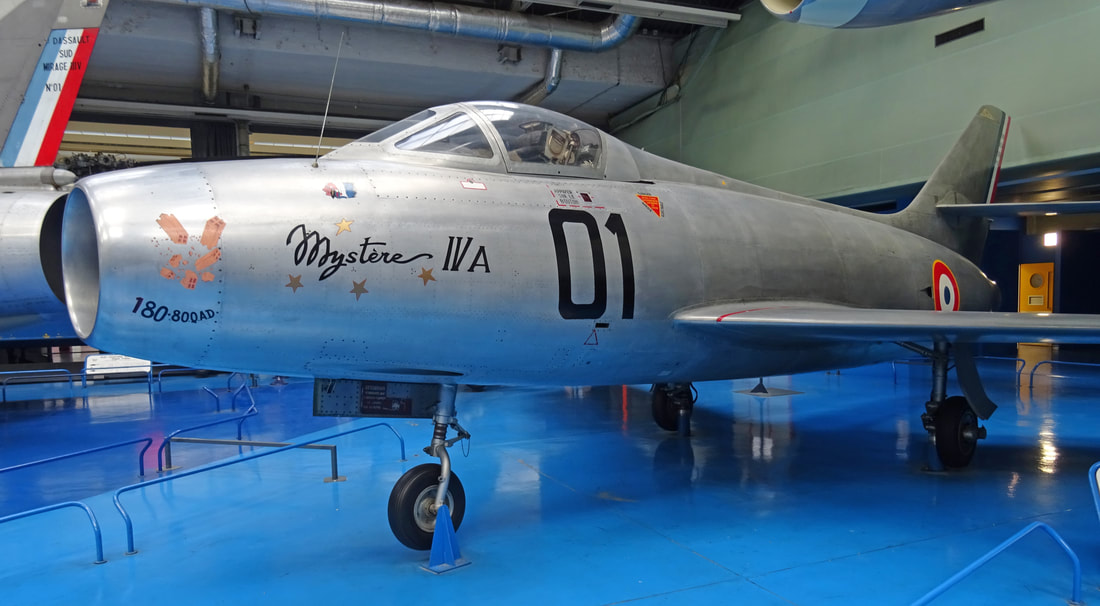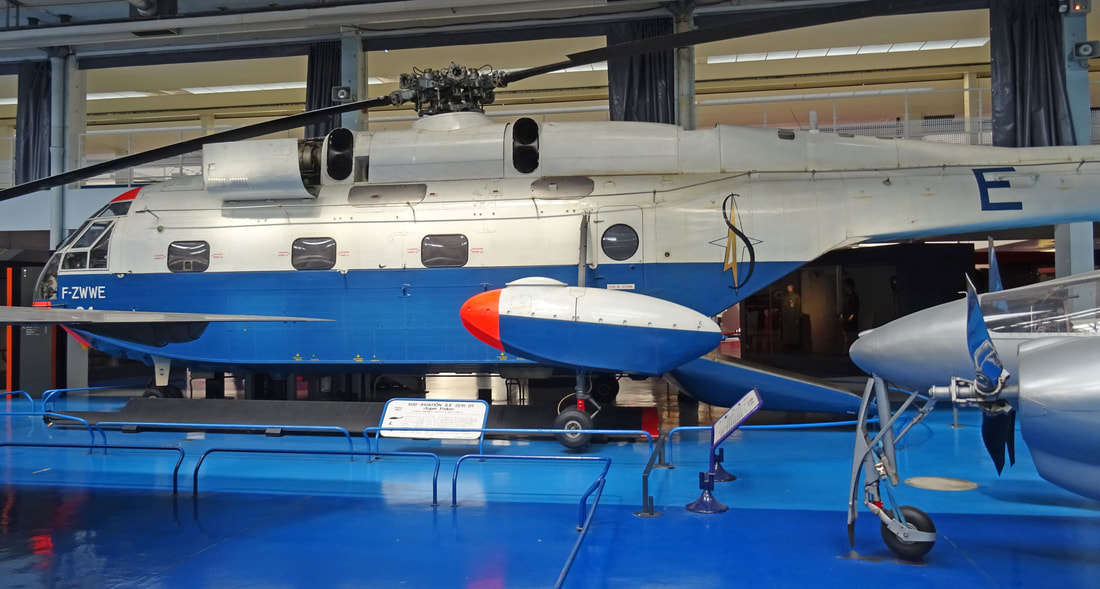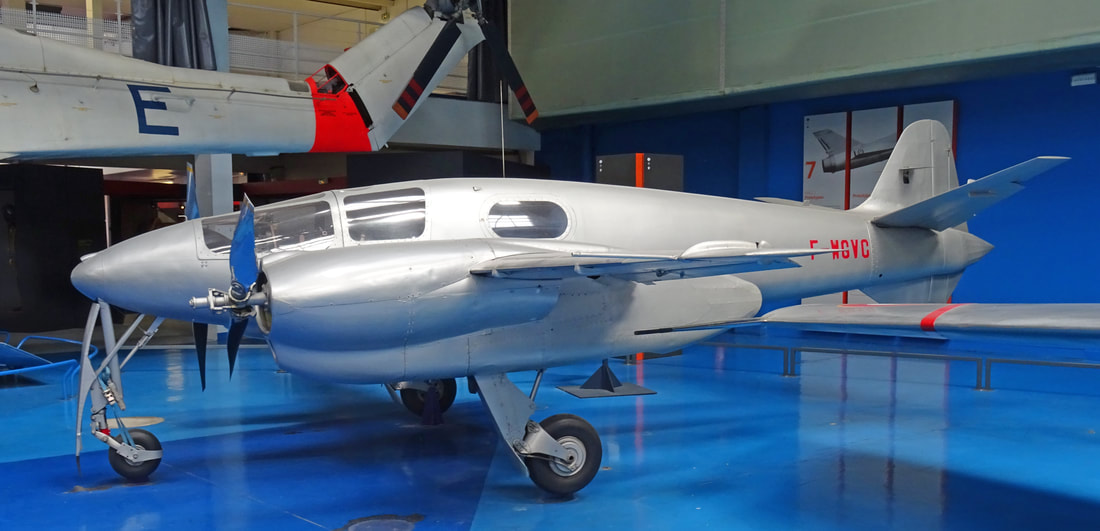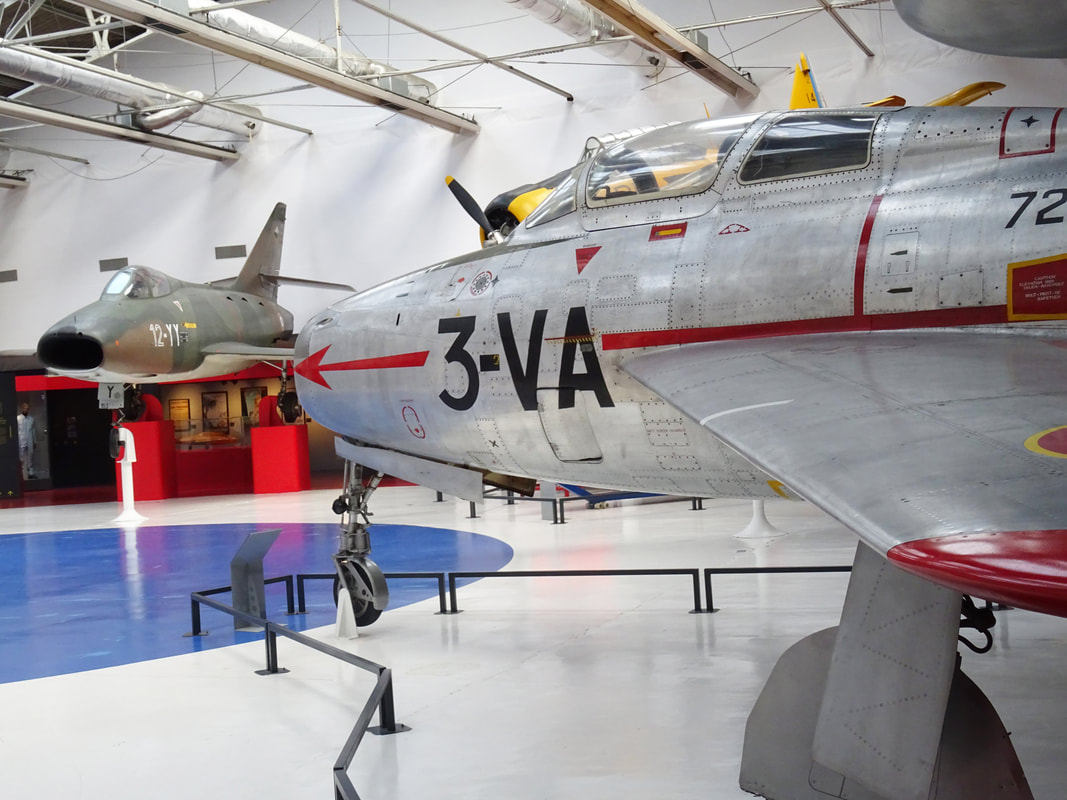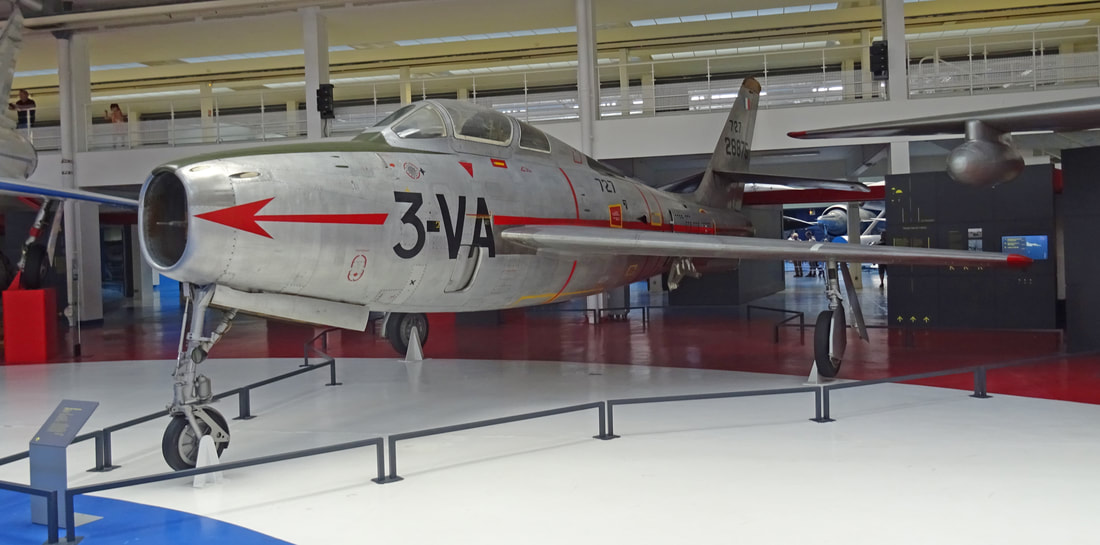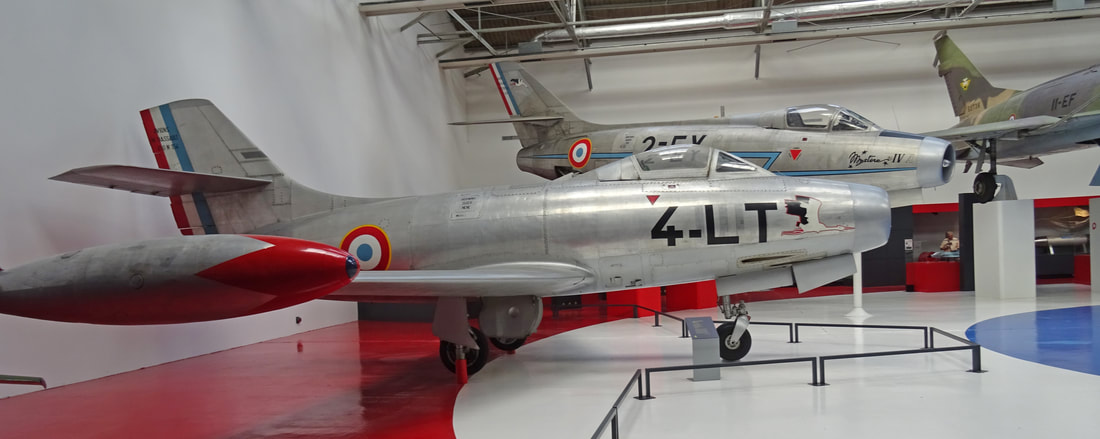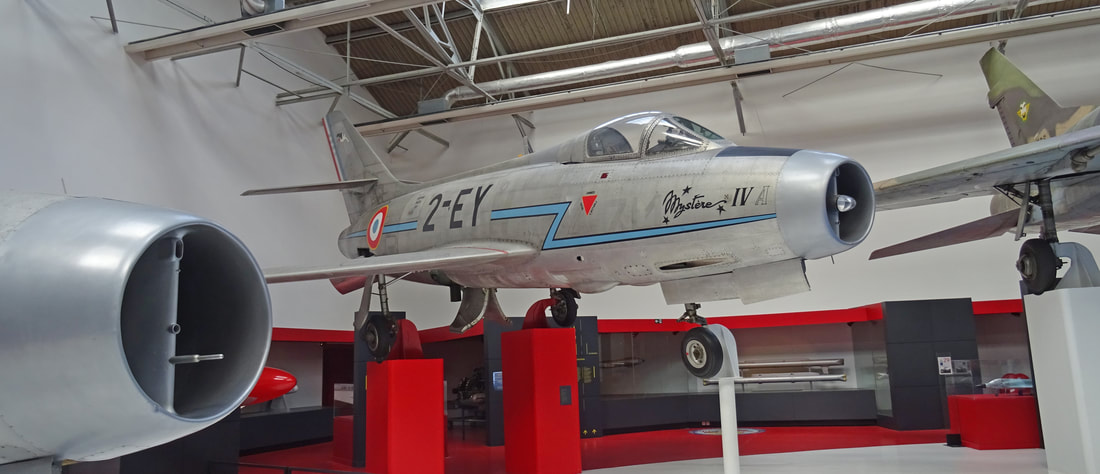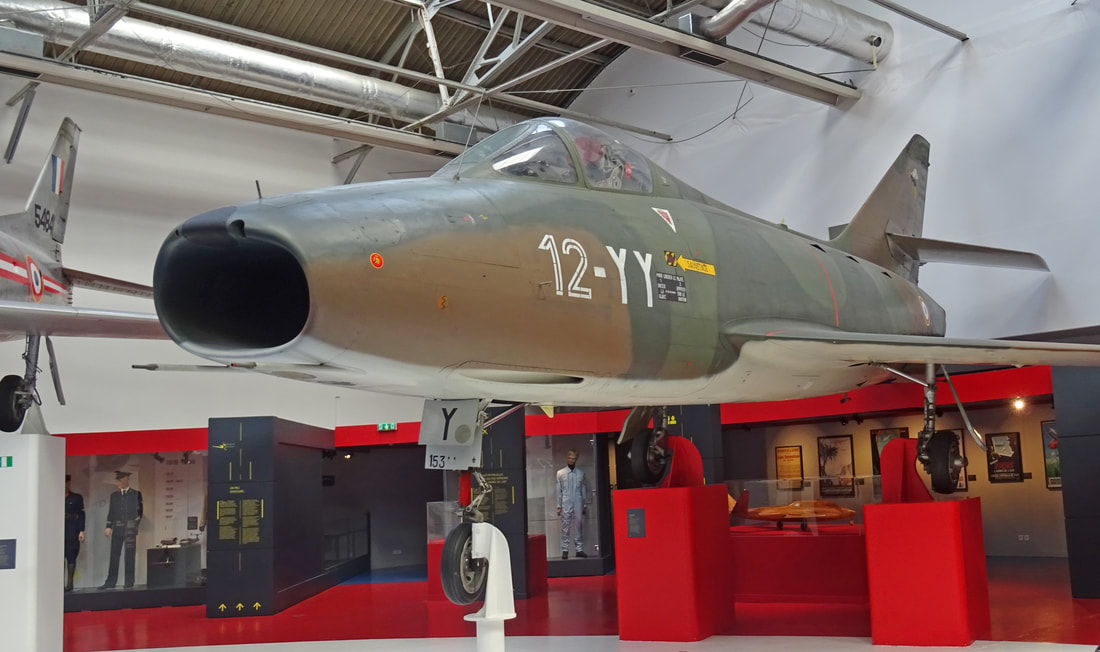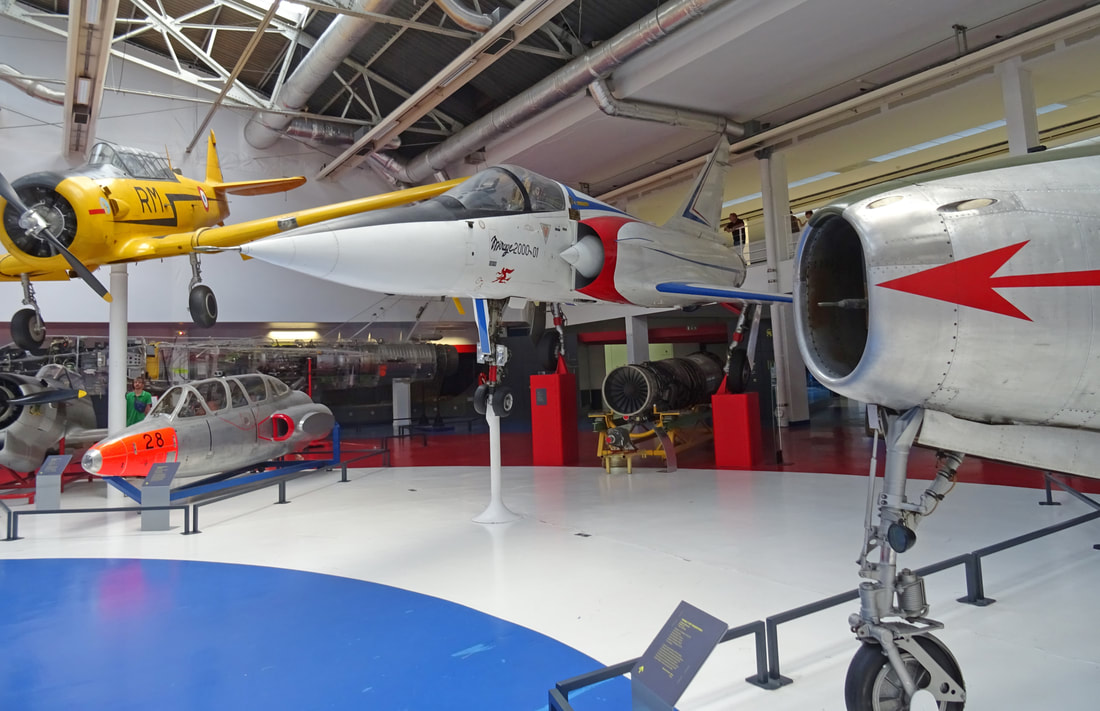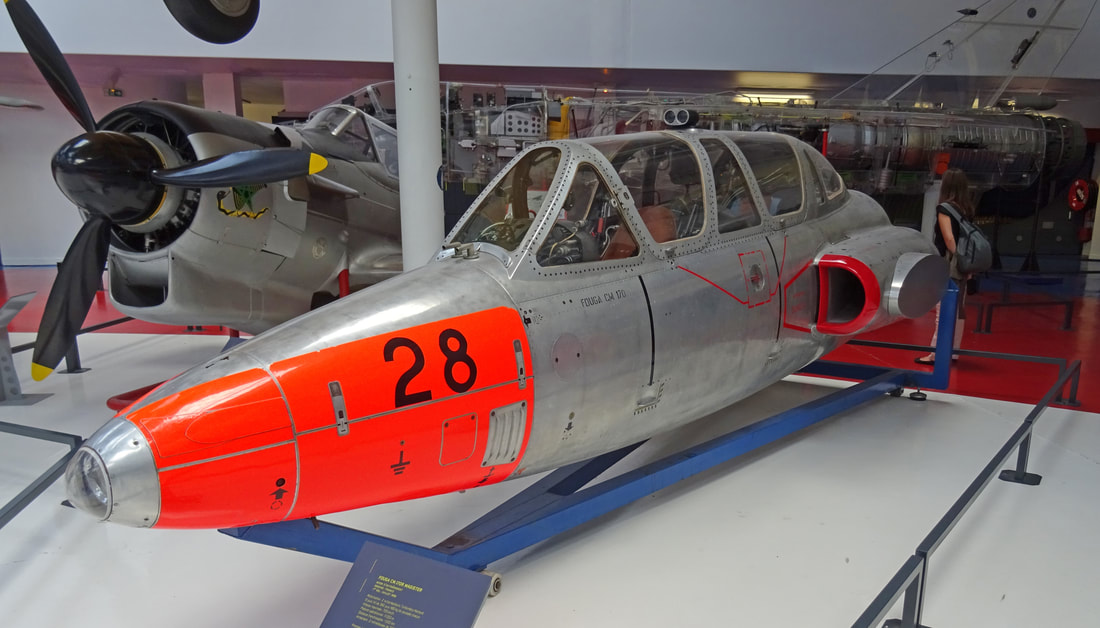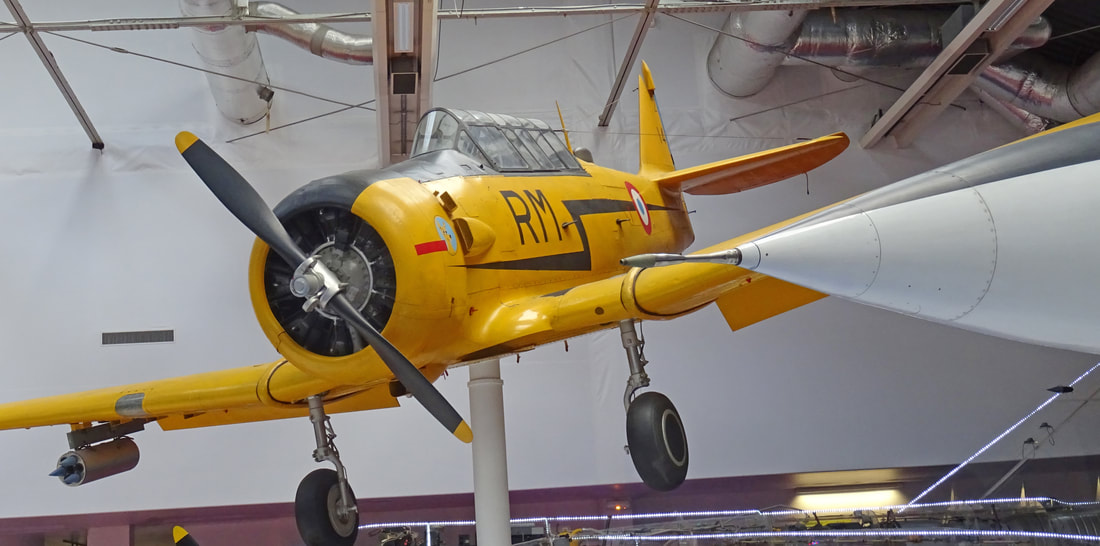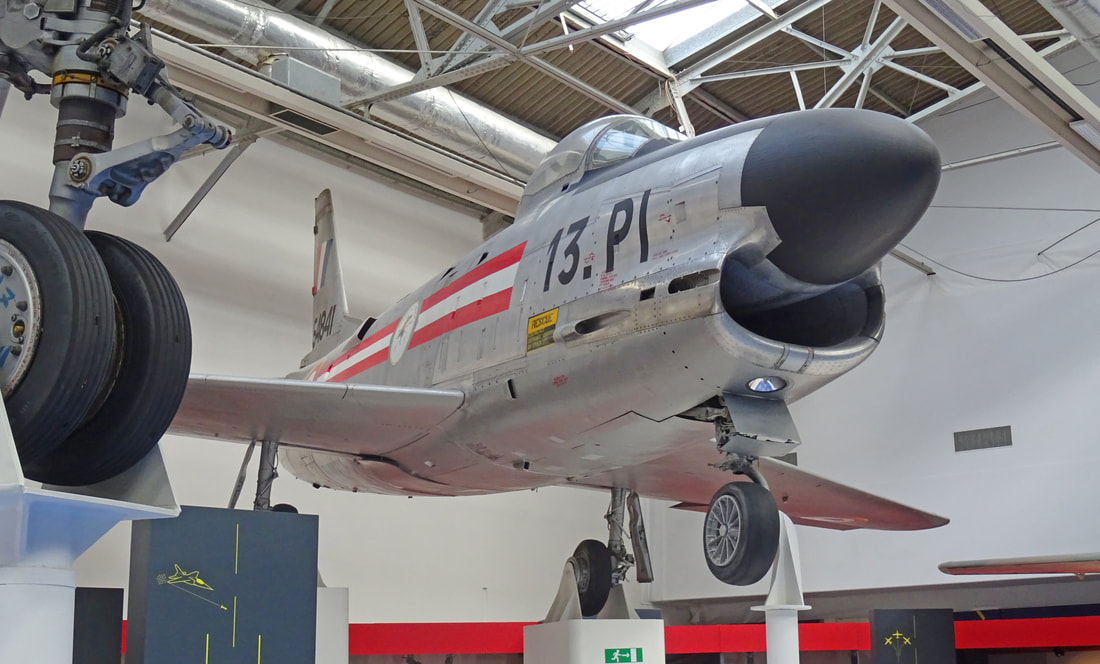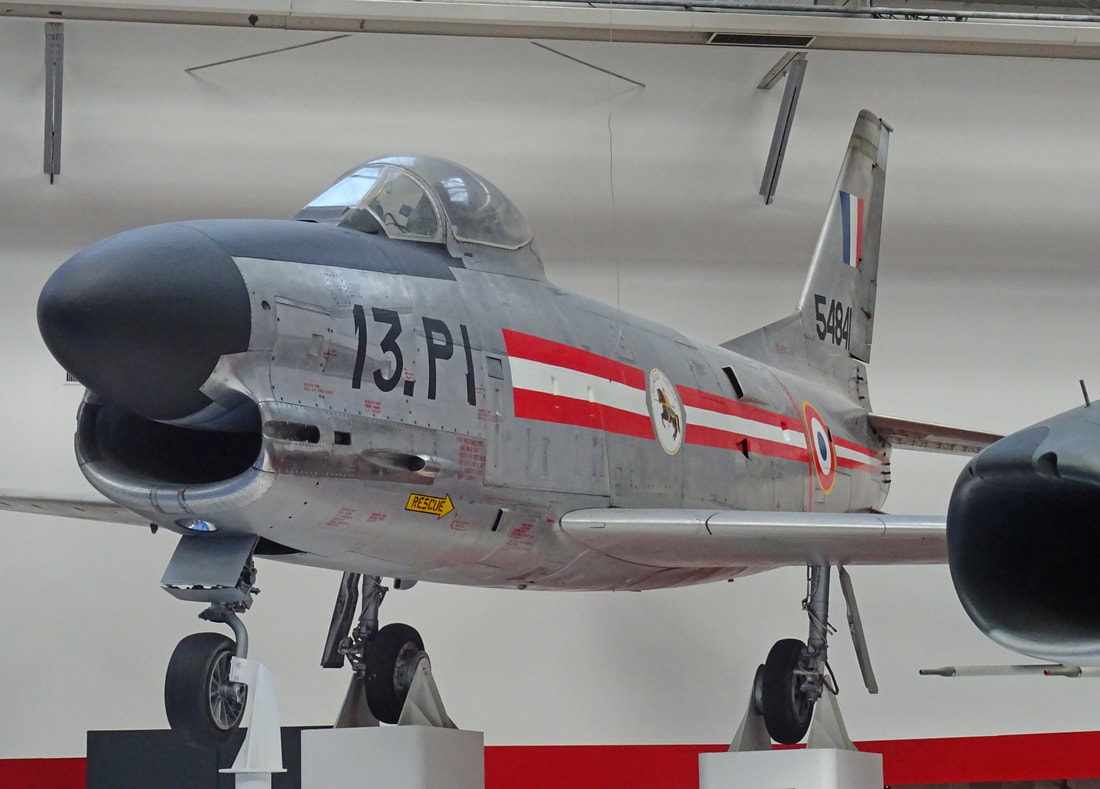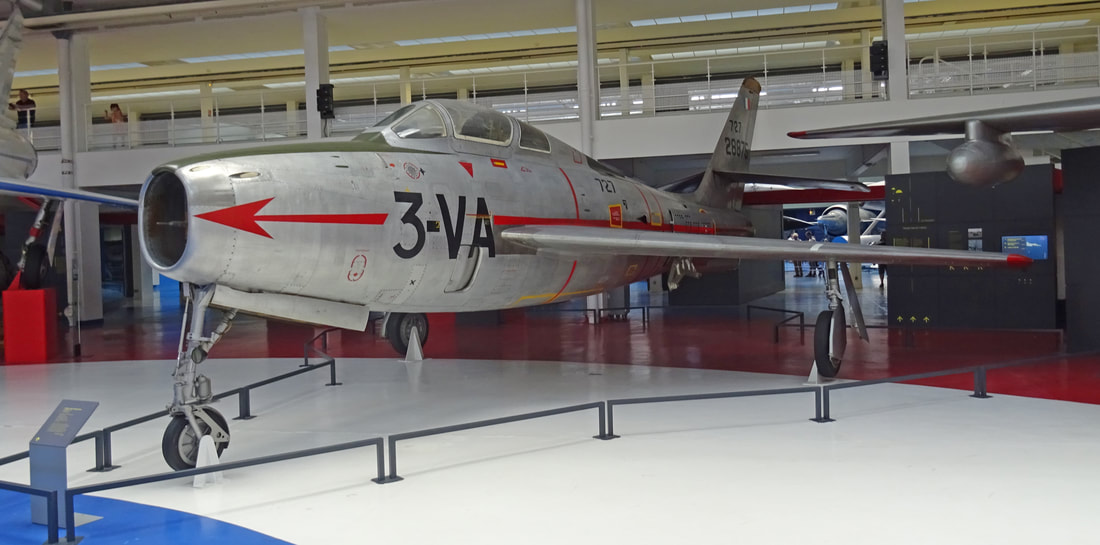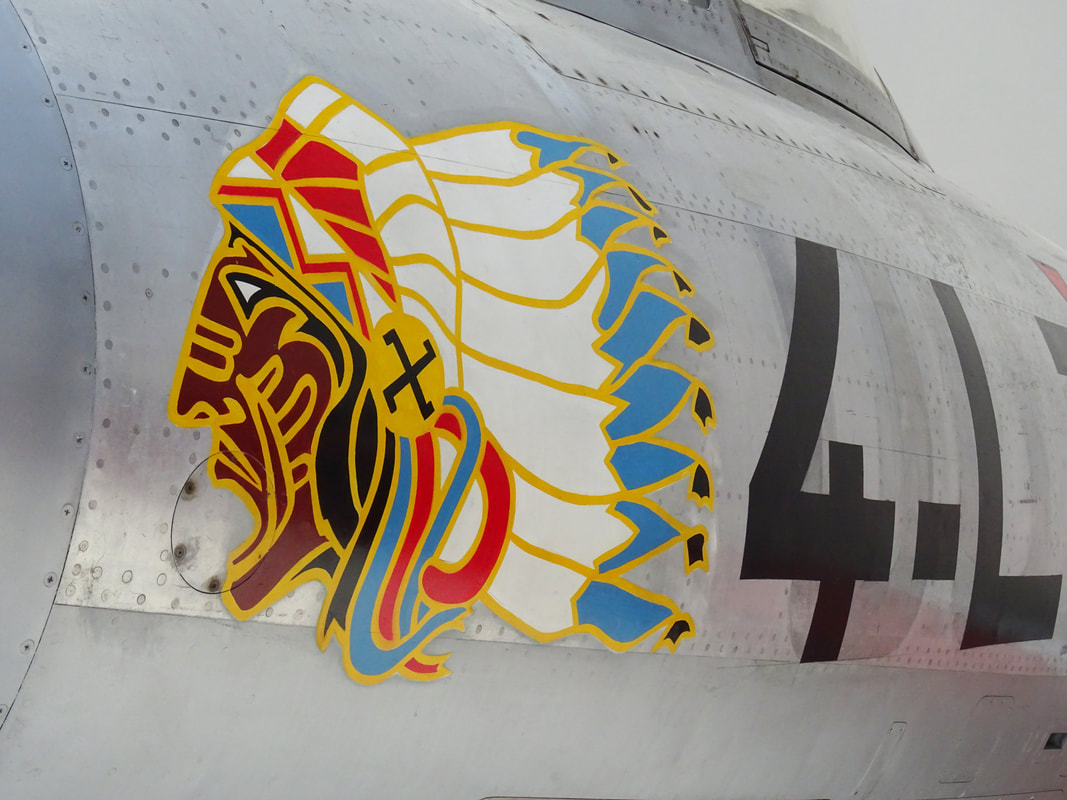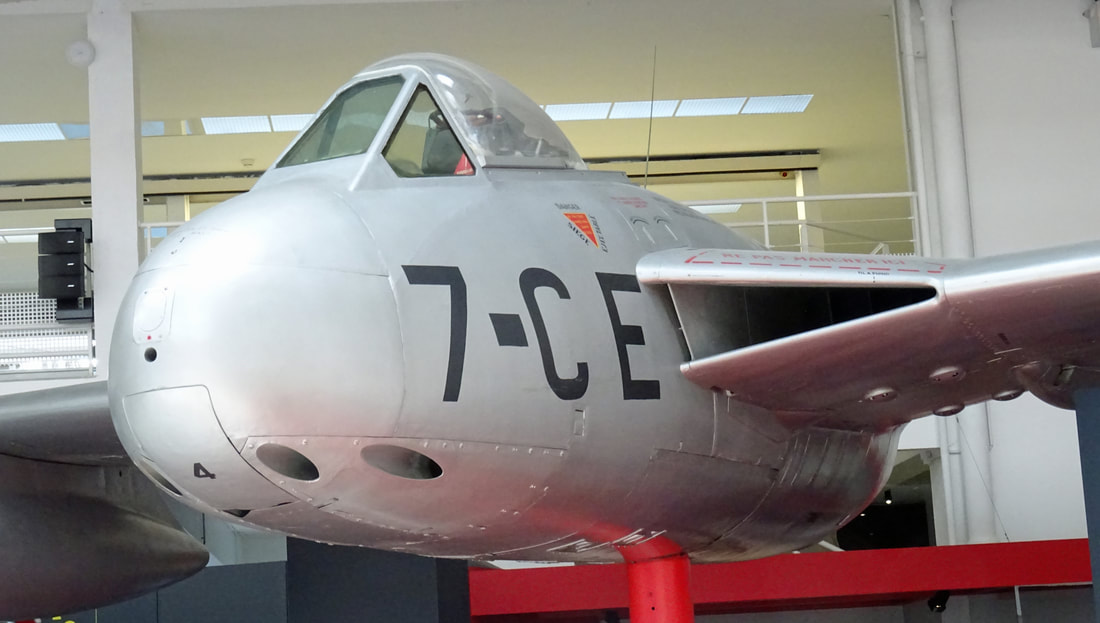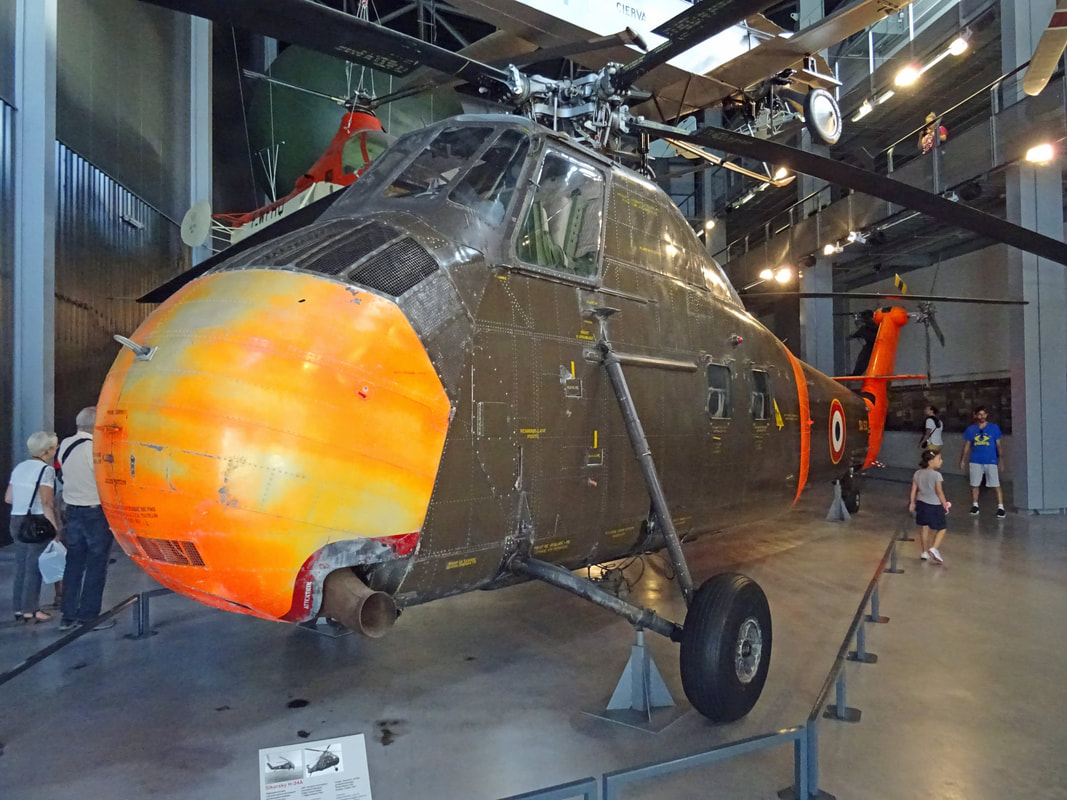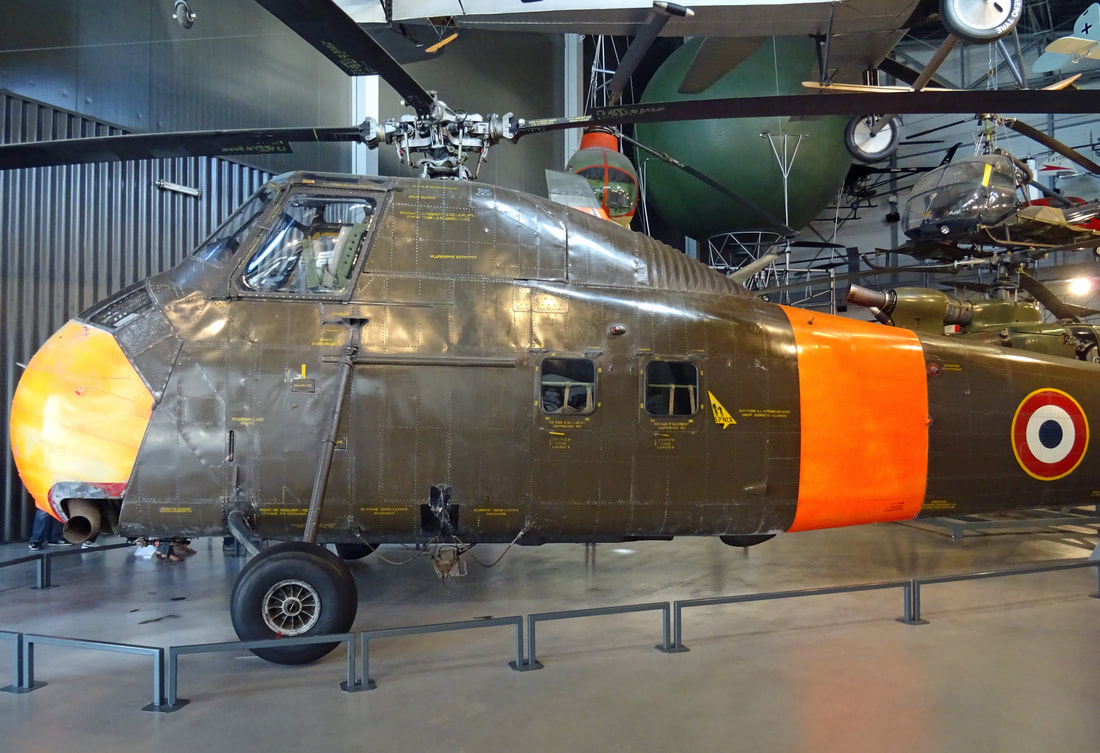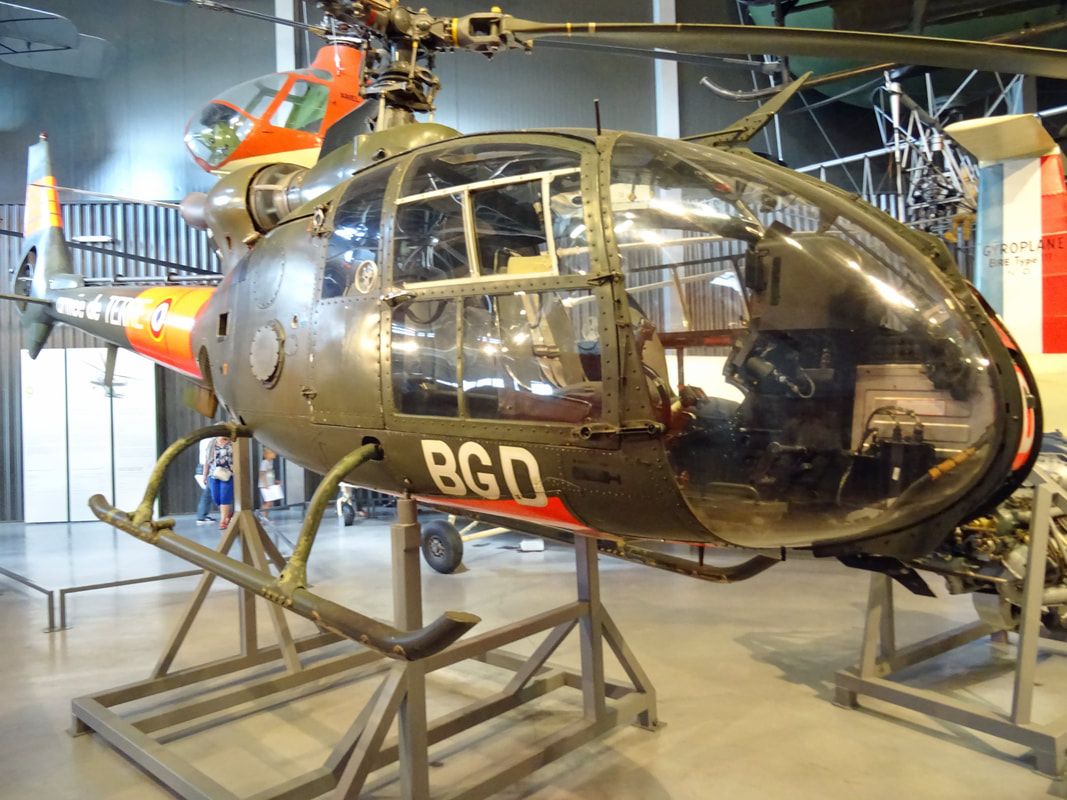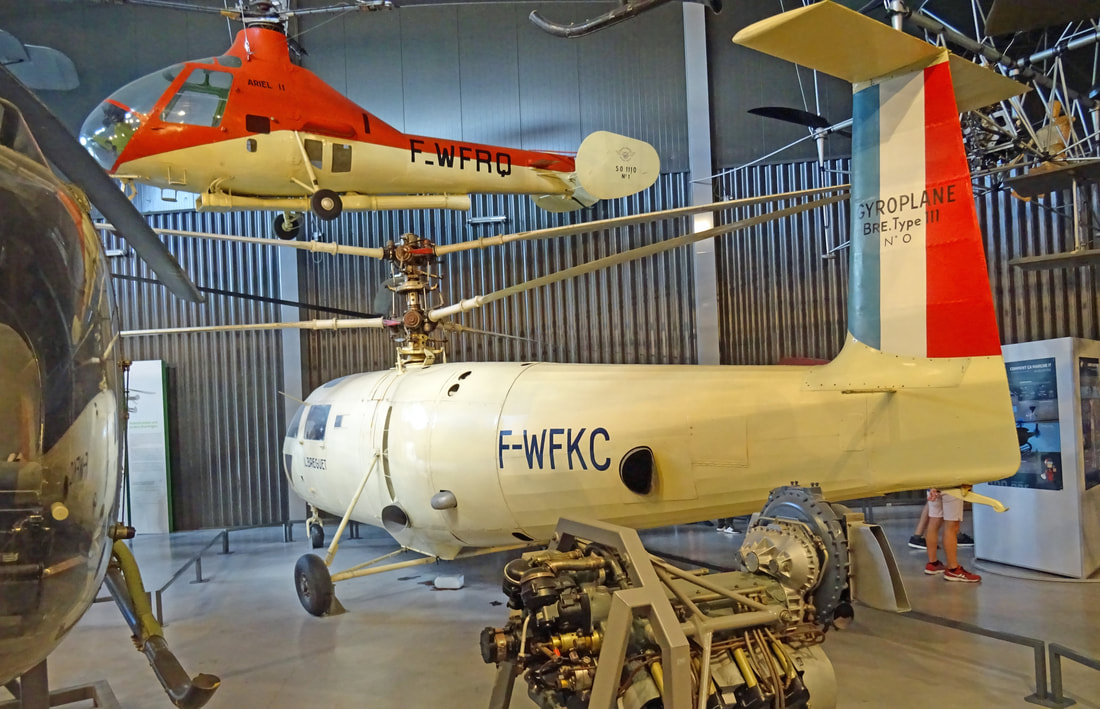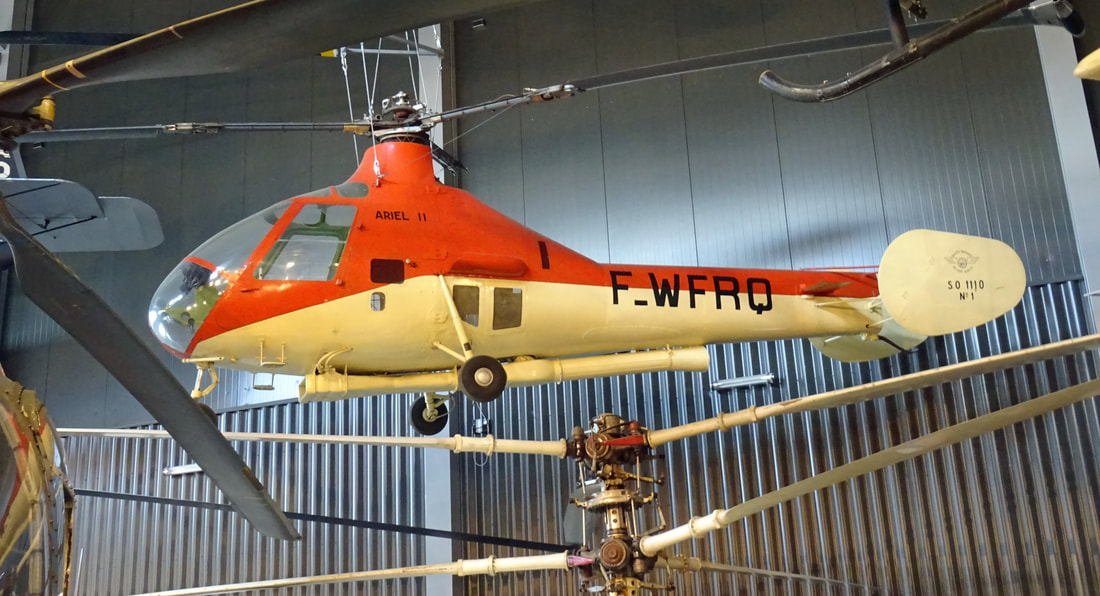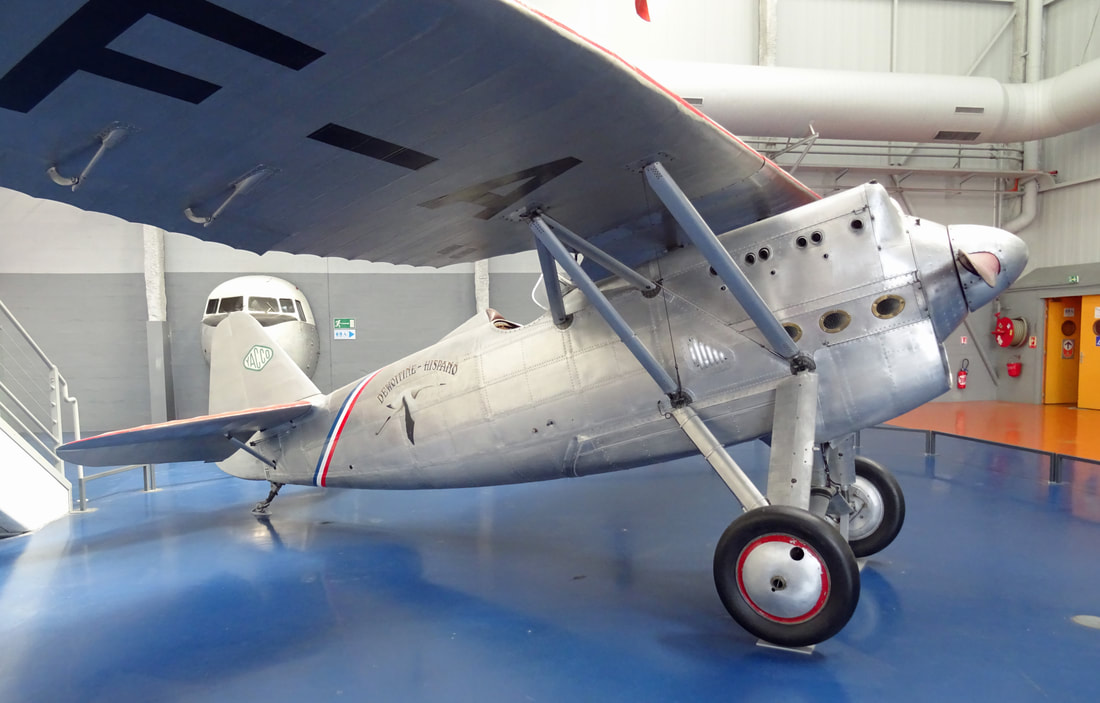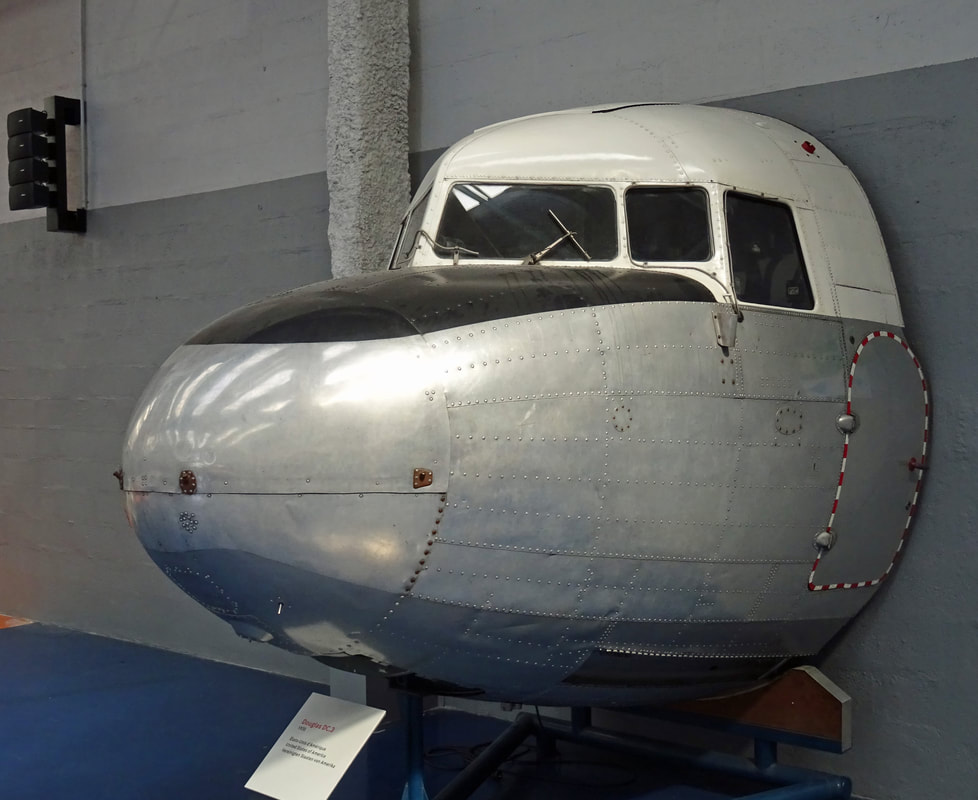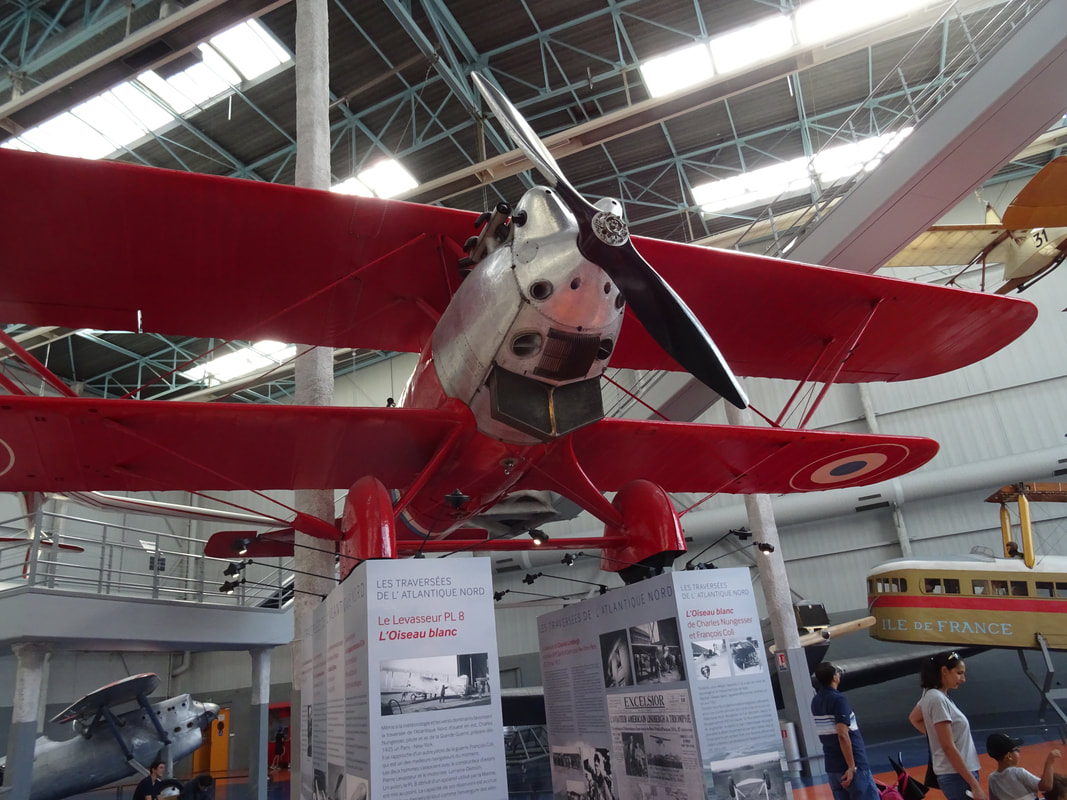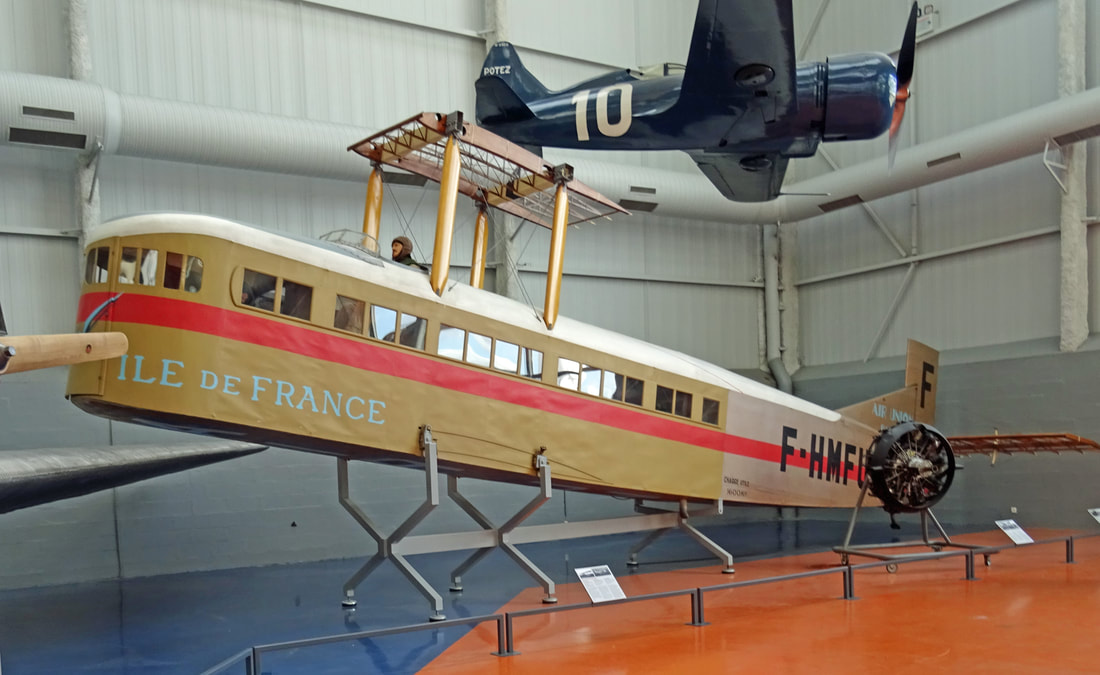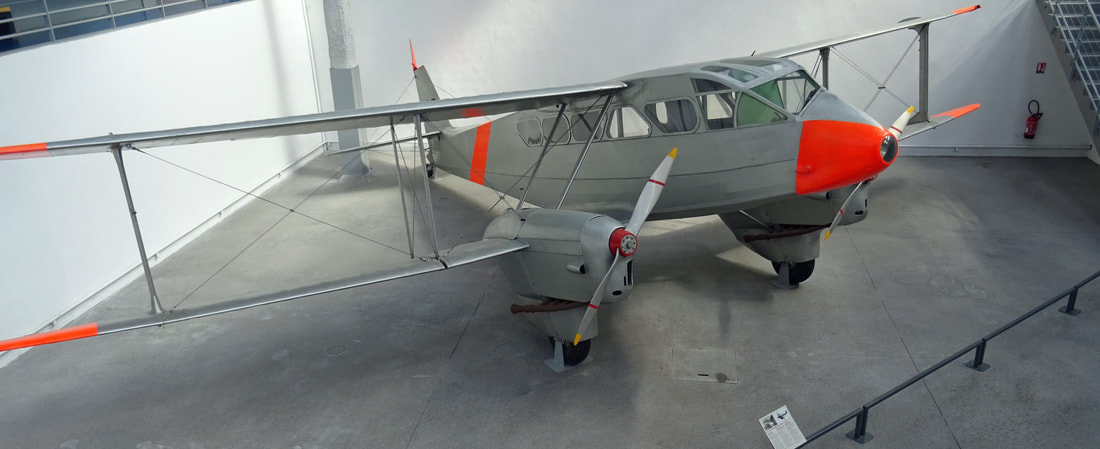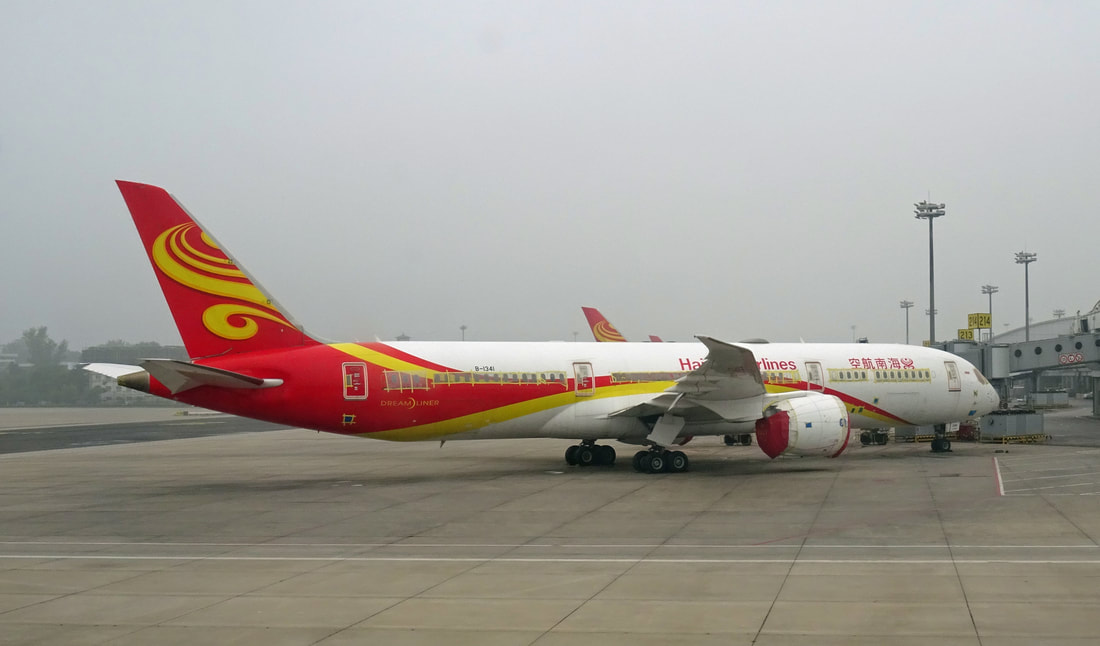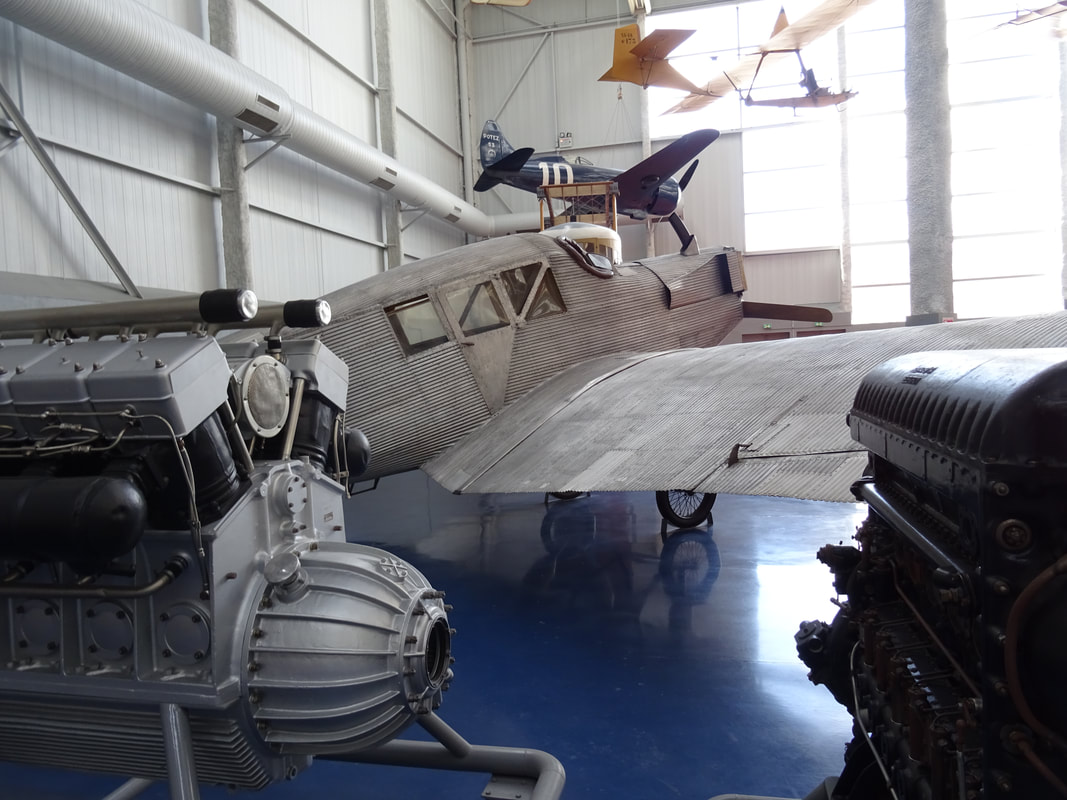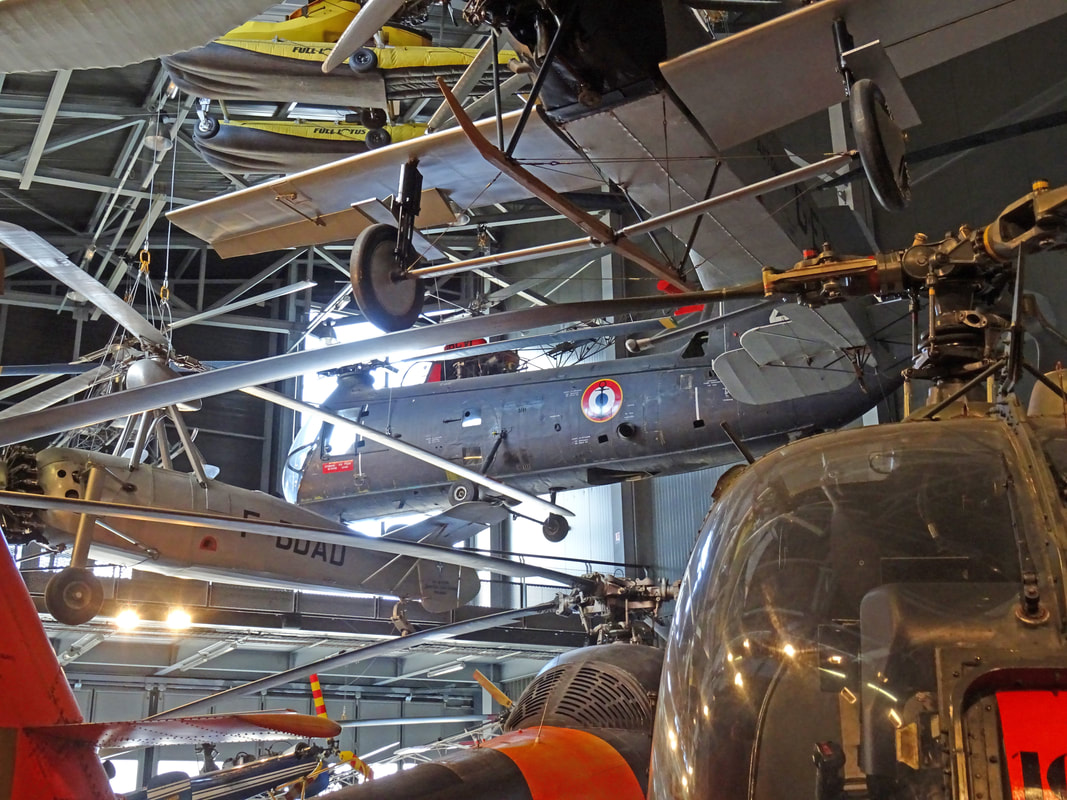The Musée de l'air et de l'espace, Le Bourget.
by Jan Koppen
We boarded Carpatiar's Fokker-100 YR-FZA, which operated for KLM Cityhopper, flight KL1777 from Amsterdam to Hamburg, on August 17, 2018.
|
In August 2018, my friend and colleague, Xavier Poirot, and I wanted to fly the Carpatair Fokker 100, which flew Amsterdam - Hamburg, on behalf of KLM's partner, KLM Cityhopper. While being in Hamburg, we took the opportunity to fly Air France's 'Baby-Airbus,' which did operate Hamburg - Paris that day. We both missed the A318 in our logbooks, so we killed two birds with one stone. After arrival in Paris, we treated ourselves to a visit to The Musée de l'Air et de l'Espace at Le Bourget.
|
YR-FZA is a 26 year old Fokker 100. Carpatair is a ACMI carrier who operated for KLM Cityhopper the summer of 2018 with two ships.
Zulu-Alpha' was delivered to American Airlines in May 1992. After 12 years she was sold to JetsGo in Canada.
A year later she went to Carpatair. We flew Zulu-Alpha on the sector AMS/HAM which is a regular one for the F-100.
Zulu-Alpha' was delivered to American Airlines in May 1992. After 12 years she was sold to JetsGo in Canada.
A year later she went to Carpatair. We flew Zulu-Alpha on the sector AMS/HAM which is a regular one for the F-100.
Our flight to Charles de Gaulle was onboard Air France A318 F-GUBC.
|
The Airbus A318 is the smallest airliner in the Airbus A320 family. The A318 carries 107 to 132 passengers and has a maximum range of 3,100 nmi (5,700 km; 3,600 mi). Final assembly of the aircraft took place in Hamburg, Germany.
It is intended primarily for short-range service, although British Airways uses the aircraft on a London City Airport to New York-JFK Airport transatlantic route (albeit with a stopover in Shannon for refueling on the westbound leg, as it is too heavy to clear the short runway at LCY with a full load of fuel). As of January 2019, Air France was the largest operator of the Airbus A318. |
"France is in the Air"
|
Paris–Le Bourget Airport (French: Aéroport de Paris-Le Bourget) is an airport located, 6 NM (11 km; 6.9 mi) north-northeast (NNE) of Paris, France.
Once Paris's principal airport, it is now used only for general aviation, including business jet operations. It also hosts air shows, most notably the Paris Air Show. The airport started commercial operations in 1919 and was Paris's only airport until the construction of Orly Airport in 1932. It is famous as the landing site for Charles Lindbergh's historic solo transatlantic crossing in 1927 in the Spirit of St. Louis. In 1977, Le Bourget was closed to international airline traffic and in 1980 to regional airline traffic, but continues serving both domestic and international business aviation. Since 1975, Le Bourget Airport has hosted the Musée de l’air et de l’espace, France's main state-owned aviation museum. Following the discontinuation of regular commercial traffic in 1977, space available to house museum collections and displays has progressively increased. |
The Musée de l'air et de l'espace, (English: Air and Space Museum), is a French aerospace museum, located at the south-eastern edge of Le Bourget Airport, north of Paris, and in the commune of Le Bourget.
Occupying over 150,000 square metres (1,600,000 sq ft) of land and hangars, it is one of the oldest aviation museums in the world. The museum's collection contains more than 19,595 items, including 150 aircraft, and material. Also displayed are more modern air and spacecraft, including the prototype for Concorde, and Swiss and Soviet rockets.
Occupying over 150,000 square metres (1,600,000 sq ft) of land and hangars, it is one of the oldest aviation museums in the world. The museum's collection contains more than 19,595 items, including 150 aircraft, and material. Also displayed are more modern air and spacecraft, including the prototype for Concorde, and Swiss and Soviet rockets.
Air France Boeing 747-100 F-BPVJ.
Air Inter Dassault Mercure F-BTTD.
The Dassault Mercure is a twin-engined narrow-body jet-powered airliner developed and manufactured by French aircraft firm Dassault Aviation. According to Dassault, it was the first large-scale European cooperative civil aeronautics programme. The Mercure 100 was the first commercial airliner operated by an entirely female crew.
|
Air Inter (Lignes Aériennes Intérieures) was a semi-public French domestic airline. Before its merger with Air France, the airline was headquartered in Paray-Vieille-Poste, Essonne. Earlier in its life, it was headquartered in the 1st arrondissement of Paris.
Air Inter was incorporated on 12 November 1954. It operated its first commercial flight between Paris and Strasbourg on 16 March 1958. However, it was 1960 when the airline started regular commercial services. On 12 January 1990 Air Inter, with UTA and Air France, became part of an enlarged Air France group, which in turn became a subsidiary of Groupe Air France. Air Inter changed to Air Inter Europe following a merger with Air France and UTA. On 1 April 1997, it was absorbed into Air France. On that day, the firm ceased to exist as a legal entity within Groupe Air France. |
Monsieur Xavier Poirot (right) and your author photographed in front of the Air Inter Mercure.
Airbus Industries A380 (c/n. 004) is also a part of the museum's collection.
|
The fourth test A380 (MSN. 004) was donated to the Musée de l’air et de l’espace at Le Bourget in 2017. After several months of restoration, it was put on display on the apron in 2018, in close proximity to the museum's Boeing 747-100, making the museum one of the first in the world where both superjumbos can be seen together.
|
With four A380s leased to Singapore Airlines having been returned between October 2017 and March 2018, their owner fears a weak aftermarket. An A380 parted out may be worth $30 million to $50 million if it is at half-life. Teardown specialists have declined offers for several aircraft at part-out prices due to high risk as a secondary market is uncertain with $30 to $40 million for the refurbishment, but should be between $20 to $30 million to be viable.
The first two A380s delivered to Singapore Airlines (Airbus MSN. 003 and MSN. 005, SIA 9V-SKA and 9V-SKB) flew to Tarbes, France to be scrapped. Their engines and some components had been dismantled and removed while the livery was painted over in white.
As of September 2019, Emirates initiated its A380 retirement plan – which will see the type remain in service until at least 2035 – by retiring two aircraft that were due for a major overhaul and using them as parts donors for the rest of the fleet. Emirates does not see any demand in the second-hand market, but is indifferent in that the retired aircraft have already been fully written down and thus have no residual value. As further aircraft are retired, Emirates-owned airframes will continue to be used for parts, while leased airframes will be returned to the lessors.
The first two A380s delivered to Singapore Airlines (Airbus MSN. 003 and MSN. 005, SIA 9V-SKA and 9V-SKB) flew to Tarbes, France to be scrapped. Their engines and some components had been dismantled and removed while the livery was painted over in white.
As of September 2019, Emirates initiated its A380 retirement plan – which will see the type remain in service until at least 2035 – by retiring two aircraft that were due for a major overhaul and using them as parts donors for the rest of the fleet. Emirates does not see any demand in the second-hand market, but is indifferent in that the retired aircraft have already been fully written down and thus have no residual value. As further aircraft are retired, Emirates-owned airframes will continue to be used for parts, while leased airframes will be returned to the lessors.
French Air Force Douglas DC-8-53 F-RAFE.
Douglas Commercial DC-8-53 F-RAFE of the French Air Force is the show-stopper at the Space and Air Museum at Le Bourget. 'Fox-Echo' rolled of the line in California in February 1961 and operated for TAI and UTA until '73 when she was enlisted in the FAF as F-RAFE.
The DC-8 SARIGuE was an electronic intelligence aircraft operated by the French Air. In the early 1970s, during the cold war , the French Air Force expressed a specific need for intelligence and electronic warfare, commonly known as SIGINT. In view of set specifications and in order to minimize costs, it was quickly decided to use a retired civilian airliner. During 1973 the Air Force purchased a DC-8 from UTA and transferred it to Flight Test Center (FEC). After 3 years of testing and works, the aircraft was re-registered R-RAFE and called SARIGuE (Airborne Information Retrieval System of Electronic Guerre). It was delivered on July 15, 1976 to the 51 "Aubrac " Electronic Squadron.
Her main tasks were electronic tapping and signal classification of new weapons systems. The aim was to build a comprehensive database on threats, especially Soviet ones.
Innumerable secret missions were carried out and today we know that she was deployed during the Gulf War in 1991, as well as during the conflict in the former Yugoslavia.
Her main tasks were electronic tapping and signal classification of new weapons systems. The aim was to build a comprehensive database on threats, especially Soviet ones.
Innumerable secret missions were carried out and today we know that she was deployed during the Gulf War in 1991, as well as during the conflict in the former Yugoslavia.
This classic airliner was transformed into an electronic intelligence airborne warning command post in 1977 and named DC-8-53 "Sarigue". She worked for the electronic squadron "Aubrac" and was based at Evreux AFB. A full crew consisted of 20 people. 2 pilots, 1 flight engineer and 15 or 16 system operators. "Sarigue" stands for; - "Systéme Aéroporté de Recueil d'Informations de Guerre Electronique". This DC-8-53 (c/n 45570/134), was used by the Escadron Electronique EE51.
In the picture:
- Pitot tube (co-pilot side).
- Intake to cabin air system (both sides).
- Access door to the four cabin-air turbo-compressors.
- Turbine exhaust.
- Heat-exchanger exhaust.
Time for retirement was in July 2001. She was withdrawal of service with 61,592 hours and 18,497 cycles and she was handed over to the Air and Space Museum that same year.
This DC-8 was build as a DC-8-32 and modified in DC-8-53, with the installation of JT3D-3D engines which replaced the original JT4A. This work was carried out by UTA-Industries at Le Bourget in April 1980.
She had a career total of 25 years and 19,500 flying hours for the Air Force and was replaced in the year 2000 by a DC-8-72F, known as "Sarigue-NG" (Nouvelle Generation).
Due high maintenance costs and the lack of spare parts she was replaced by a younger DC-8. On July 25, 2011, after about 20,000 flying hours in the service of the Air Force (plus about 40,000 hours in civilian life), he was handed to the Paris Air and Space Museum at Le Bourget.
After numerous signals intelligence (SIGINT) missions for the Air Force, she was handed over to the museum
after a final flight between the Evreux AFB (west of Paris) and Le Bourget on July 25, 2001.
after a final flight between the Evreux AFB (west of Paris) and Le Bourget on July 25, 2001.
|
SARIGuE: Système Aéroporté de Recueil des Informations de Guerre Électronique is an airborne electronic war information collection system.
The DC-8 SARIGuE was an electronic intelligence aircraft operated by the French Air. In the early 1970s, during the cold war , the French Air Force expressed a specific need for intelligence and electronic warfare, commonly known as SIGINT. In view of set specifications and in order to minimize costs, it was quickly decided to use a retired civilian airliner. During 1973 the Air Force purchased a DC-8 from UTA and transferred it to Flight Test Center (FEC). After 3 years of testing and works, the aircraft was re-registered R-RAFE and called SARIGuE (Airborne Information Retrieval System of Electronic Guerre). It was delivered on July 15, 1976 to the 51 "Aubrac " Electronic Squadron. |
French Marine Lockheed P2V-7 Neptune '335'.
|
The Lockheed P-2 Neptune (designated P2V by the United States Navy prior to September 1962) was a maritime patrol and anti-submarine warfare (ASW) aircraft.
It was developed for the US Navy by Lockheed to replace the Lockheed PV-1 Ventura and PV-2 Harpoon, and was replaced in turn by the Lockheed P-3 Orion. Designed as a land-based aircraft, the Neptune never made a carrier landing, but a small number were converted and deployed as carrier-launched, stop-gap nuclear bombers that would have to land on shore or ditch. The type was successful in export, and saw service with several armed forces. |
French Marine Breguet Br.1150 Atlantic '61'.
|
The Breguet Br.1150 Atlantic is a long-range maritime patrol aircraft designed and manufactured by Breguet Aviation. Introduced to service in 1965, it has been operated by several NATO countries, commonly performing maritime roles such as reconnaissance and anti-submarine warfare. The Atlantic is also capable of carrying air-to-ground munitions to perform ground-attack missions; a small number of aircraft were also equipped to perform ELINT operations.
An updated version, the Atlantique 2 or ATL2, was produced by Dassault Aviation for the French Navy in the 1980s. Other operators of the Atlantic have included the German Navy, the Italian Air Force, the Pakistan Navy, and the Royal Netherlands Navy. |
Securite Civile Canadair CL-215 F-ZBAY/23.
The Canadair CL-215 (Scooper) is the first model in a series of flying boat amphibious aircraft designed and built by Canadian aircraft manufacturer Canadair, and later produced by Bombardier. It is one of only a handful of large amphibious aircraft to have been produced in large numbers during the post-war era, and the first to be developed from the onset as a water bomber.
|
The CL-215 is a twin-engine, high-wing aircraft, that was designed during the 1960s. From an early stage, it was developed to perform aerial firefighting operations as a water bomber; to operate well in such a capacity, it can be flown at relatively low speeds and in high gust-loading environments, as are typically found over forest fires.
It can also be used for other missions types, including passenger services, freight transport, and air-sea search and rescue operations. On 23 October 1967, the first prototype performed its maiden flight, and the first production aircraft was handed over during June 1969. |
French Air Force Transall '61/MM'.
|
The Transall C-160 is a military transport aircraft, produced as a joint venture between France and Germany. "Transall" is an abbreviation of the manufacturing consortium Transporter Allianz, comprising the companies of MBB, Aerospatiale and VFW-Fokker. It was initially developed to meet the requirements for a modern transport aircraft for the French and German Air Forces; export sales were also made to South Africa and to Turkey, as well as a small number to civilian operators.
The C-160 remained in service more than 50 years after the type's first flight in 1963. It has provided logistical support to overseas operations and has served in specialist roles such as an aerial reueling tanker ,electronic intelligence gathering and as a communications platform. |
Fire Rescue HS.125-3B TR-LBF is in use as the as the fire brigade trainer.
Nord 262 '72'.
The Aérospatiale N 262 is a French twin-turboprop high-wing airliner built first by Nord Aviation (merged into Aérospatiale in 1970). The aircraft was also known as the Nord 262.
Originally designed to replace the Douglas DC-3/C-47 Skytrain, the prototype utility transport aircraft was designed by Max Holste and designated the Max Holste MH.250 Super Broussard it first flew on 20 May 1959. The initial design had the aircraft rather square in shape, and fitted Pratt & Whitney Wasp radial engines to the aircraft. The second prototype, known as the MH.260, was equipped with 980 hp Turbomeca Bastan turboprop engines and eventually took its flight just over a year later on 29 July 1960.
Originally designed to replace the Douglas DC-3/C-47 Skytrain, the prototype utility transport aircraft was designed by Max Holste and designated the Max Holste MH.250 Super Broussard it first flew on 20 May 1959. The initial design had the aircraft rather square in shape, and fitted Pratt & Whitney Wasp radial engines to the aircraft. The second prototype, known as the MH.260, was equipped with 980 hp Turbomeca Bastan turboprop engines and eventually took its flight just over a year later on 29 July 1960.
|
The Turbomeca Bastan was a turboprop engine developed in France in 1957. Early models developed 650 shp (485 kW), but by 1965 this had been increased to 1,048 shp (780 kW) with the Bastan VII.
Flight tests of some Bastan models were carried out using a Lockheed Constellation flying test bed. The engine's principal applications were the Aérospatiale N 262 (Nord 262) and Nord 260 airliners. |
Eventually, wholly state-owned Nord Aviation (later renamed Aérospatiale) took over the further development of the aircraft. The new changes that Nord brought to the aircraft were a rounded, pressurized cabin and the new name Nord 262. The new cabin design enabled the aircraft to carry between 24–26 passengers.
|
The first prototype since the changes by Nord took to the skies for the first time on 24 December 1962 and the aircraft was exhibited at the June 1963 Paris Air Show. The aircraft received its certificate on 16 July 1964 and entered its initial commercial service with Air Inter of France.
Four of the first aircraft 262A, 262B, 262C, and 262D were built, the first two fitted with Bastan IVC engines, while the C and D models were fitted with the higher-powered Bastan VIIC. Of these four aircraft, the latter two saw their first air time in July 1968. Most sales of the initial aircraft were not in the passenger field, but rather the military field. The 262D was the most popular and marketed as Frégate. |
As for the American designation, the "Mohawk 298" airplanes were modified Nord 262s and first flew on 7 January 1975, equipped with Pratt & Whitney Canada PT6A-45 turboprops. Built in order to meet United States FAR 298 regulation, the modification of the aircraft was overseen by Mohawk Air Services and outsourced to Frakes Aviation. Allegheny Airlines was the initial operator of the aircraft.
Dassault Rafale A.
The Dassault Rafale, literally meaning "gust of wind" and "burst of fire" in a more military sense, is a French twin-engine, canard delta wing, multirole fighter aircraft designed and built by Dassault Aviation. Equipped with a wide range of weapons, the Rafale is intended to perform air supremacy, interdiction, aerial reconnaissance, ground support, in-depth strike, anti-ship strike and nuclear deterrence missions. The Rafale is referred to as an "omnirole" aircraft by Dassault.
Sepecat Jaguar F/A1.
The Jaguar is the fruit of a Franco-British cooperation. As both countries were looking for a light ground attack and training aircraft in the early 1960s, they decided to join forces and created the “Société Européenne de Prodution de l’avion d’Ecole de Combat et d’Appui Tactique”, with Breguet as the French shareholder and the British Aircraft Corporation as its British counterpart.
Super Etendard '64'.
The Dassault-Breguet Super Étendard (Étendard is French for "battle flag", cognate to English "standard") is a French carrier-borne strike fighter aircraft designed by Dassault-Breguet for service with the French Navy.
The aircraft is an advanced development of the Étendard IVM, which it replaced. The Super Étendard first flew in October 1974 and entered French service in June 1978. French Super Étendards have served in several conflicts such as the Kosovo war, the war in Afghanistan and the military intervention in Libya.
The Super Étendard was also operated by Iraq (on a temporary lease) and Argentina, which both deployed the aircraft during wartime. Argentina's use of the Super Étendard and the Exocet missile during the 1982 Falklands War led to the aircraft gaining considerable popular recognition. The Super Étendard was used by Iraq to attack oil tankers and merchant shipping in the Persian Gulf during the Iraq-Iran War. In French service, the Super Étendard was replaced by the Dassault Rafale in 2016.
The aircraft is an advanced development of the Étendard IVM, which it replaced. The Super Étendard first flew in October 1974 and entered French service in June 1978. French Super Étendards have served in several conflicts such as the Kosovo war, the war in Afghanistan and the military intervention in Libya.
The Super Étendard was also operated by Iraq (on a temporary lease) and Argentina, which both deployed the aircraft during wartime. Argentina's use of the Super Étendard and the Exocet missile during the 1982 Falklands War led to the aircraft gaining considerable popular recognition. The Super Étendard was used by Iraq to attack oil tankers and merchant shipping in the Persian Gulf during the Iraq-Iran War. In French service, the Super Étendard was replaced by the Dassault Rafale in 2016.
Douglas AD-4N Skyraider '20-OA'.
USAAF C-47A-5-DK (c/n. 12251) "Buzz Buggy" '2100558'.
Dassault Super Mirage 4000.
Dassault Aviation SA is an international French aircraft manufacturer of military, regional, and business jets, and is a subsidiary of Dassault Group. It was founded in 1929 by Marcel Bloch as Société des Avions Marcel Bloch or "MB". After World War II, Marcel Bloch changed his name to Marcel Dassault, and the name of the company was changed to Avions Marcel Dassault on 20 January 1947.
In 1971 Dassault acquired Breguet, forming Avions Marcel Dassault-Breguet Aviation (AMD-BA). In 1990 the company was renamed Dassault Aviation.
In 1971 Dassault acquired Breguet, forming Avions Marcel Dassault-Breguet Aviation (AMD-BA). In 1990 the company was renamed Dassault Aviation.
The Dassault Mirage 4000 (sometimes named the Super Mirage 4000) was a French prototype twinjet fighter aircraft developed by Dassault-Breguet from their Mirage 2000. The only prototype moved to its final residence at the Musée de l'Air et de l'Espace (Paris Air and Space Museum) in 1995.
Sepecat Jaguar E.3 '338WF'.
The Jaguar is the fruit of a Franco-British cooperation. As both countries were looking for a light ground attack and training aircraft in the early 1960s, they decided to join forces and created the “Société Européenne de Prodution de l’avion d’Ecole de Combat et d’Appui Tactique”, with Breguet as the French shareholder and the British Aircraft Corporation as its British counterpart.
French Marine Dassault Etendard IV 'QM/56'.
Five pre-serial aircraft were ordered by the French Navy, of which the first flew on May 21st 1958. Great performance and military payload capacity turn the Étendard IV M into an excellent assault fighter.
Between 1961 and 1965, 69 Étendard IV M and 21 Étendard IV P (IV P, photo reconnaissance version, fitted 5 nose cameras) were delivered to the French Navy for deployment on Clémenceau and Foch aircraft carriers, alongside Crusader and Alizé naval aircraft. These Étendard then replaced SNCASE Aquilon and F4U-7 Corsair and stayed operational until July 1991; on the other hand, the IV P version remained in service until July 2000. They were then replaced by the Super Étendard, a newer version refitted with more modern radar and engine.
|
Concorde F-WTSS (c/n. 001) in Aerospatiale and F-BTSD in Air France colors.
|
Rolls Royce Bristol-SNECM Olympus 593 powers the Concorde.
|
Daussalt Mirage IV.A '9/AH'.
The Dassault Mirage IV was a French supersonicstrategic bomber and deep-reconnaissance aircraft. Developed by Dassault Aviation, the aircraft entered service with the French Air Force in October 1964. For many years it was a vital part of the nuclear triad of the Force de Frappe, France's nuclear deterrent striking force. The Mirage IV was retired from the nuclear strike role in 1996, and the type was entirely retired from operational service in 2005.
The amazing creation of Rene Leduc, who successfully demonstrated his obsession with the ramjet engine concept. The Leduc 010 was released at altitude from a four-engined Sud SE-161 Languedoc transport aircraft (a section of which is retained here). After release the pilot would fire up the ramjet and the aircraft flew. This aircraft flew a test program until retirement in 1953.
Rene Lorin RamJet Leduc 010 is named Jean Villey.
|
Sud-Ouest SO.6000 Triton No.3 F-WFKY.
The Sud-Ouest SO.6000 Triton was an early experimental French jet aircraft. It has the distinction of being the first indigenously-designed jet-powered aircraft to be flown by the nation, having been designed and manufactured during the 1940s by the French aircraft construction consortium SNCASO.
Work on the French jet aircraft initiative had begun in secret during the Second World War, and harnessed research retrieved from Nazi Germany. |
Payen 49B F-WGVA.
The Payen Pa.49 Katy was a small experimental French turbojet powered tailless aircraft, first flown in 1954, was the first French aircraft of this kind and the smallest jet aircraft of its day.
The Leduc 0.22 was the prototype of a Mach 2 fighter built in France in 1956.
The 0.22 was the first attempt at a practical application of the ramjet technology that had been developed in the 0.10 and 0.21 research aircraft over the previous years. Unlike all previous Leduc aircraft, it featured swept wings and a coaxial turbojet-ramjet powerplant to enable unassisted operation.
First flown on 26 December 1956 on turbojet power alone, the ramjet was finally fired on the 34th flight, on 18 May 1957. Another 80 flights took place before the cancellation of the project in favor of the more conventional Dassault Mirage III. A second prototype was under construction at the time.
Although intended to be a supersonic fighter, the 0.22 proved unable to exceed the speed of sound (Mach 1) because of the prohibitive drag induced by its non-area-ruled fuselage at near-sonic speeds. The cancellation of the project marked the end of René Leduc's aircraft development activities.
First flown on 26 December 1956 on turbojet power alone, the ramjet was finally fired on the 34th flight, on 18 May 1957. Another 80 flights took place before the cancellation of the project in favor of the more conventional Dassault Mirage III. A second prototype was under construction at the time.
Although intended to be a supersonic fighter, the 0.22 proved unable to exceed the speed of sound (Mach 1) because of the prohibitive drag induced by its non-area-ruled fuselage at near-sonic speeds. The cancellation of the project marked the end of René Leduc's aircraft development activities.
The Nord 1500 Griffon was an experimental ramjet-powered fighter aircraft designed and built in the mid-1950s by French state-owned aircraft manufacturer Nord Aviation. It was part of a series of competing programs to fill a French Air Force specification for a Mach 2 fighter.
|
1965 build Mirage IIIV is the prototype of the type.
The Dassault Mirage IIIV, was a French vertical take-off and landing (VTOL) prototype fighter aircraft of the mid-1960s developed and produced by Dassault Aviation.
The Mirage IIIV was a VTOL derivative of an existing conventional fighter, the Dassault Mirage III; the principal difference between the two types was the addition of eight small vertical lift jets which straddled the main engine. These lift jets would have been used during vertical takeoffs and landings, but would have been inactive during horizontal flight. |
One of the two prototypes constructed was destroyed in an accident; shortly following its loss, the whole project was abandoned; the surviving aircraft has since been placed on public display.
|
Dassault Mirage IIIA (c/n. 01) 'VA/Q1' is the prototype of the Mirage IIIA variant.
|
The Dassault Mirage III is a family of single-seat, single-engine, fighter aircraft developed and manufactured by French aircraft company Dassault Aviation. It was the first Western European combat aircraft to exceed Mach 2 in horizontal flight.
|
|
SNCASO SO.9000 Trident.
The SNCASO SO.9000 Trident was a French mixed-power interceptor aircraft developed and constructed by aircraft manufacturer SNCASO. While having achieved promising results during testing, including the establishment of several world records during flight tests, the French Government chose to cancel its order for the Trident, leaving it as a development programme only.
|
Dassault Mirage G8 '01'.
The Dassault Mirage G was a French two-seat twinjet variable-geometry prototype fighter, built by Dassault Aviation in the late 1960s. The type was further developed into the twin-engine Mirage G4 and G8 variants as a multi-role jet fighter capable of both interception and nuclear strike missions. Although Dassault built and flew prototypes, the entire programme was terminated in the 1970s without the aircraft entering production.
1953 build Dassault Mystere IVA '01' was the first transonic aircraft.
|
Sud-Aviation Super Frelon F-ZWWE 3210/01.
|
Hirsch H.100 (c/n. 01) F-WGVC.
The Hirsch or Hirsch-MAéRC H.100 is an experimental aircraft, built in France in the 1950s to test an aerodynamic gust suppression system. The system worked but was not further developed
|
Dassault Mirage 2000 (c/n. 001).
Sikorsky H-34.
Aerospatiale SA.341/F1 Gazelle.
Le Levasseur PL8.
De Havailland DH.89 Dragon Rapide F-BHCD.
Piaseck HUP-2-Retriever H-25
